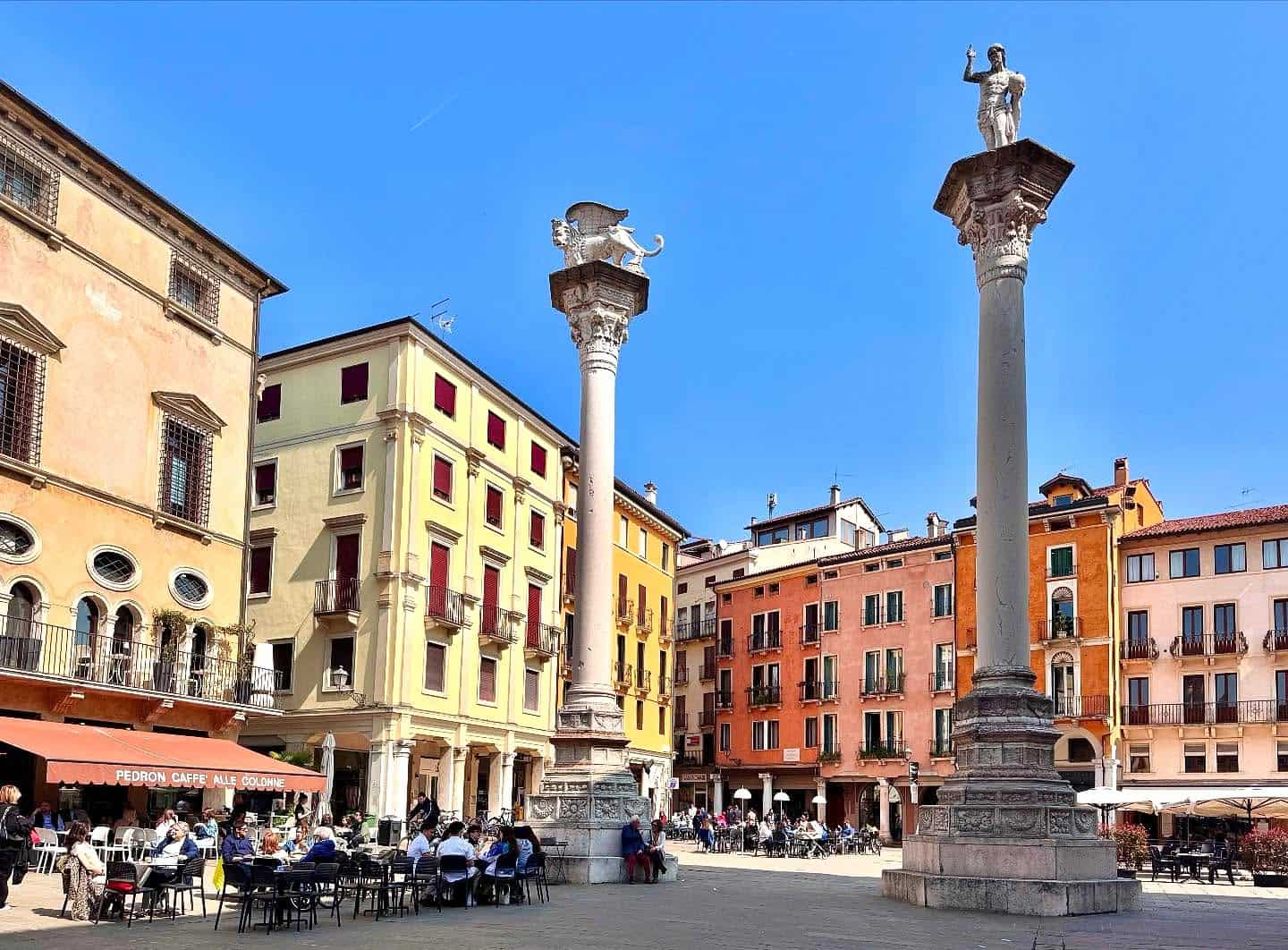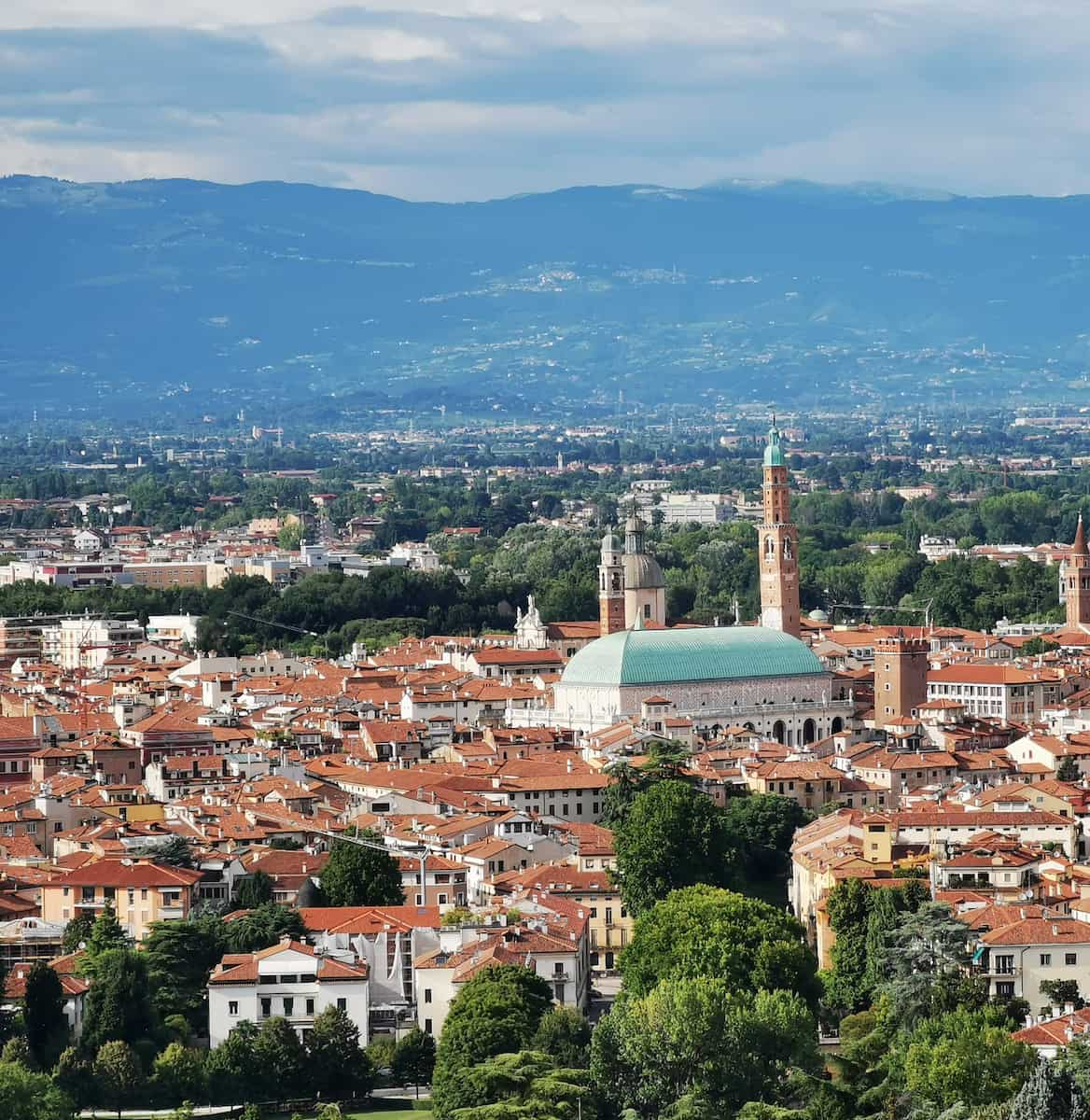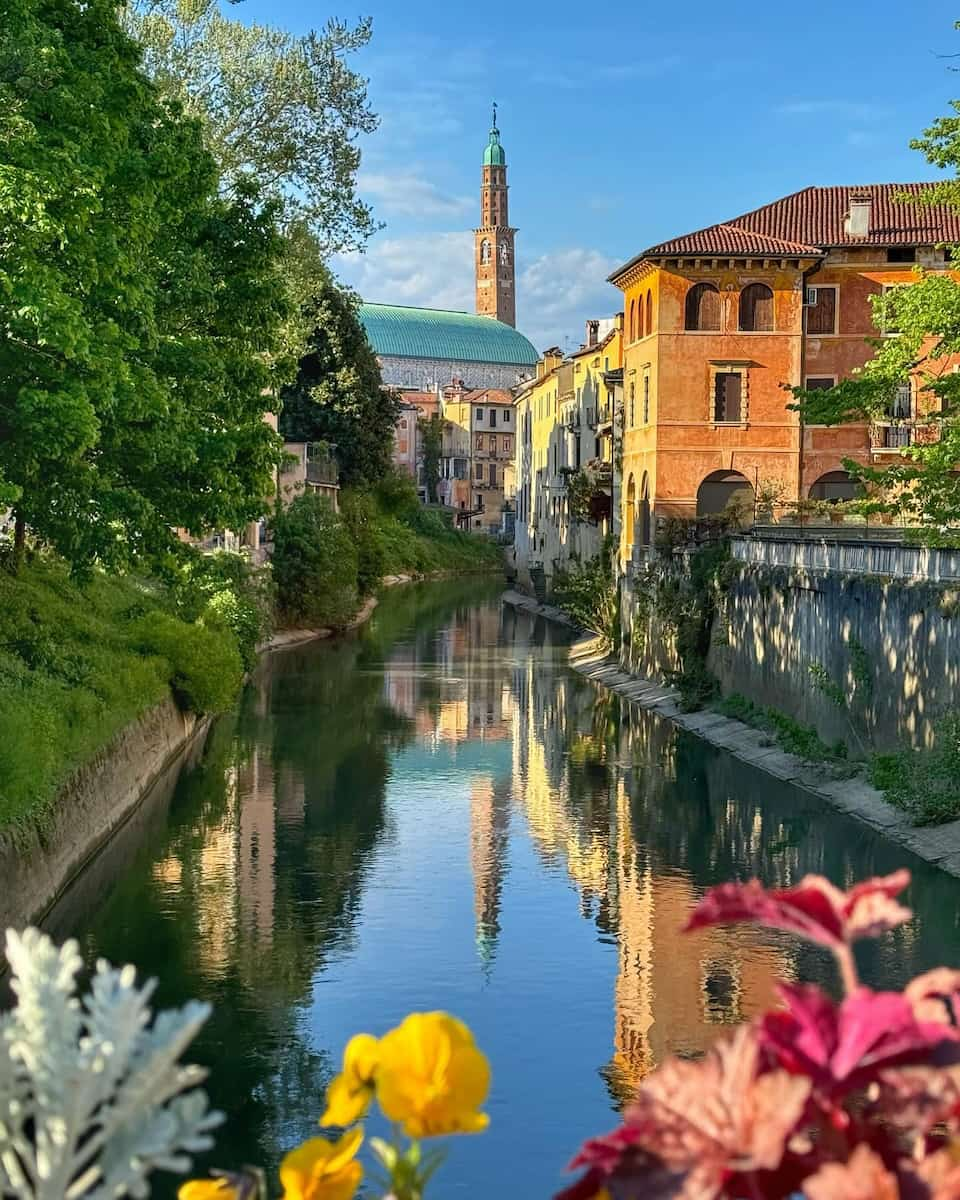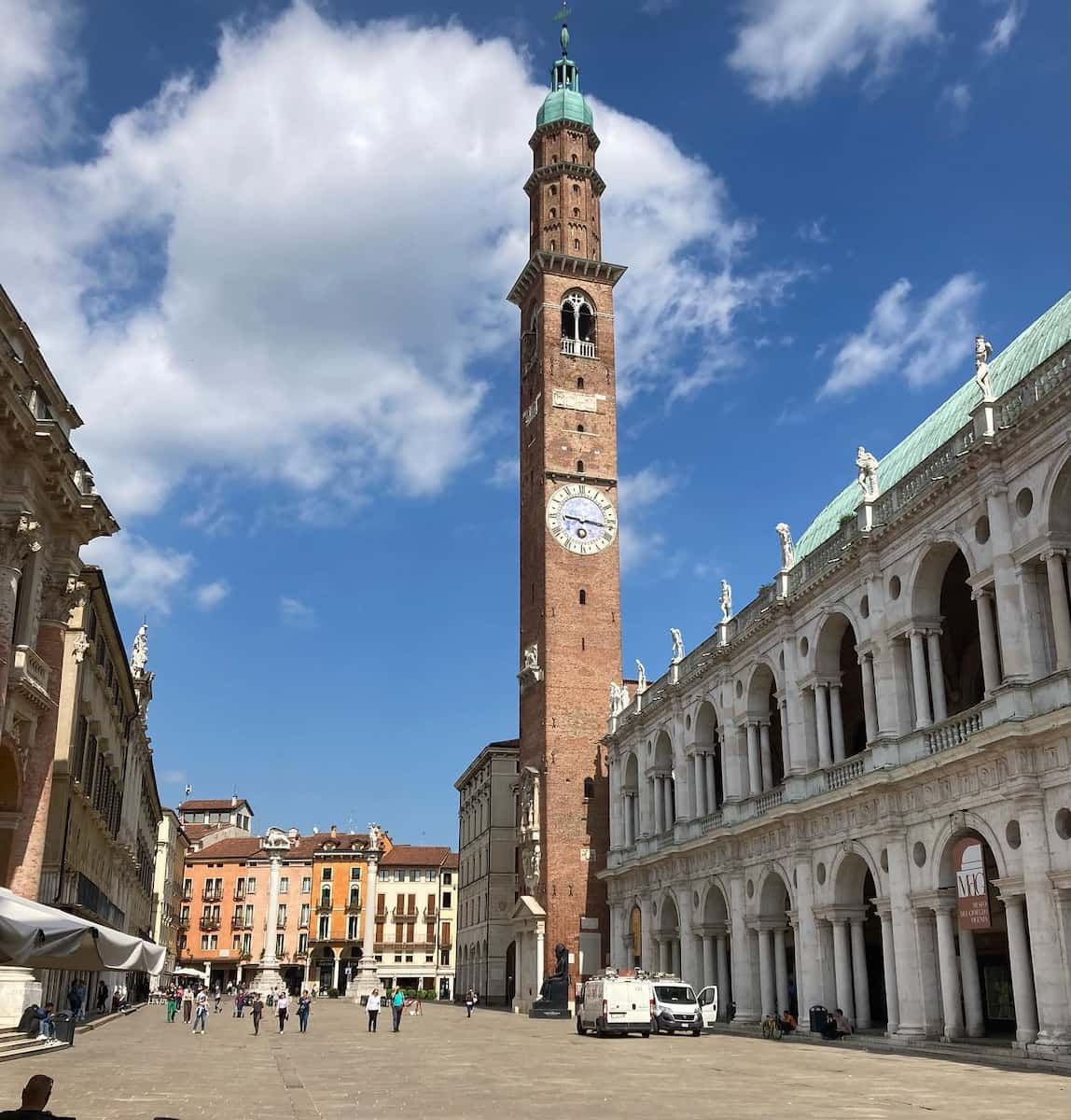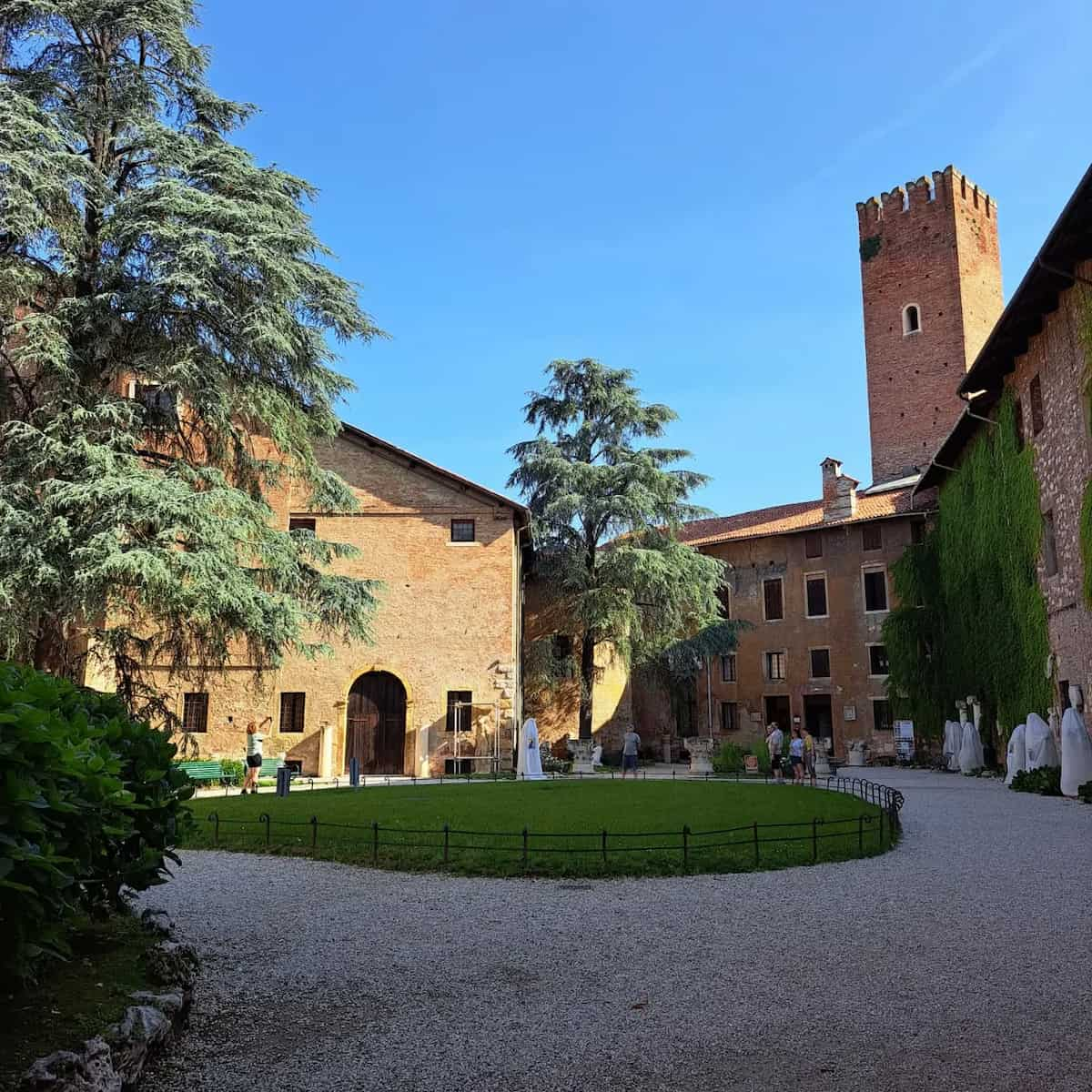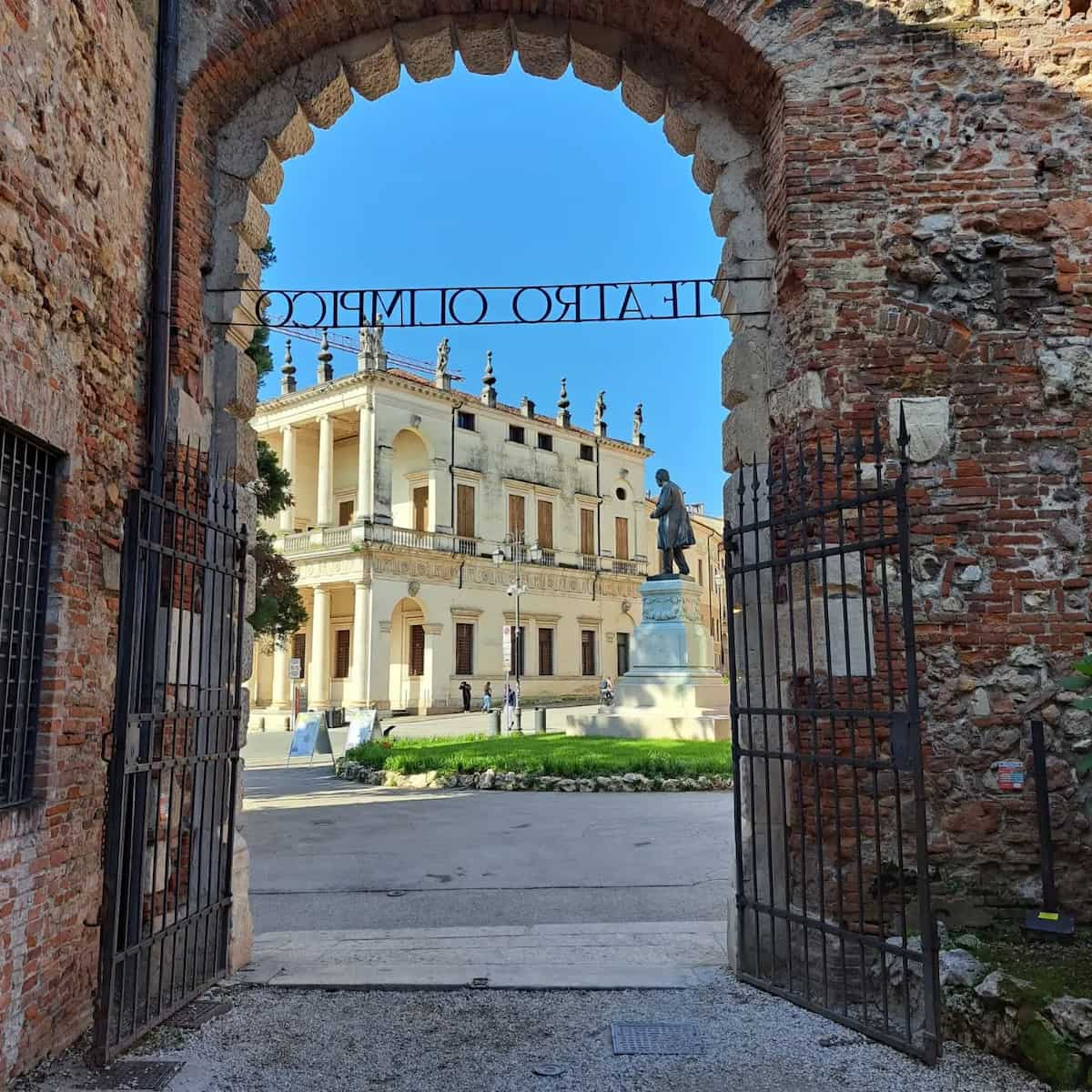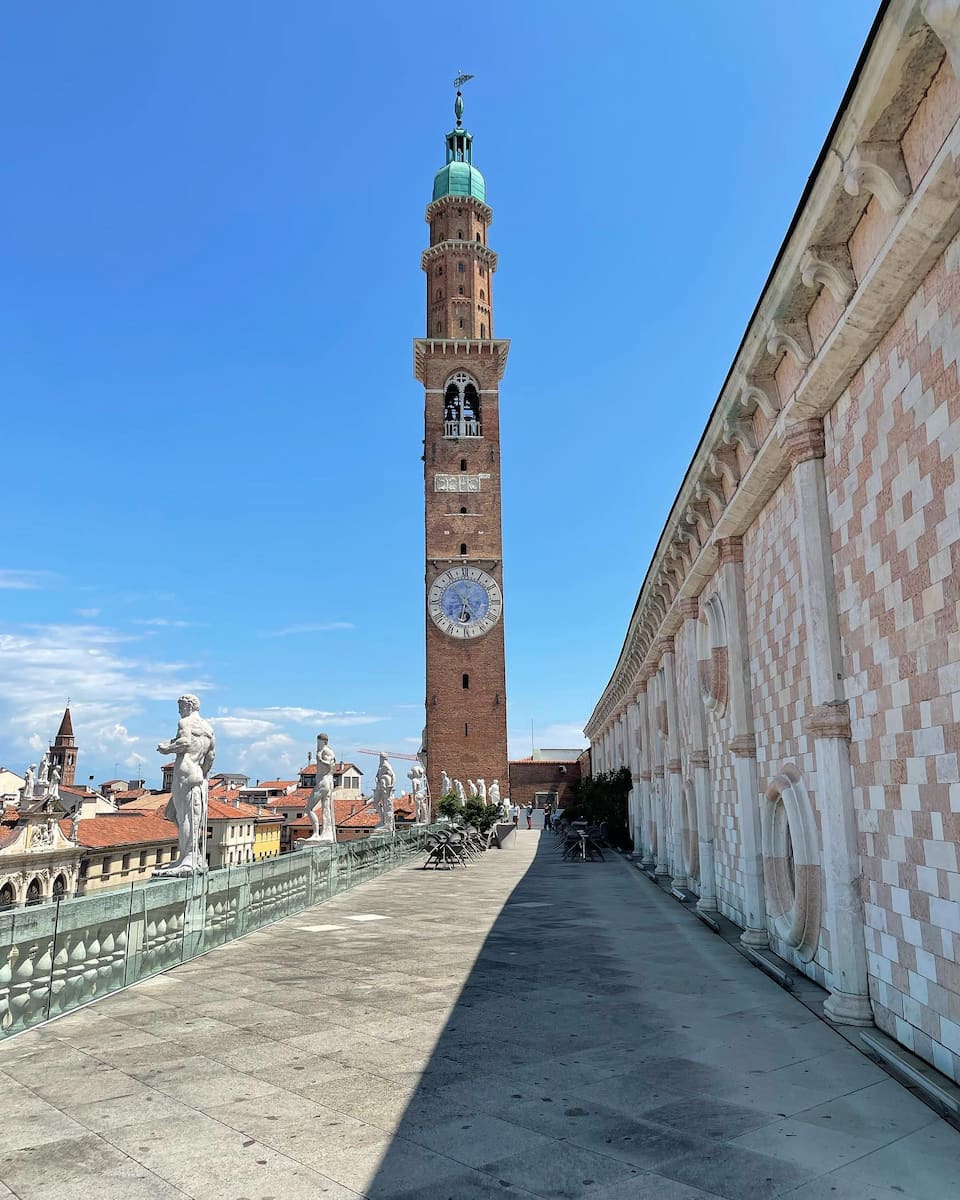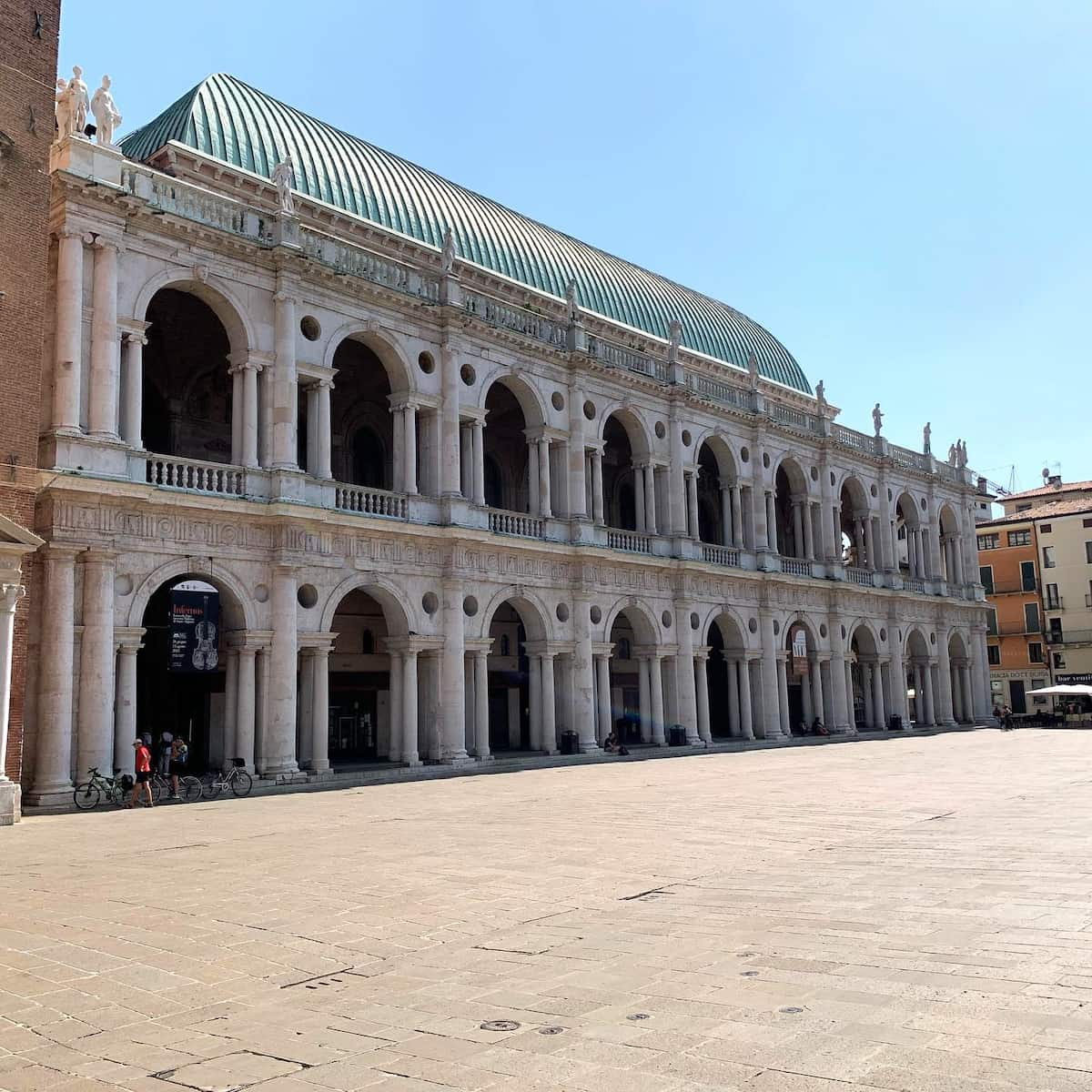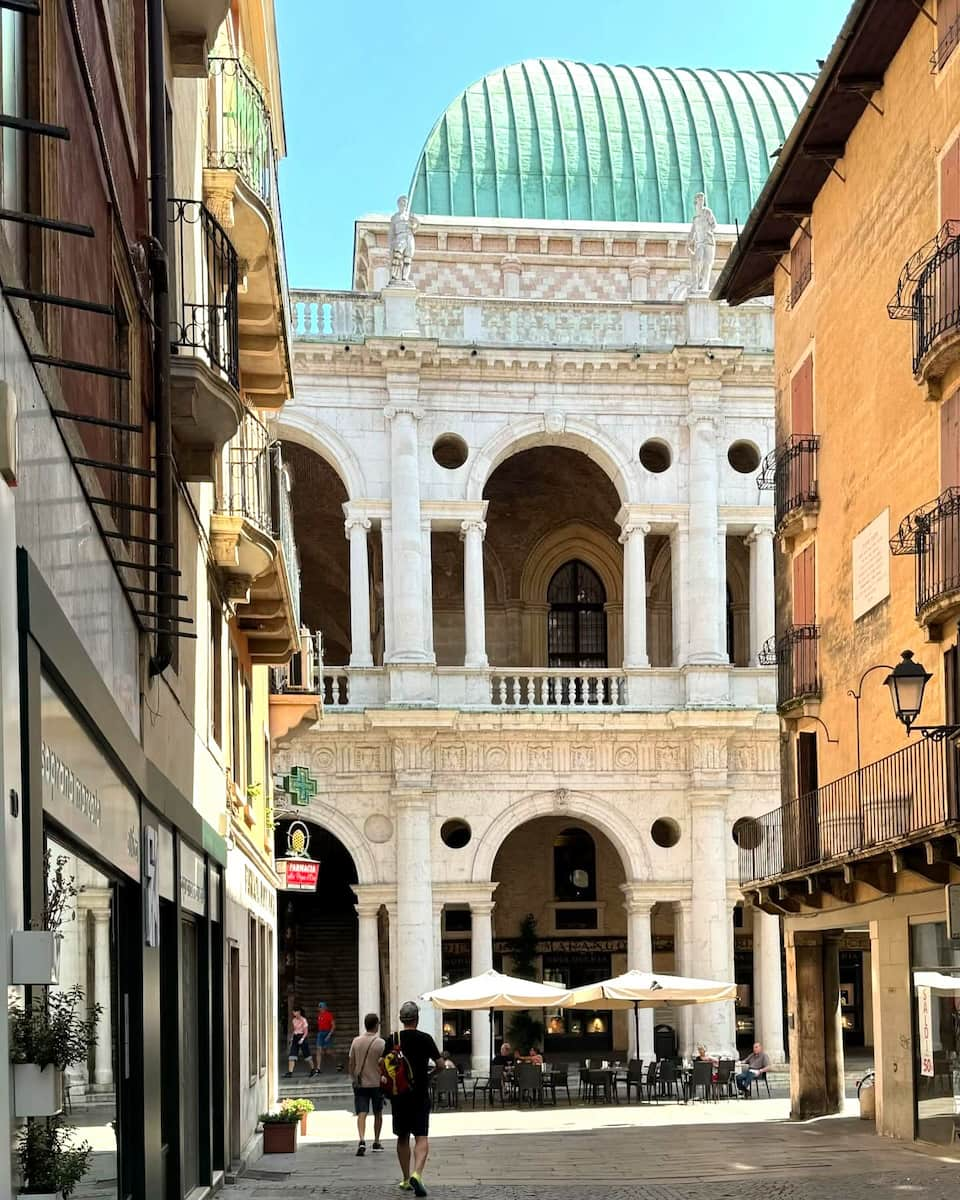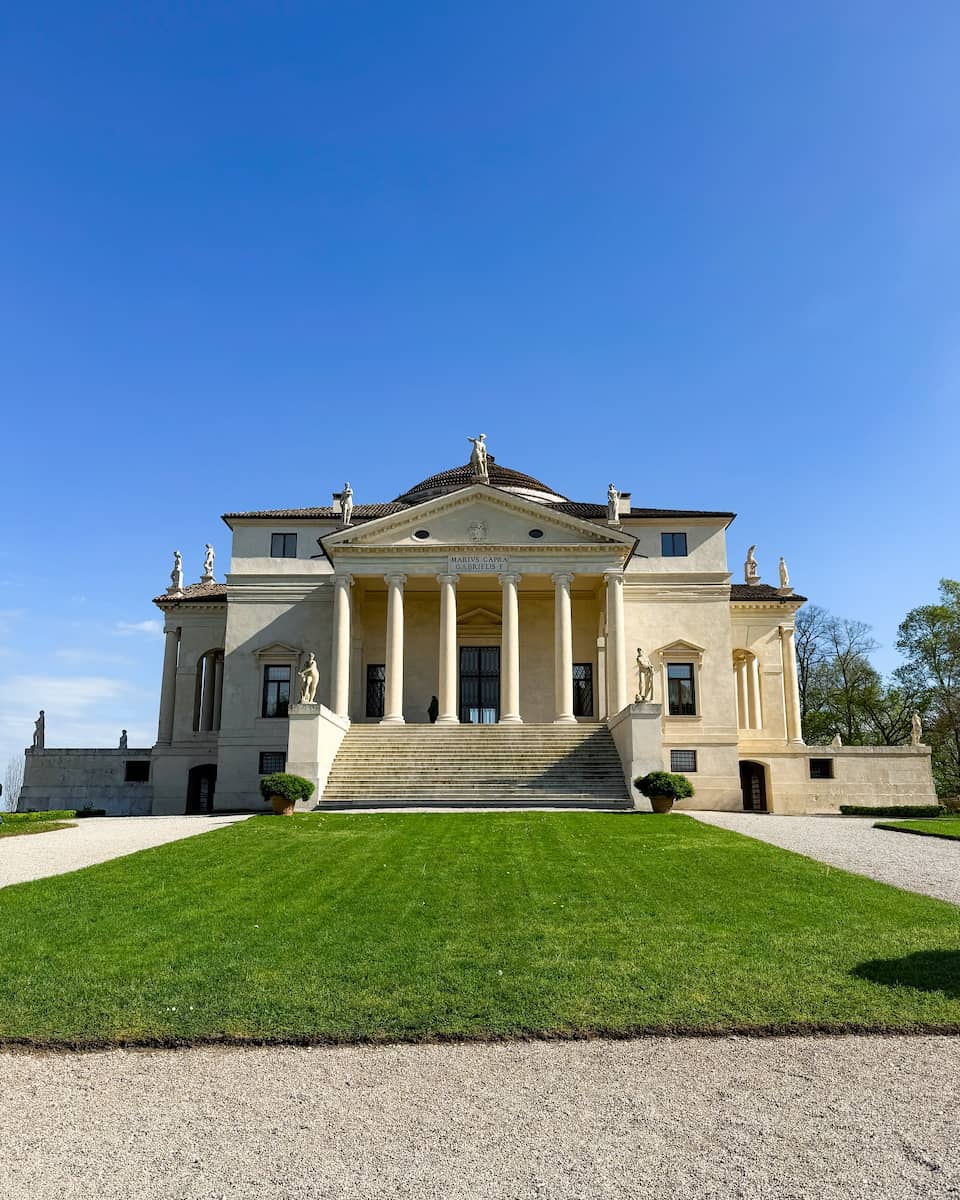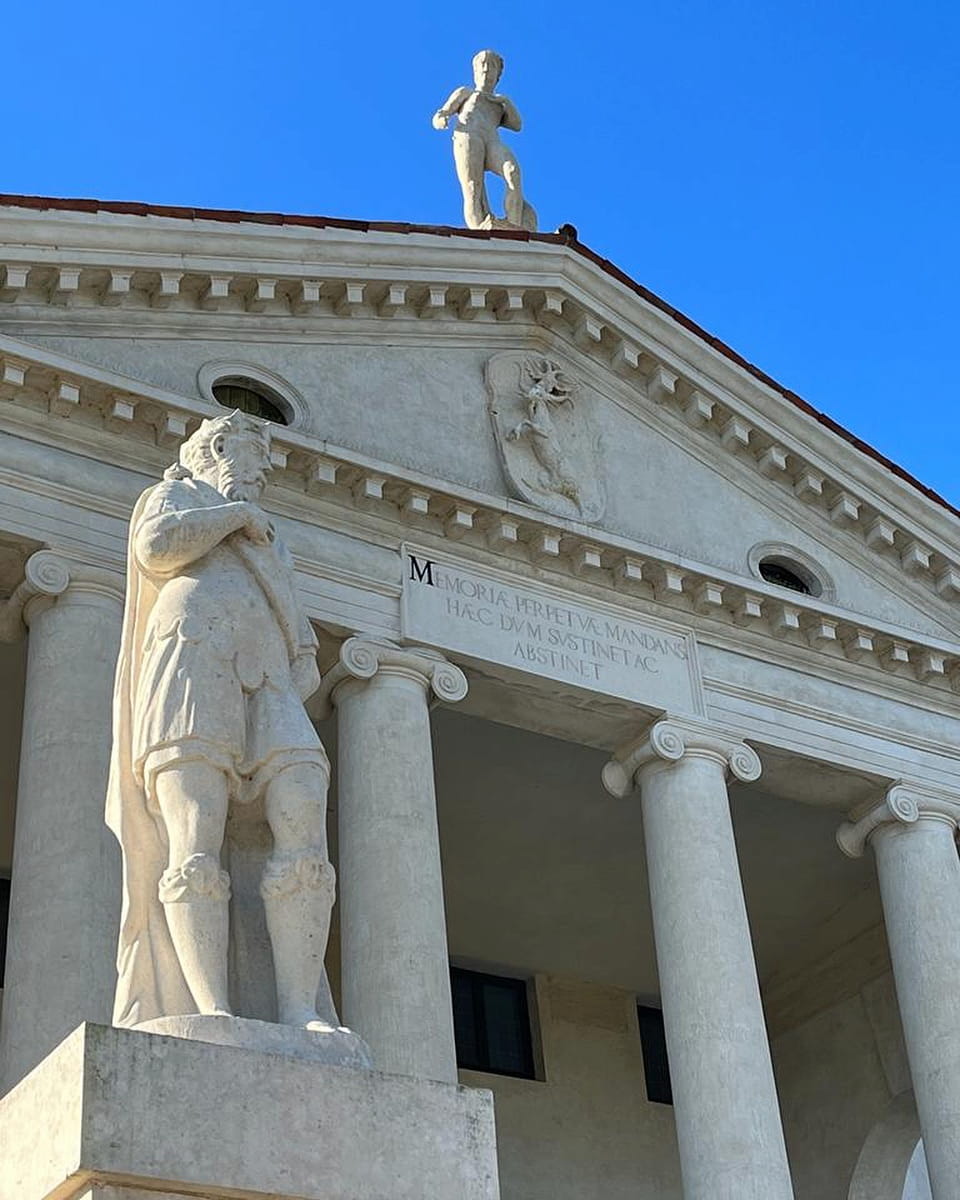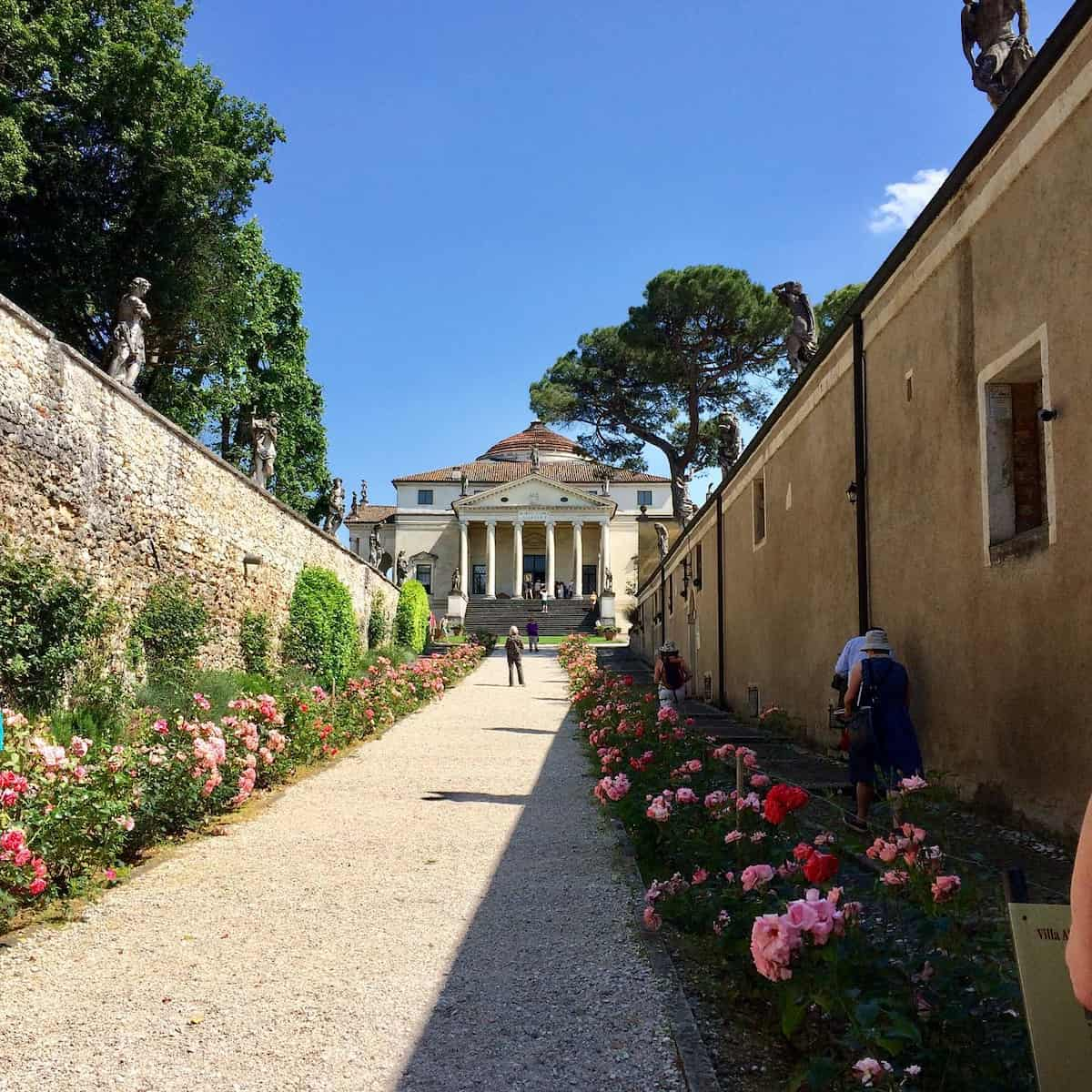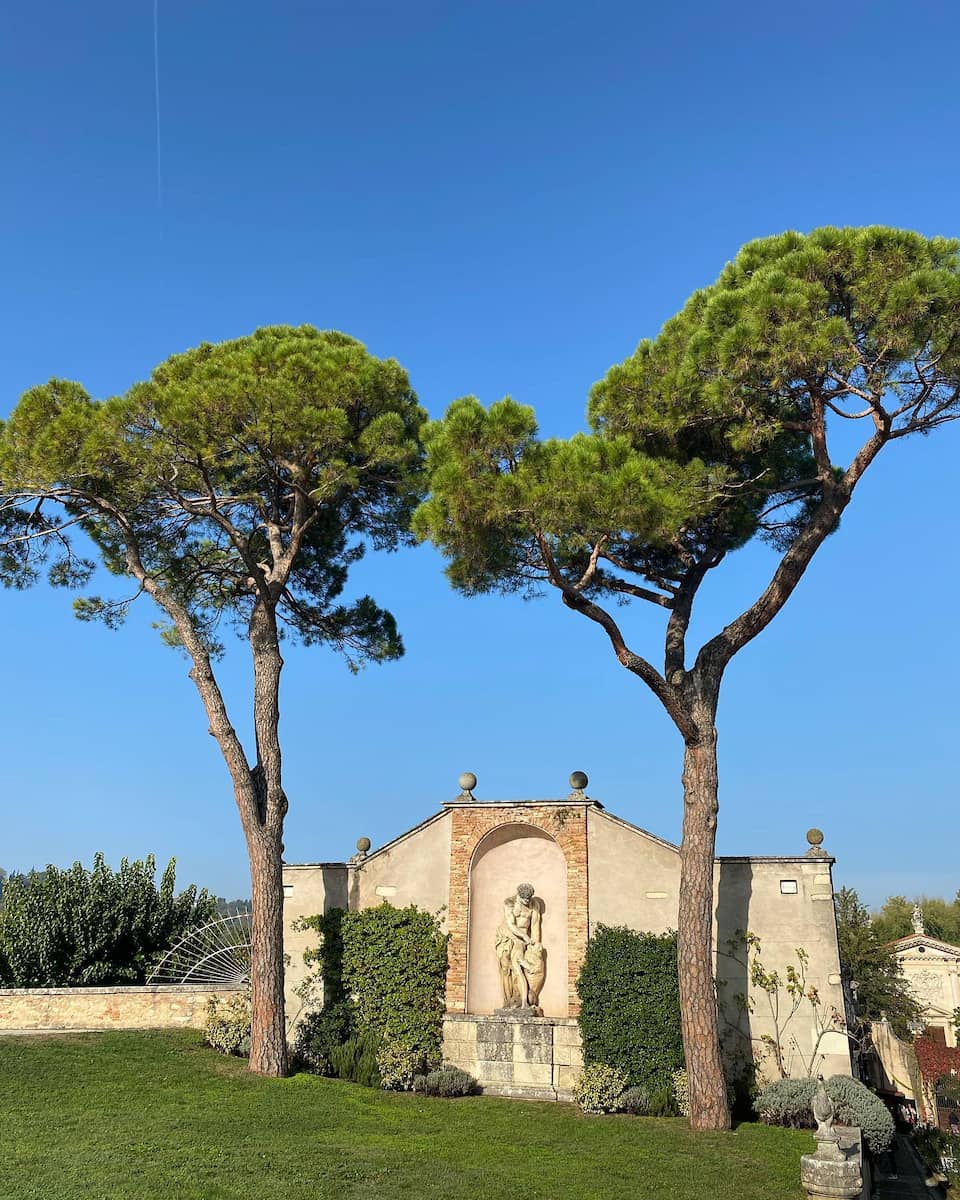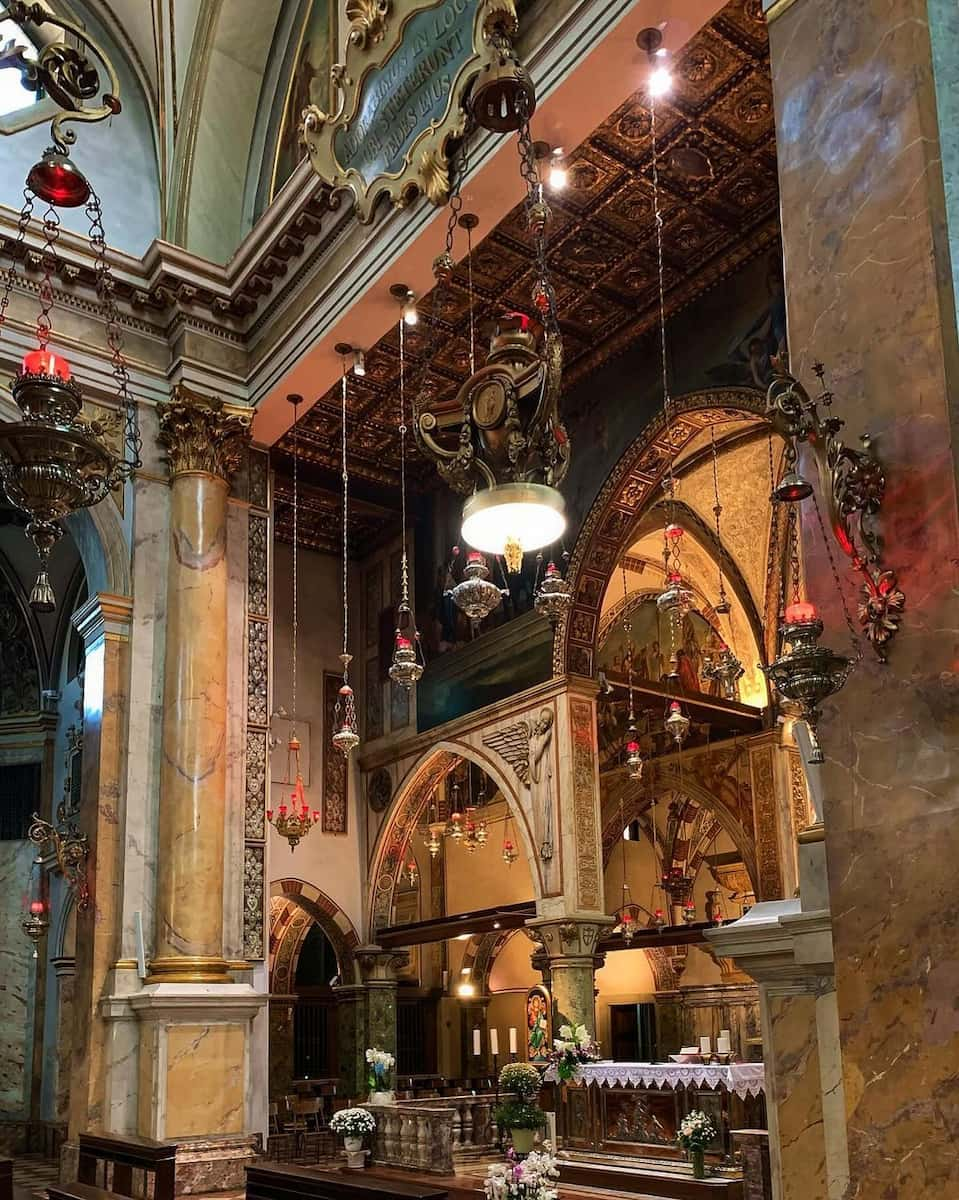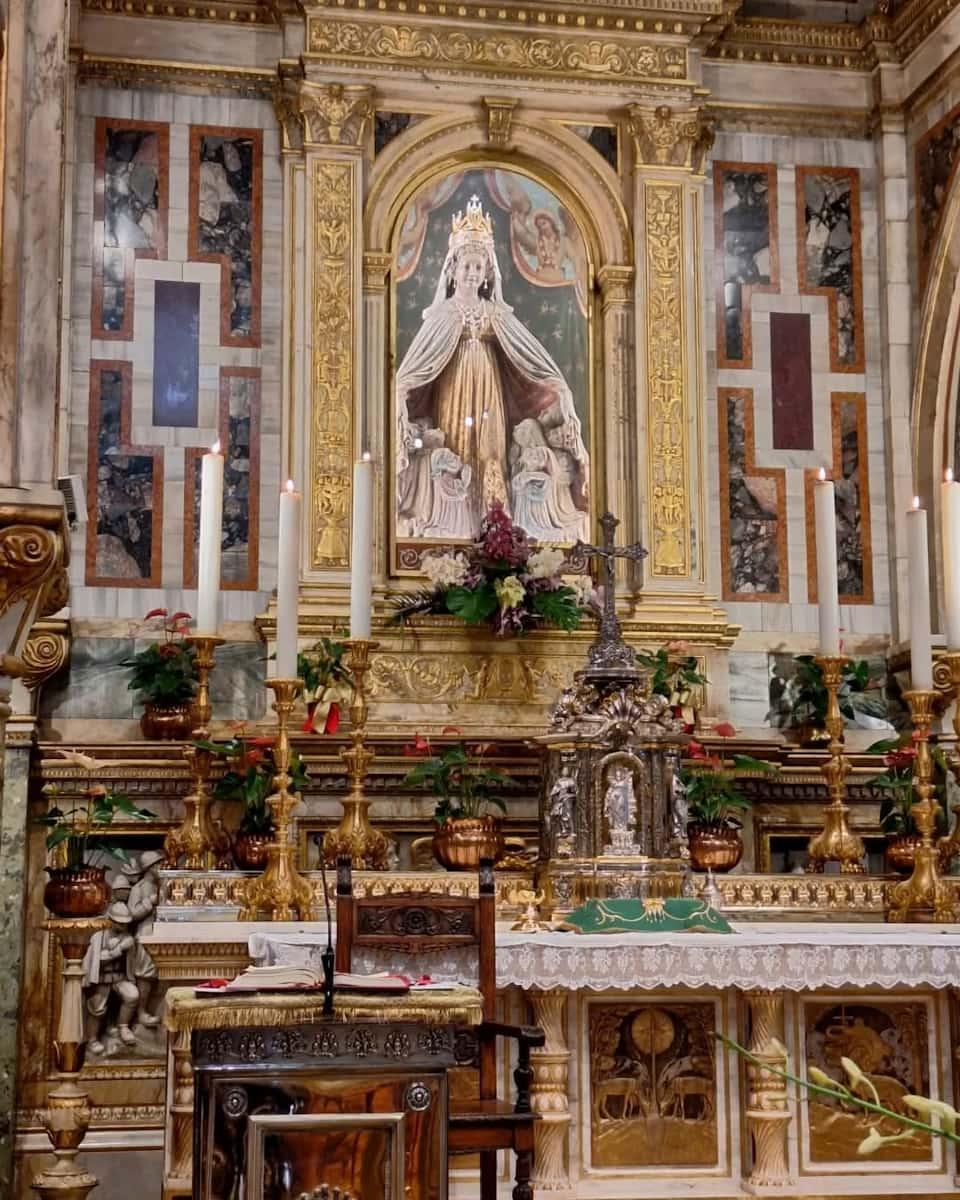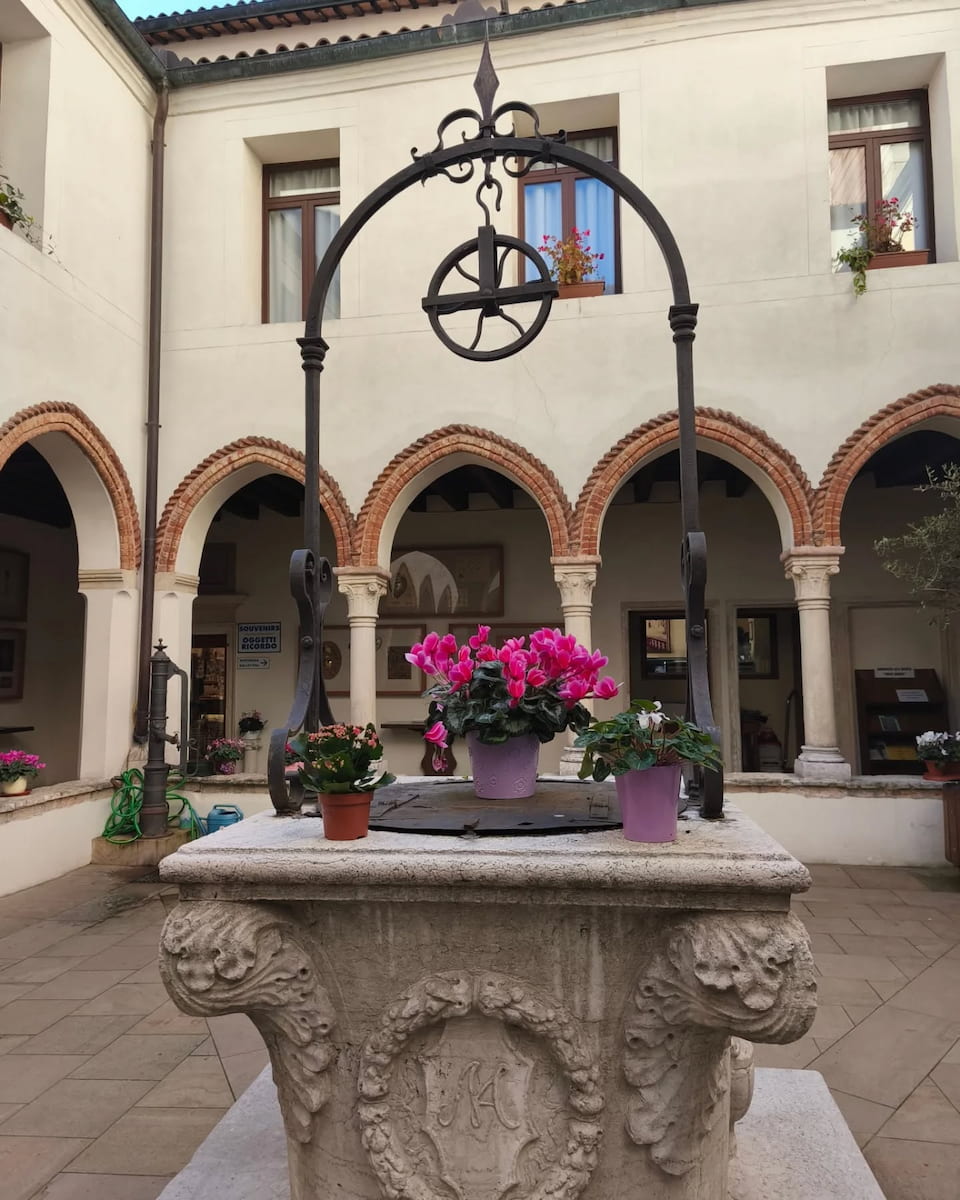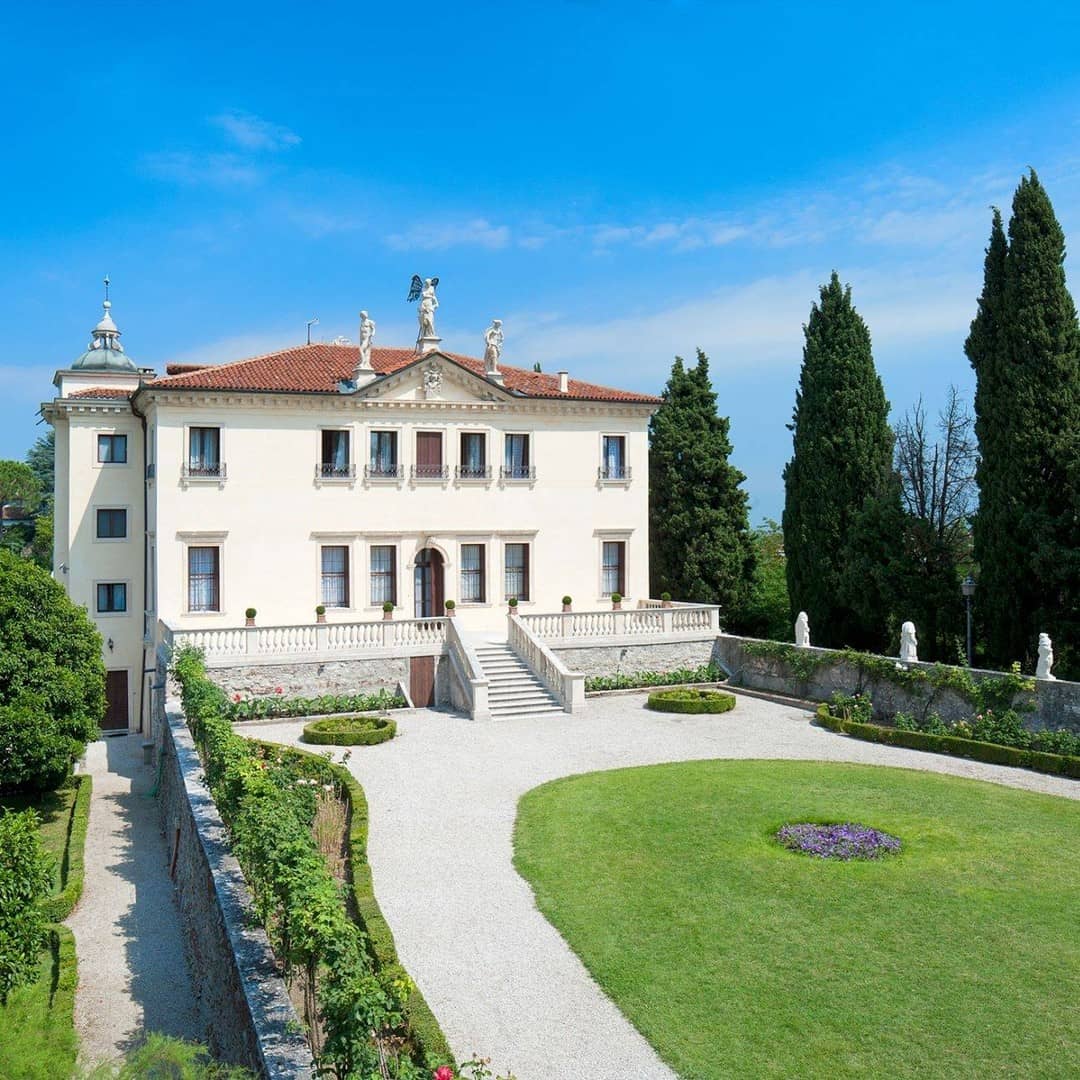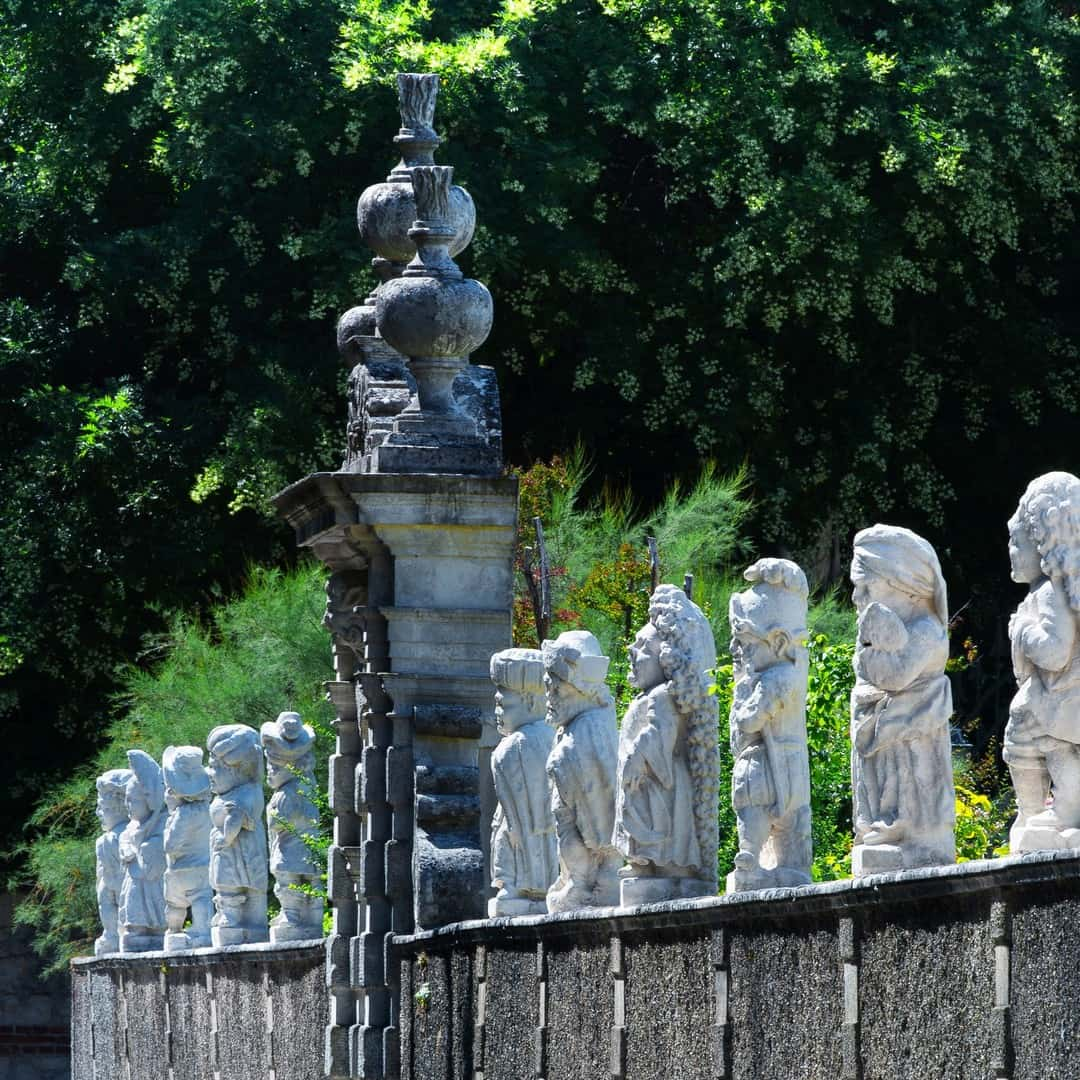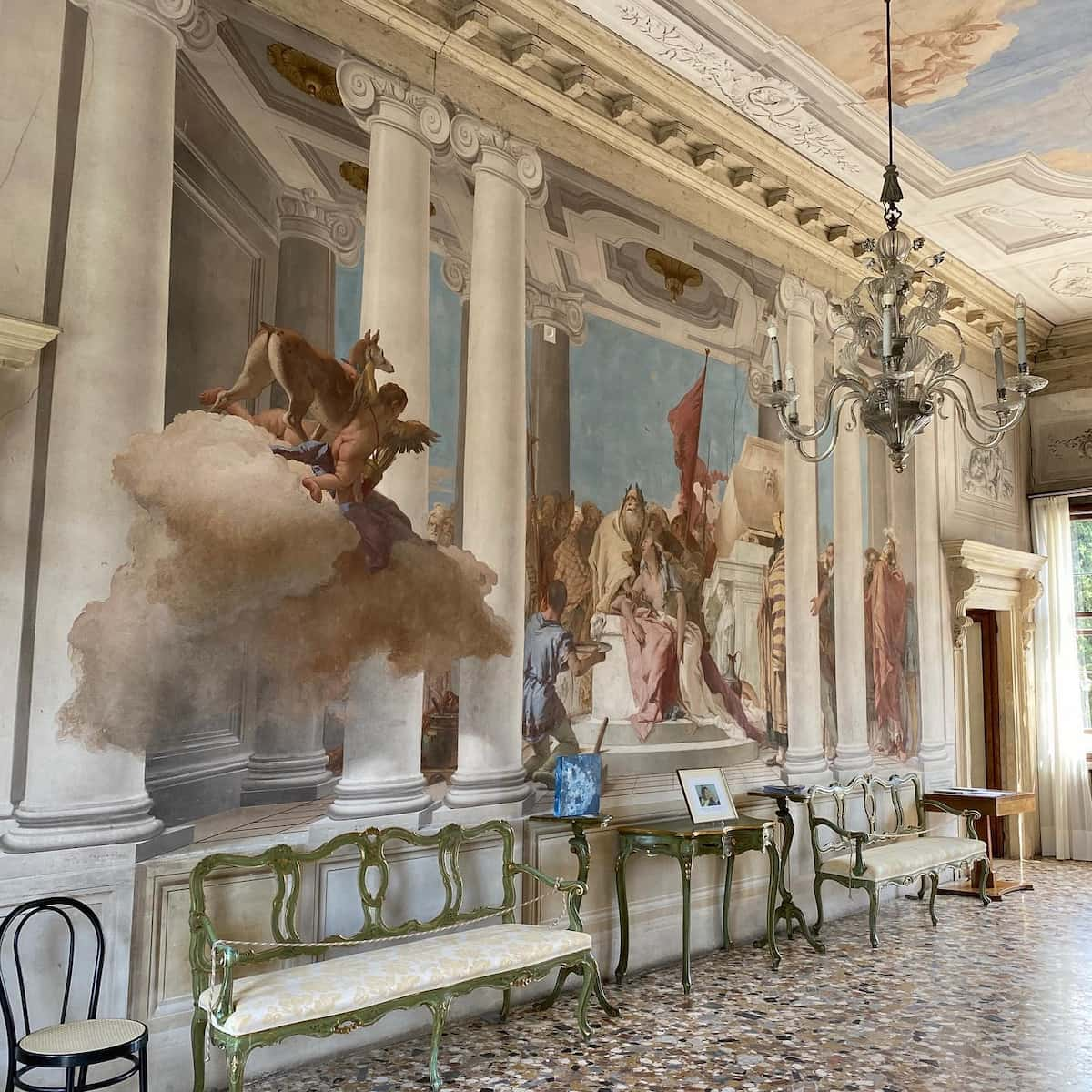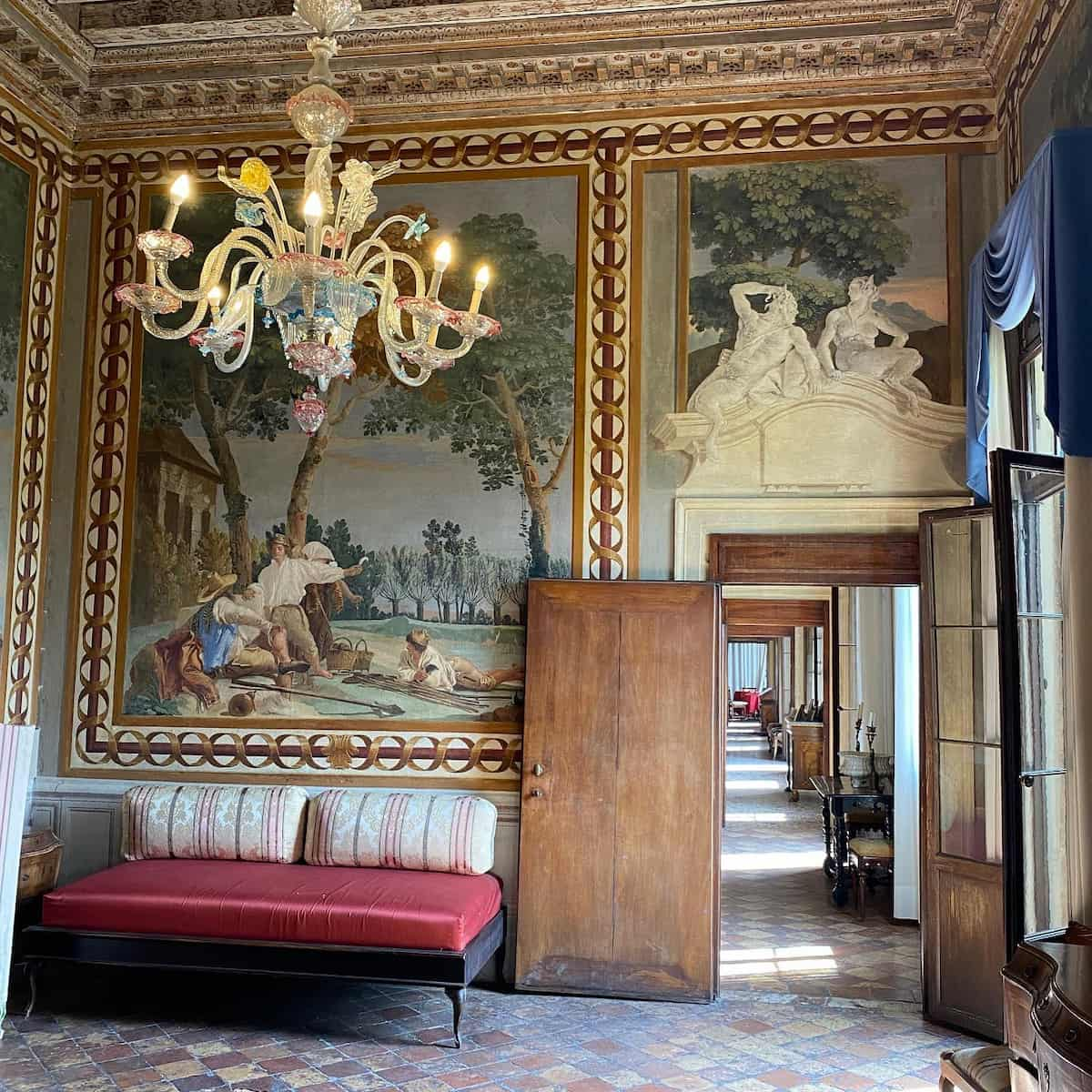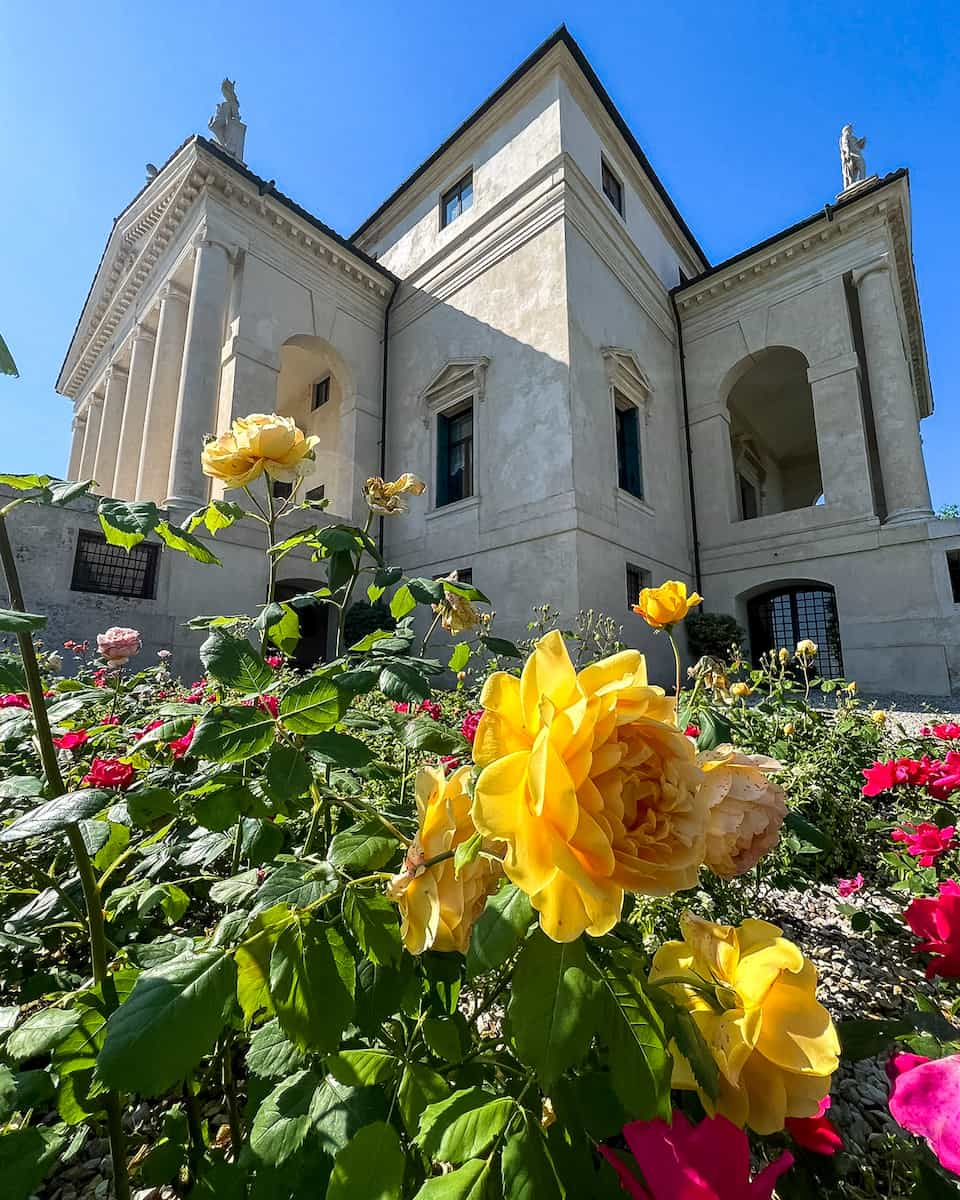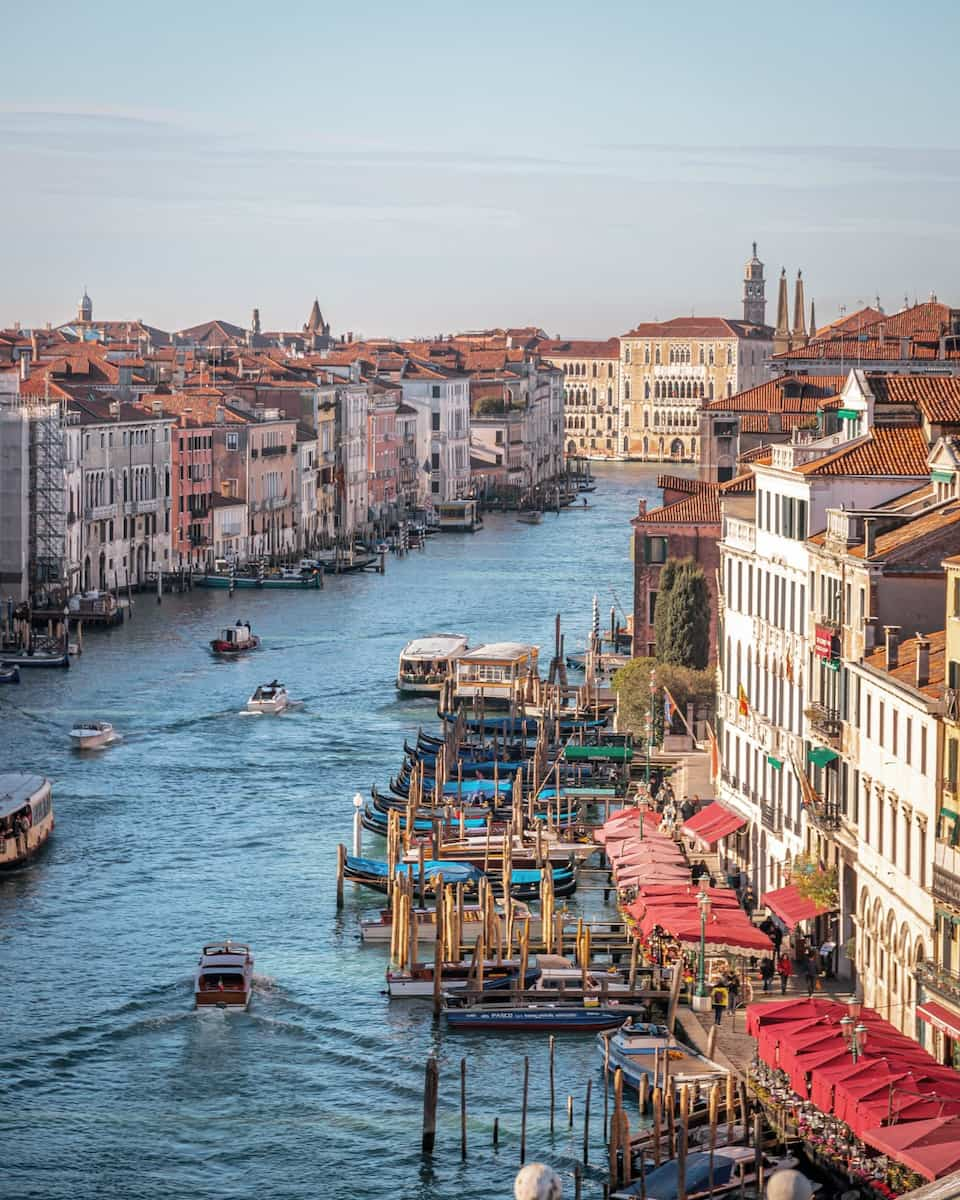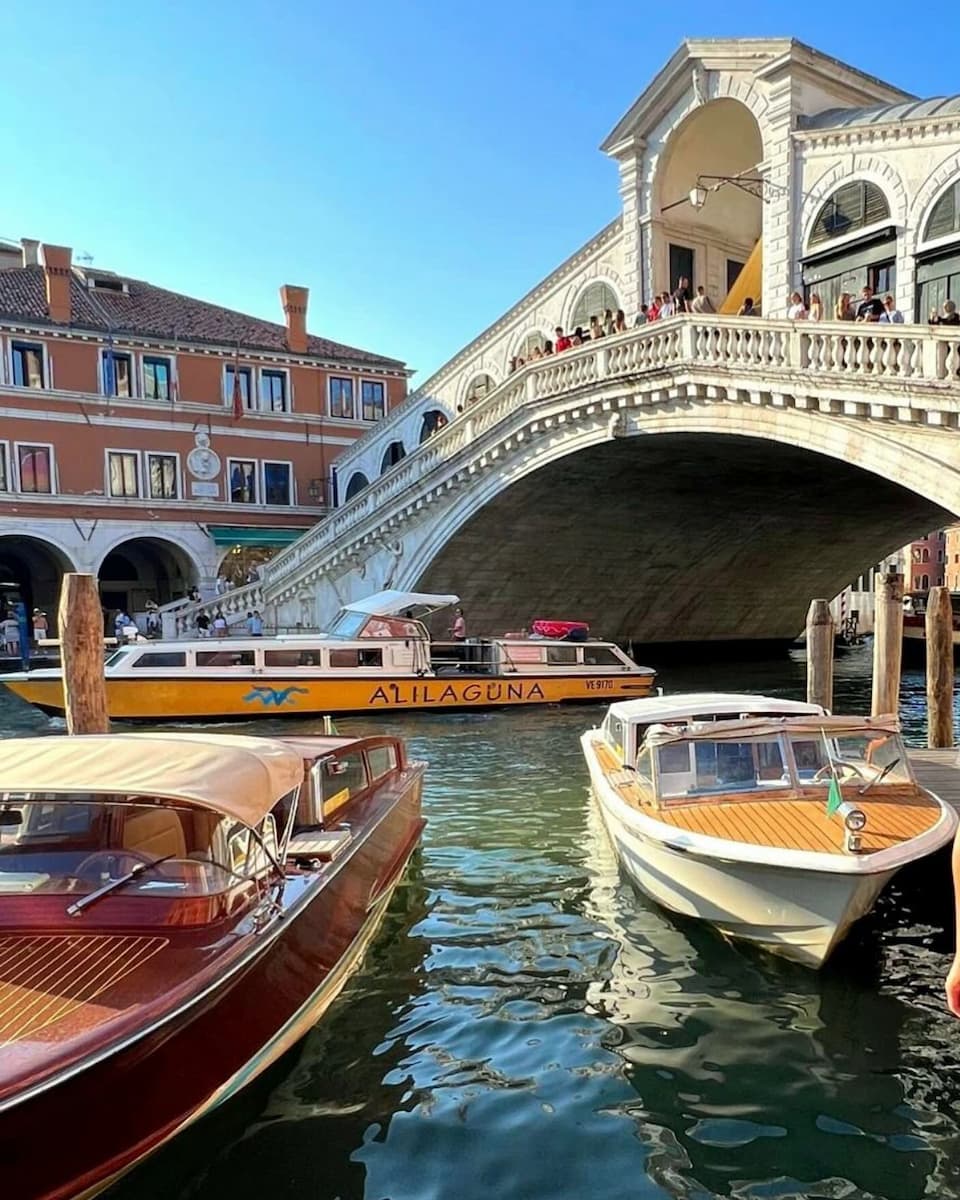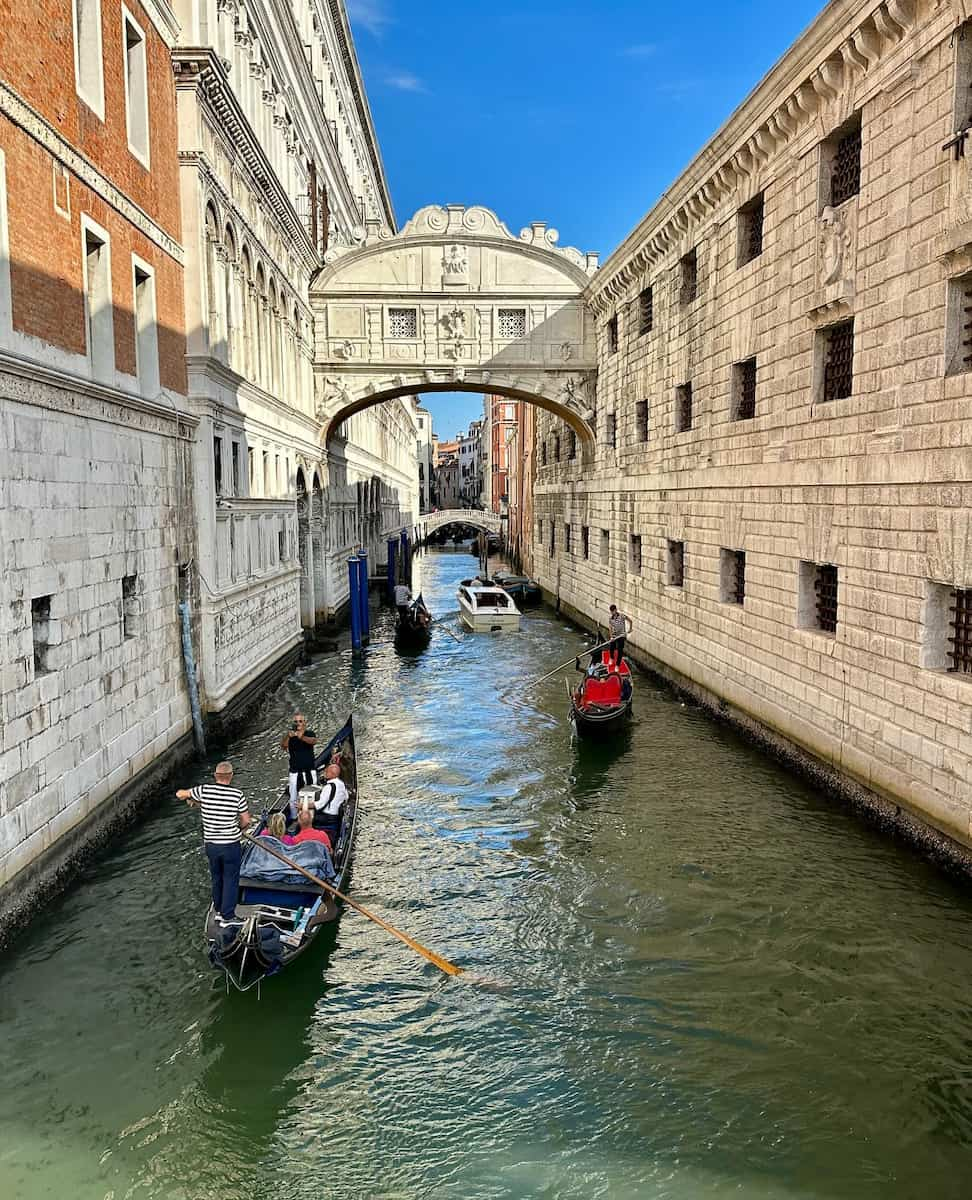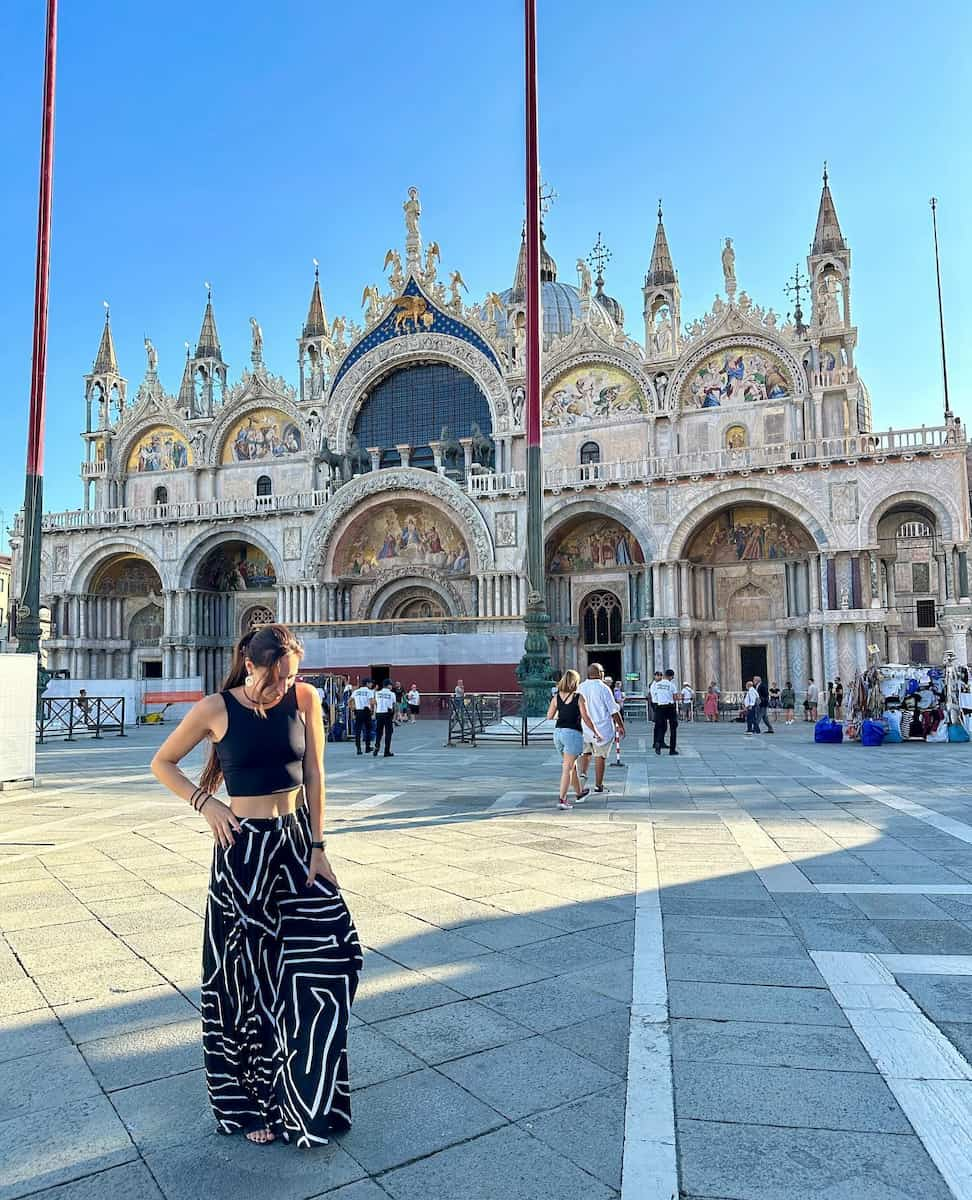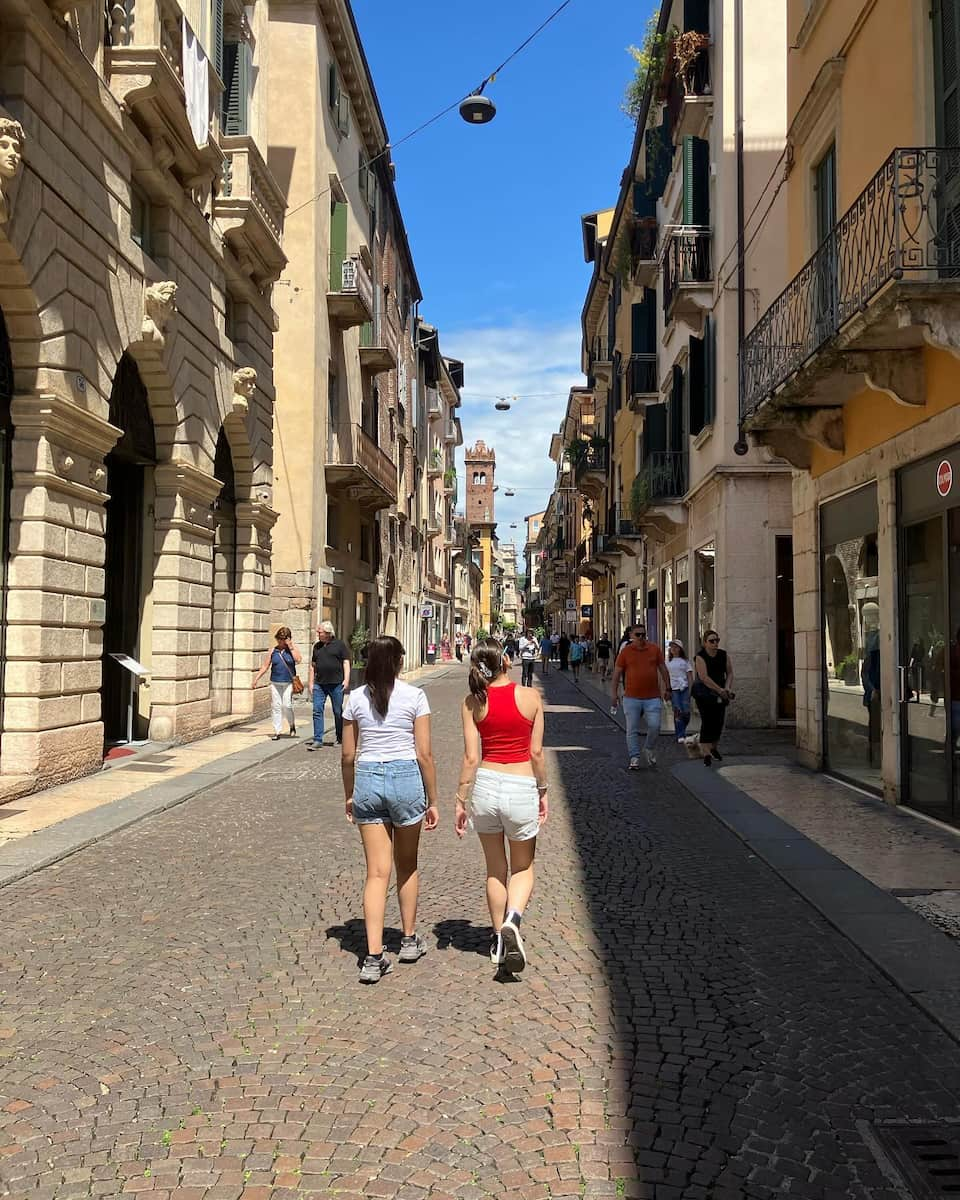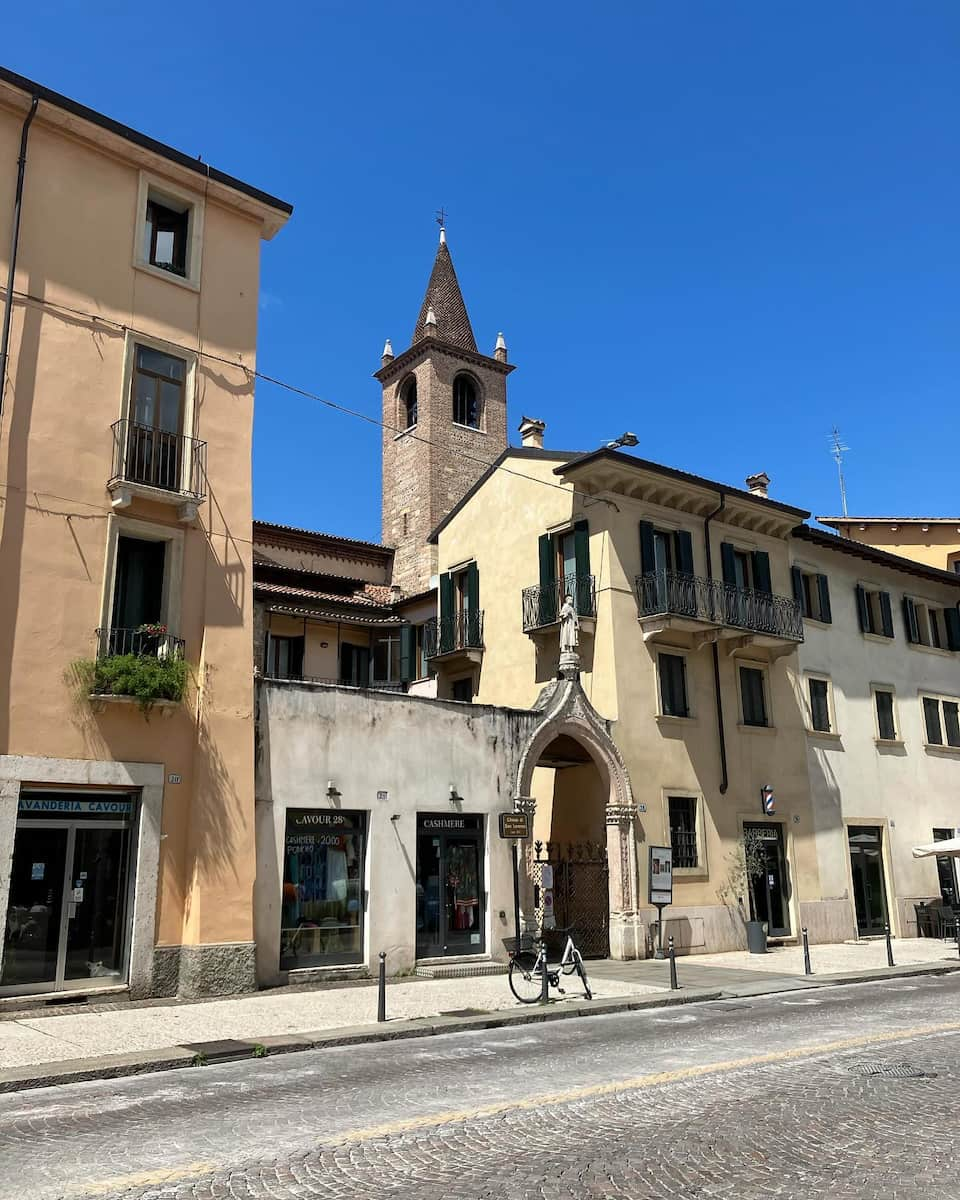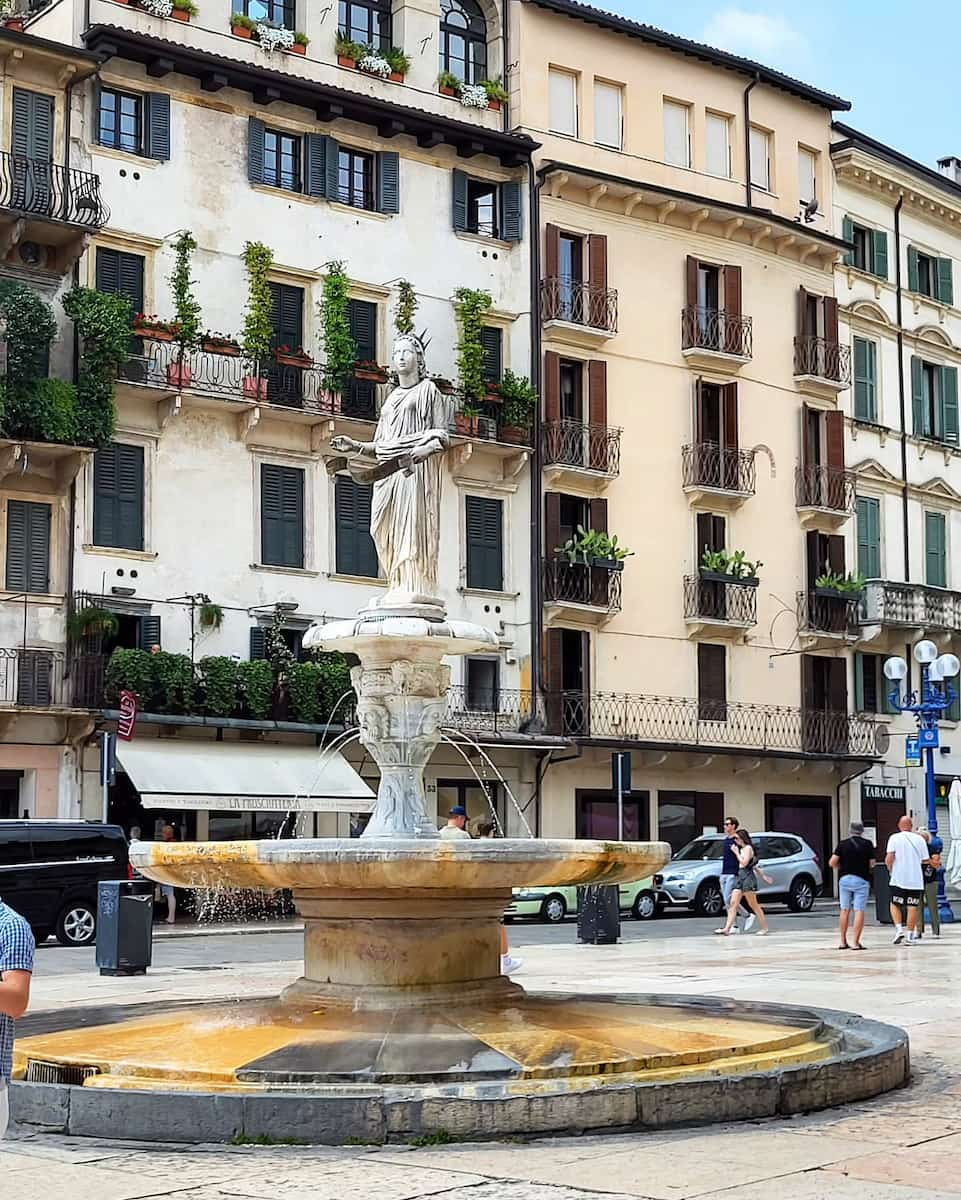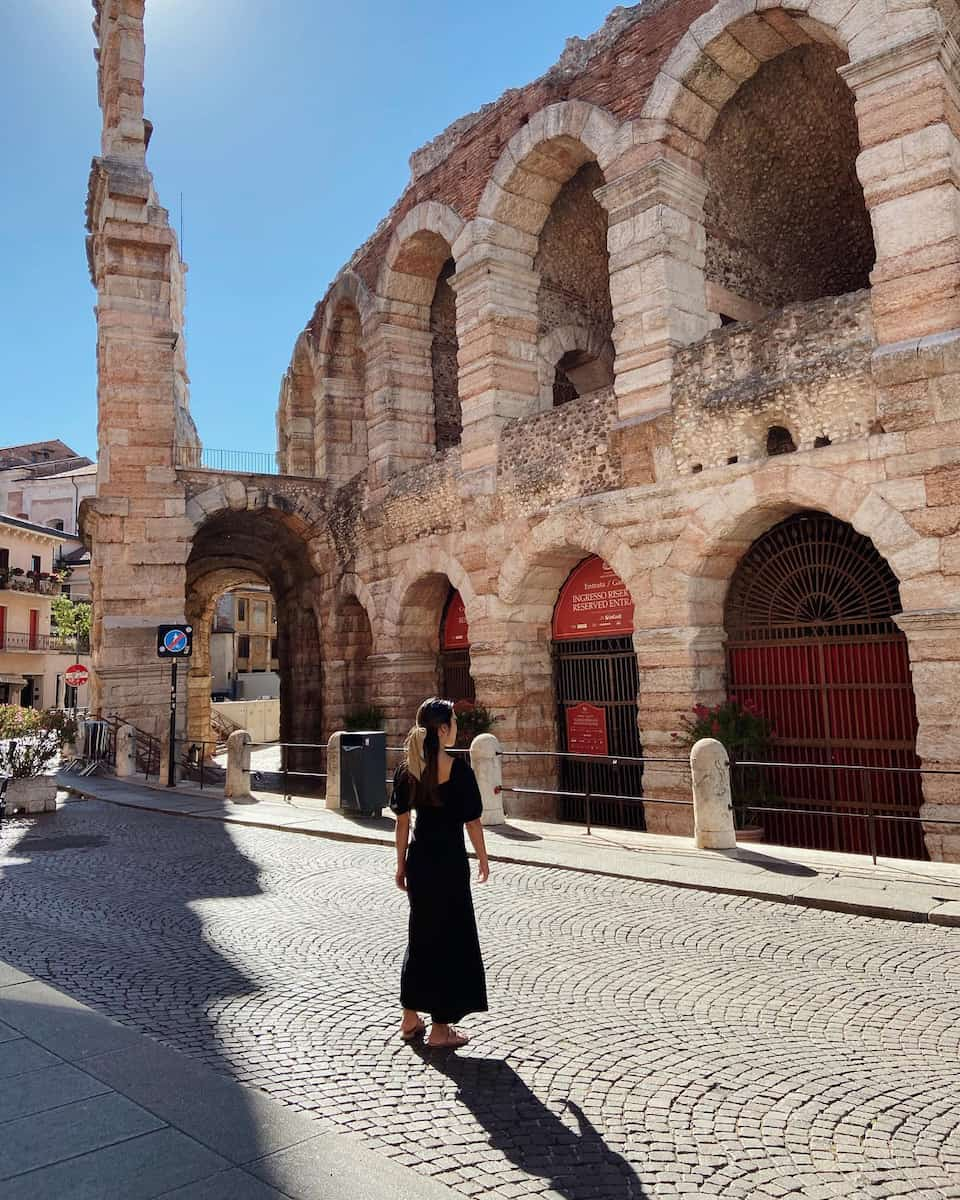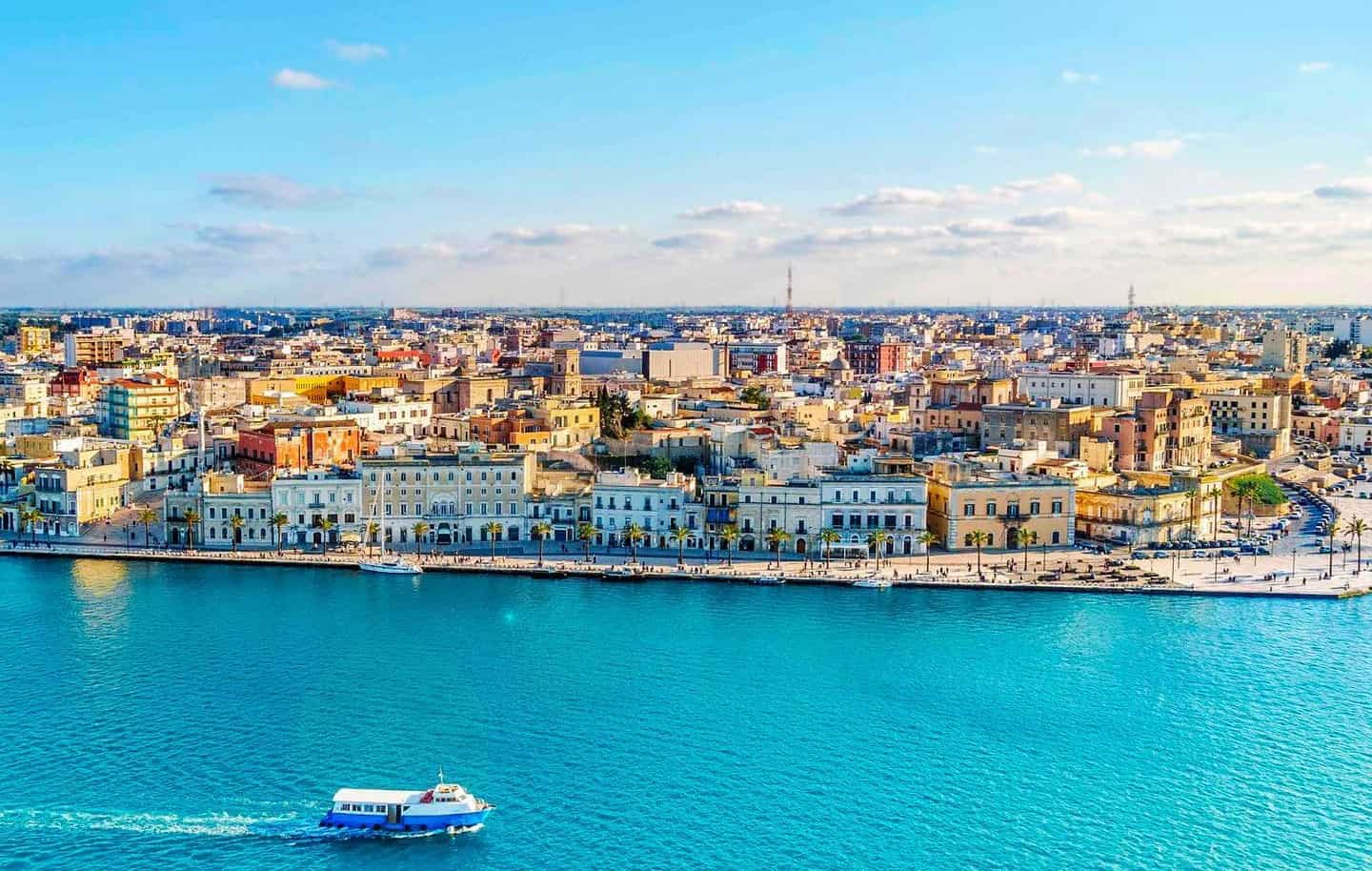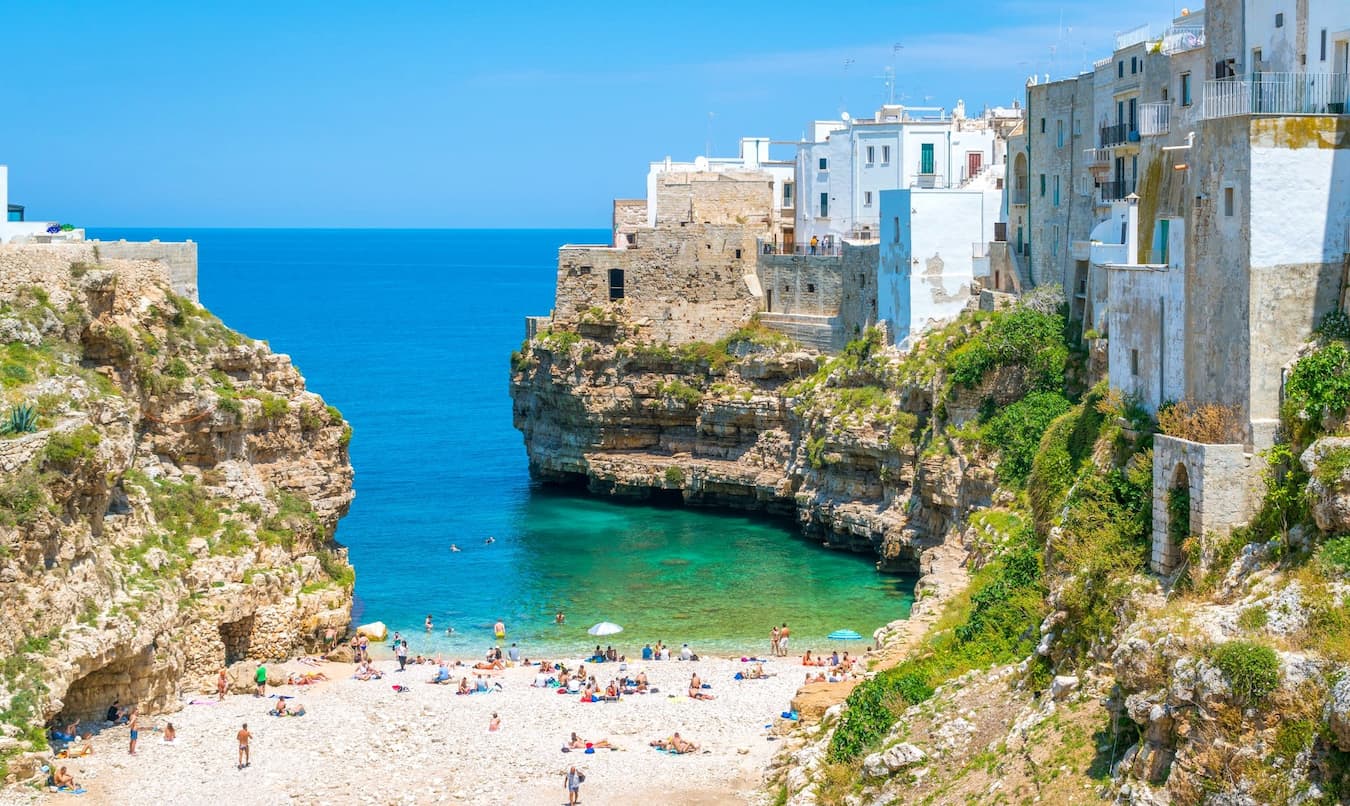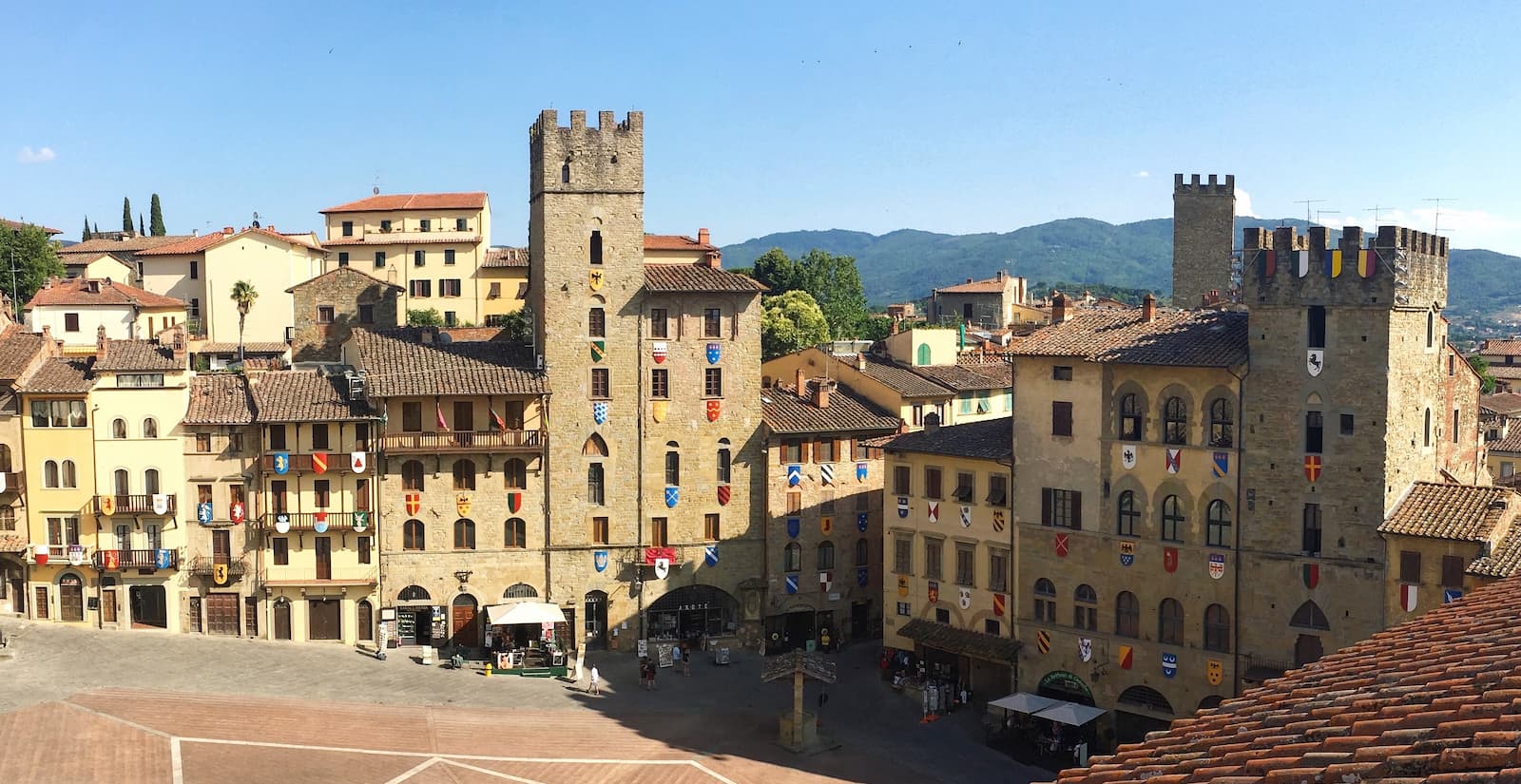Located in the heart of Northern Italy, Vicenza is a city renowned for its stunning Palladian architecture, earning it the title of a UNESCO World Heritage Site. As you explore Vicenza, you’ll discover a blend of historical charm and cultural richness, from the iconic Teatro Olimpico to the breathtaking Villa La Rotonda. Just outside the city, attractions like Villa Valmarana ai Nani and the Church of Santa Corona offer a glimpse into the region’s artistic and historical heritage. Whether you’re interested in architecture, history, or simply enjoying the local life, Vicenza provides a unique experience that showcases the best of Italy’s Renaissance past.
🏡 Where to stay in Vicenza:
- 💎 Luxury Hotel: Hotel Victoria
- 🏨 4-Star: The Glam Boutique Hotel & Apt
- 🛏️ 3-Star: Hotel Doge
- 💸 Cheap: CityHotel Cristina Vicenza
- 🏢 Apartment: AppartamentoPalladio140
- 👨👩👧👦 For Families: iHOMES-Luxury Junior Suite vista Basilica Palladio
- 🏩 For Couples: Palace Hotel & SPA La CONCHIGLIA D' ORO
👩🏻 Best guided tours:
- Palladian Classic Vicenza 1-Day Experience from €120 (⭐4.8/5)
- Vicenza and the Olympic Theatre Tour from €45 (⭐4.7/5)
- Vicenza City Sightseeing Walking Tour from €65 (⭐4.9/5)
- Discovering Vicenza by E-Bike from €35 (⭐4.8/5)
- Kid-friendly Vicenza City Tour from €55 (⭐4.9/5)
Top Attractions in Vicenza, Italy
1. Teatro Olimpico
Architectural Masterpiece. Walking into Teatro Olimpico took my breath away. This magnificent theatre, constructed between 1580 and 1585, was Andrea di Pietro della Gondola final design and wasn’t even completed until after his death. What makes it truly special is the trompe-l’œil stage scenery designed by Vincenzo Scamozzi – the oldest surviving stage set still in existence, creating an illusion of long streets receding into the distance. The wooden and stucco scaenae frons (back screen) imitates marble so convincingly that I had to touch it to believe it wasn’t real stone.
Historical Significance. The theatre was inaugurated on March 3, 1585, with a production of Sophocles’ Oedipus Rex accompanied by music from Andrea Gabrielli. As I sat in one of the 400 seats available for performances, I could almost hear the echoes of that first production. The original wooden stage set, meant to represent the streets of Thebes, has miraculously survived for over 400 years despite bombings and other dangers throughout history.
Unique Experiences. I was lucky enough to visit during one of the theatre’s two performance seasons – classical plays in autumn and the Il Suono dell’Olimpico festival in spring. The absence of heating or air conditioning (to protect the delicate wooden structures) meant I needed a light jacket, but the authentic atmosphere was well worth this minor inconvenience. The original lighting system of glass oil lamps, though rarely used today due to fire risk, must have created an absolutely magical atmosphere.
UNESCO Heritage. Since 1994, Teatro Olimpico has been part of the UNESCO World Heritage Site “City of Vicenza and the Palladian Villas of the Veneto.” Walking through this living piece of history, I understood exactly why it deserved this recognition. Along with Teatro all’antica in Sabbioneta and Teatro Farnese in Parma, it’s one of only three historical theatres still in existence.
| Category | Information |
|---|---|
| Price | €11 for a standard ticket |
| Hours | Tuesday to Sunday, 9:00 AM – 5:00 PM (last entry at 4:30 PM) from September to June; 10:00 AM – 6:00 PM (last entry at 5:30 PM) from July to August |
| Location | Piazza Matteotti, 11, 36100 Vicenza, Italy |
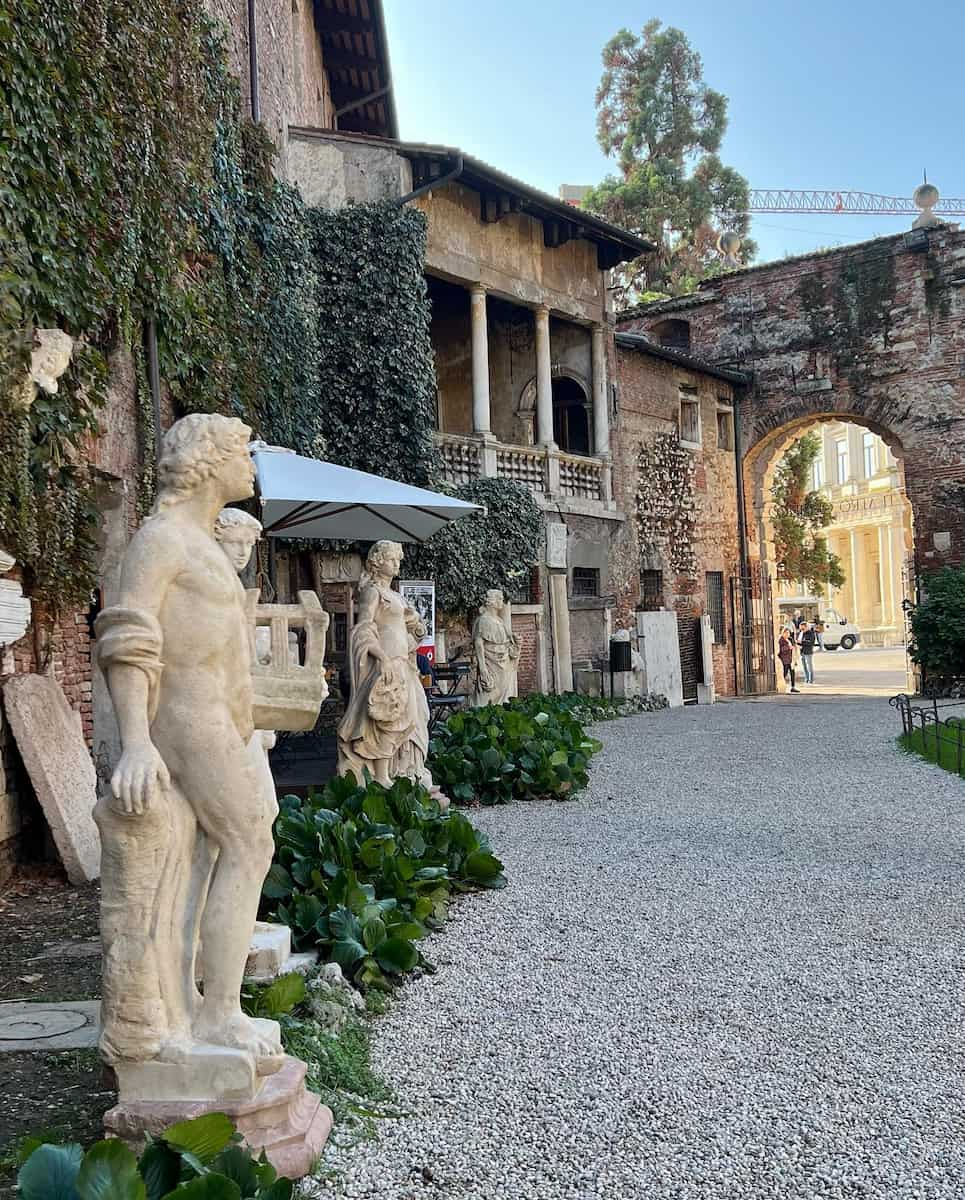
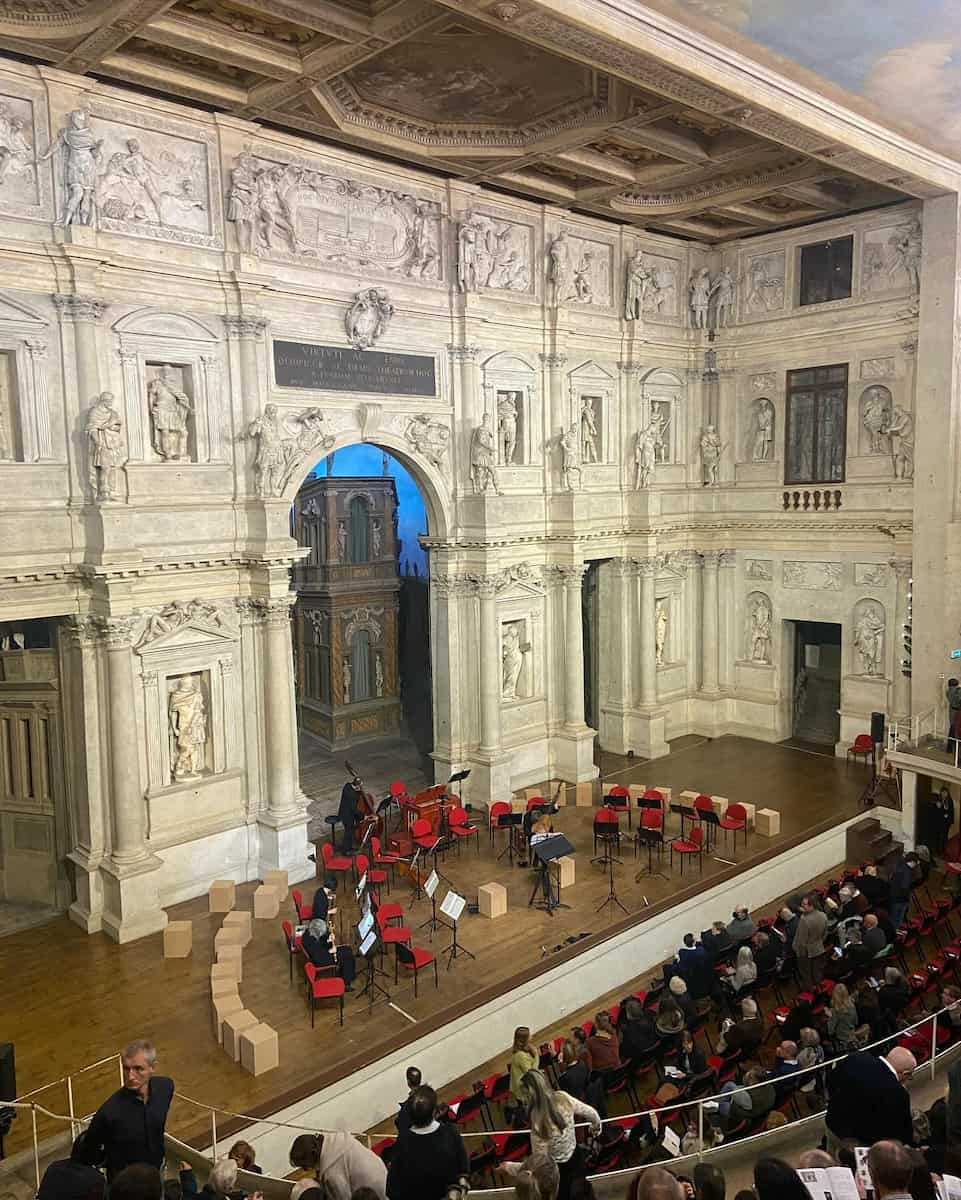
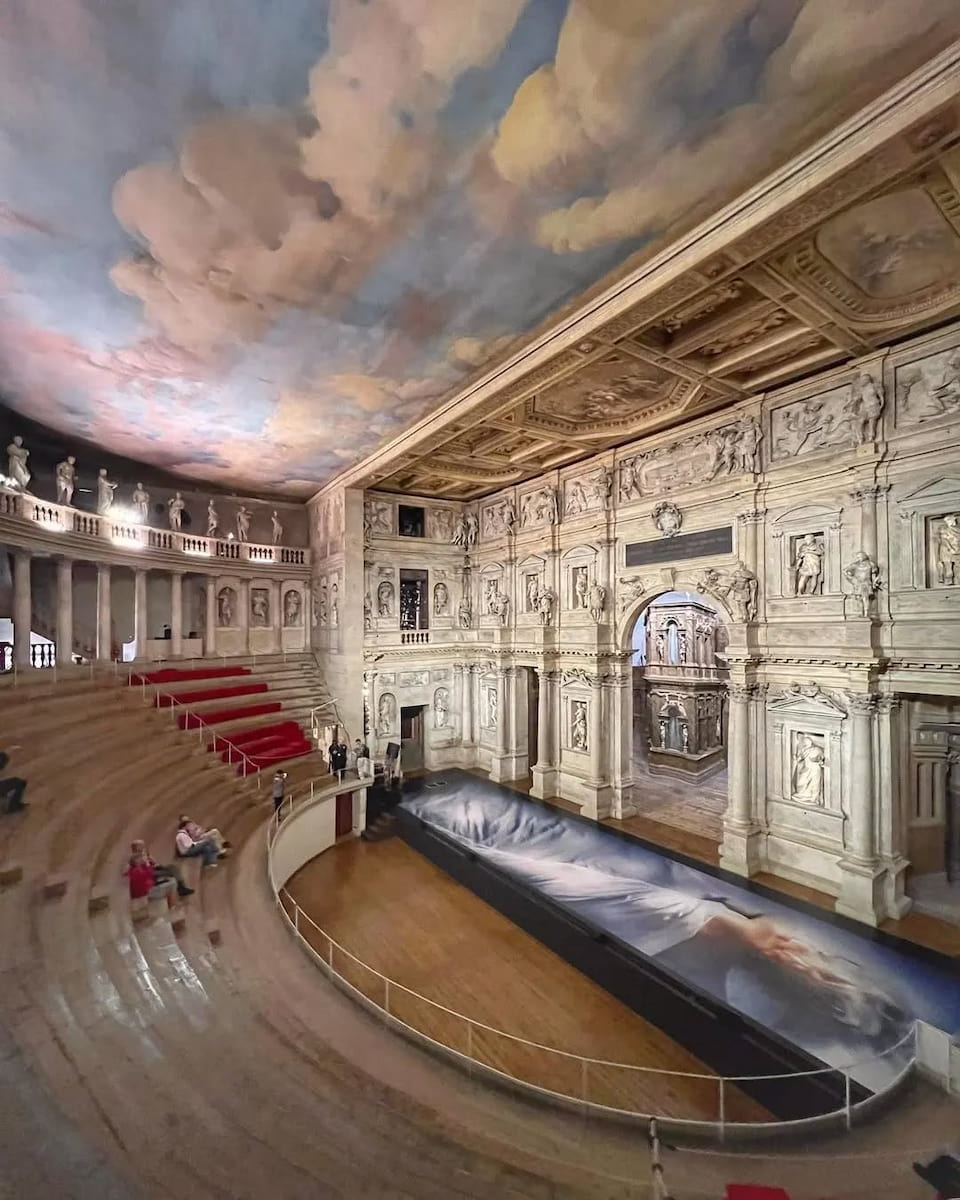
Practical Details. The theatre limits audience sizes to 400 for conservation reasons, so booking tickets in advance is essential if you want to see a performance. Even without attending a show, the guided tour is absolutely worth it to appreciate the architectural details and ingenious stage design.
⭐Best tours
- Vicenza and the Olympic Theatre – Discover Vicenza, one of the pearls of the Veneto region, Palladio treasure chest and a World Heritage Site.
2. Basilica Palladiana
Architectural Wonder. Standing in Piazza dei Signori, I was immediately drawn to the magnificent Basilica Palladiana. This Renaissance building showcases one of the first examples of what would become known as the Palladian window, designed by a young Andrea Palladio. The contrast between the Gothic façade and Andrea di Pietro della Gondola’s elegant arcades creates a striking visual harmony that stopped me in my tracks. Since 1994, it has been part of the UNESCO World Heritage Site “City of Vicenza and the Palladian Villas of the Veneto.”
Design Innovation. As I circled the building, I noticed how Palladio brilliantly adapted his addition to the pre-existing structure using the serliana – a repetitive structure where round arches are flanked by rectangular openings of different sizes to match the variable size of the internal bay. The lower floor features loggias in the Doric order, while the upper floor displays the more elegant Ionic order. This solution transformed what could have been an architectural challenge into a masterpiece of design.
Rooftop Experience. Climbing to the basilica’s terrace was one of the highlights of my visit. From this vantage point, I enjoyed breathtaking views across the square and over The Old Town of Vicenza. I could spot other attractions like Palazzo Thiene and the pretty Giardino Salvi gardens. The small bar on the terrace offered the perfect opportunity to relax with a coffee while soaking in the panorama.
Artistic Details. The parapet features impressive statues by Giovanni Battista Albanese, Grazioli, and Lorenzo Rubini that add to the building’s grandeur. I spent nearly an hour examining the intricate details of the frieze, which alternates metope (decorated by dishes and bucrania) and triglyphs. The clocktower with its five bells in the chord of E major occasionally filled the square with beautiful sounds during my visit.

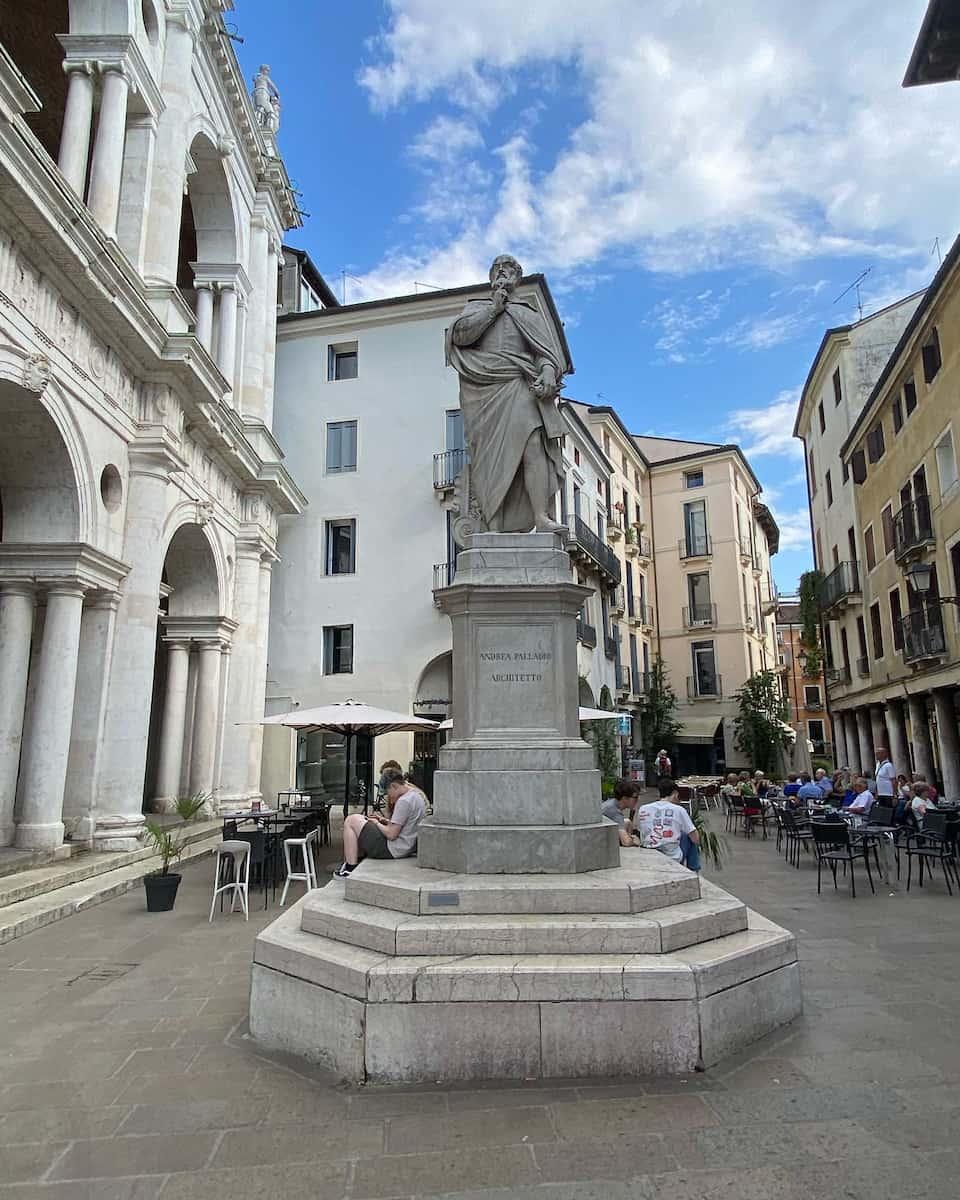
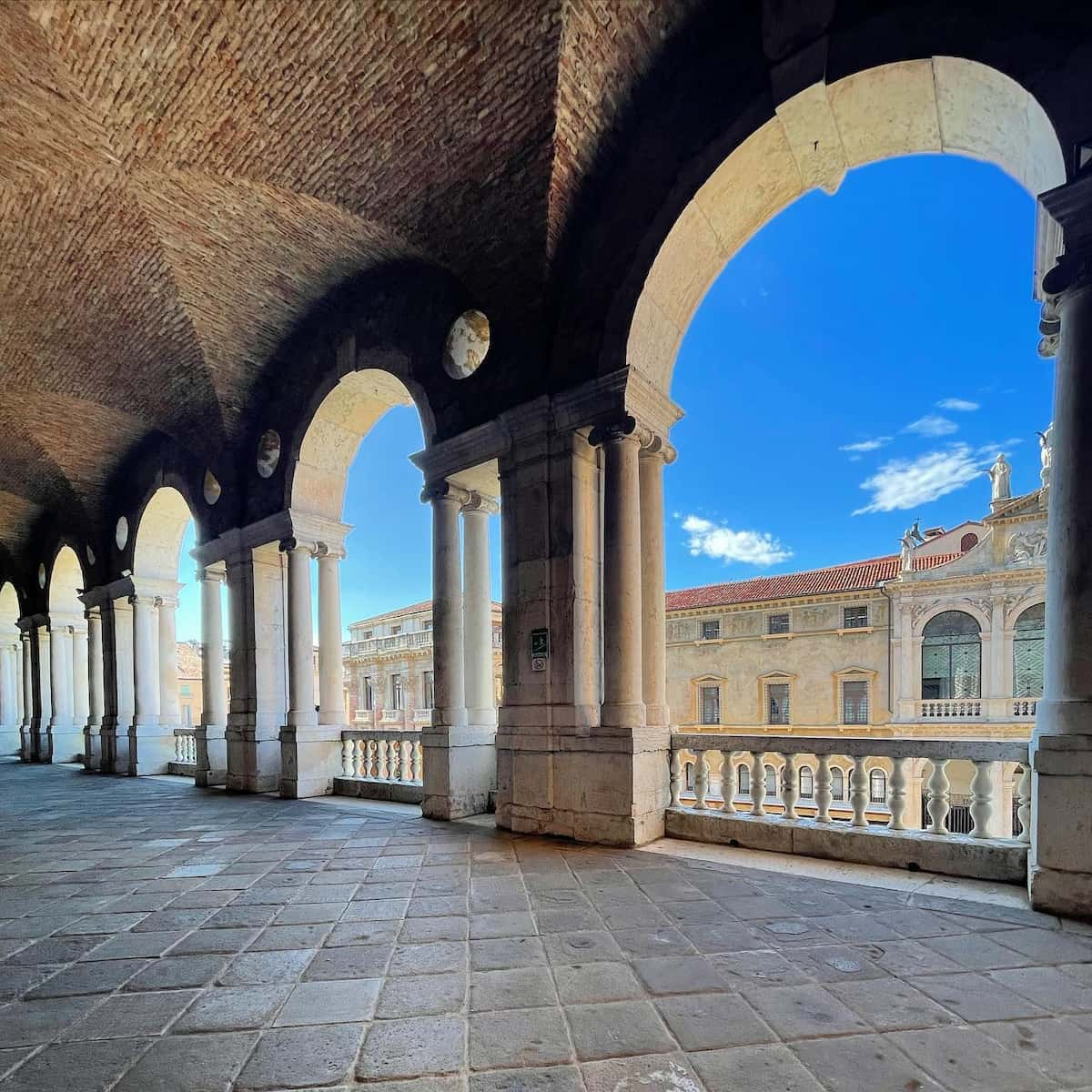
| Category | Information |
|---|---|
| Price | Free to visit the exterior; variable for exhibitions (€4/€2 for basilica, €10-13 for exhibitions) |
| Hours | Tuesday to Sunday, 10:00 AM – 4:00 PM |
| Location | Piazza dei Signori, Vicenza, Italy |
Cultural Hub. Today, the Basilica serves as an important cultural center hosting various exhibitions and events. During my visit, a modern art exhibition occupied the interior spaces, creating an interesting contrast between contemporary creativity and Renaissance architecture. The building truly embodies Vicenza as a place that honors its past while embracing the present.
⭐Best tours
- Vicenza City Sightseeing Walking Tour – With this walking tour, skip the hassle of a map and guidebook and take in the highlights with a guide. Learn about the history and culture of this UNESCO-listed gem, and enjoy the individual attention and slower pace of a private tour.
- Vicenza: discovering the city of Palladio by e-bike – Discover Vicenza’s main attractions on an easy and unforgettable e-bike ride! Ride amongs the Andrea di Pietro della Gondola’s famous architecture and the city beautiful landscapes, exploring in a new, fun way!
3. Piazza dei Signori
Historic Heart. Stepping into Piazza dei Signori felt like walking into the living room of Vicenza. This charming square dates back to the Roman Empire and took its current name during the Renaissance when the Signoria, the governing body of the Republic of Venice, controlled the city. Surrounded by architectural masterpieces, the square pulses with local life. I found myself returning here multiple times during my stay, drawn by its magnetic atmosphere and central location.
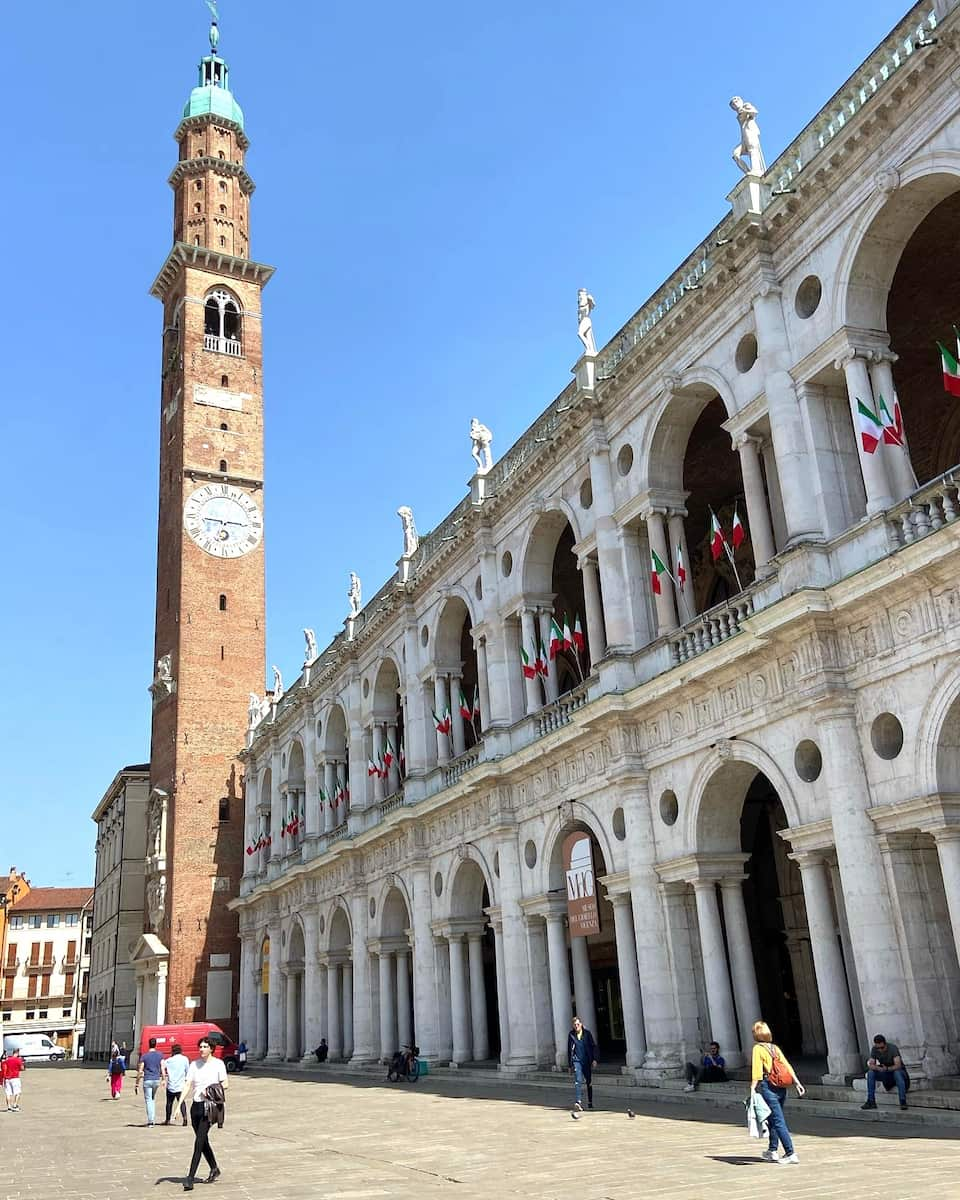
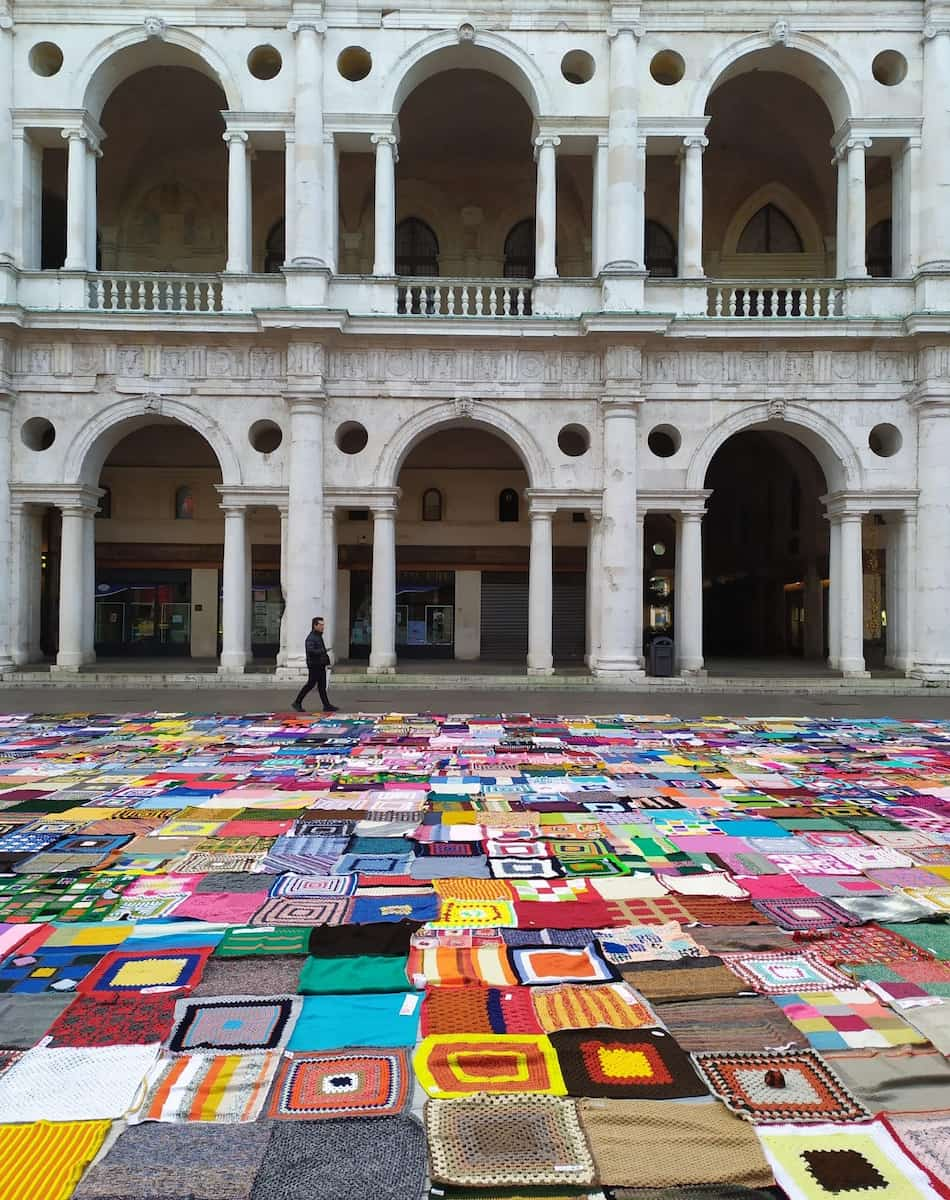

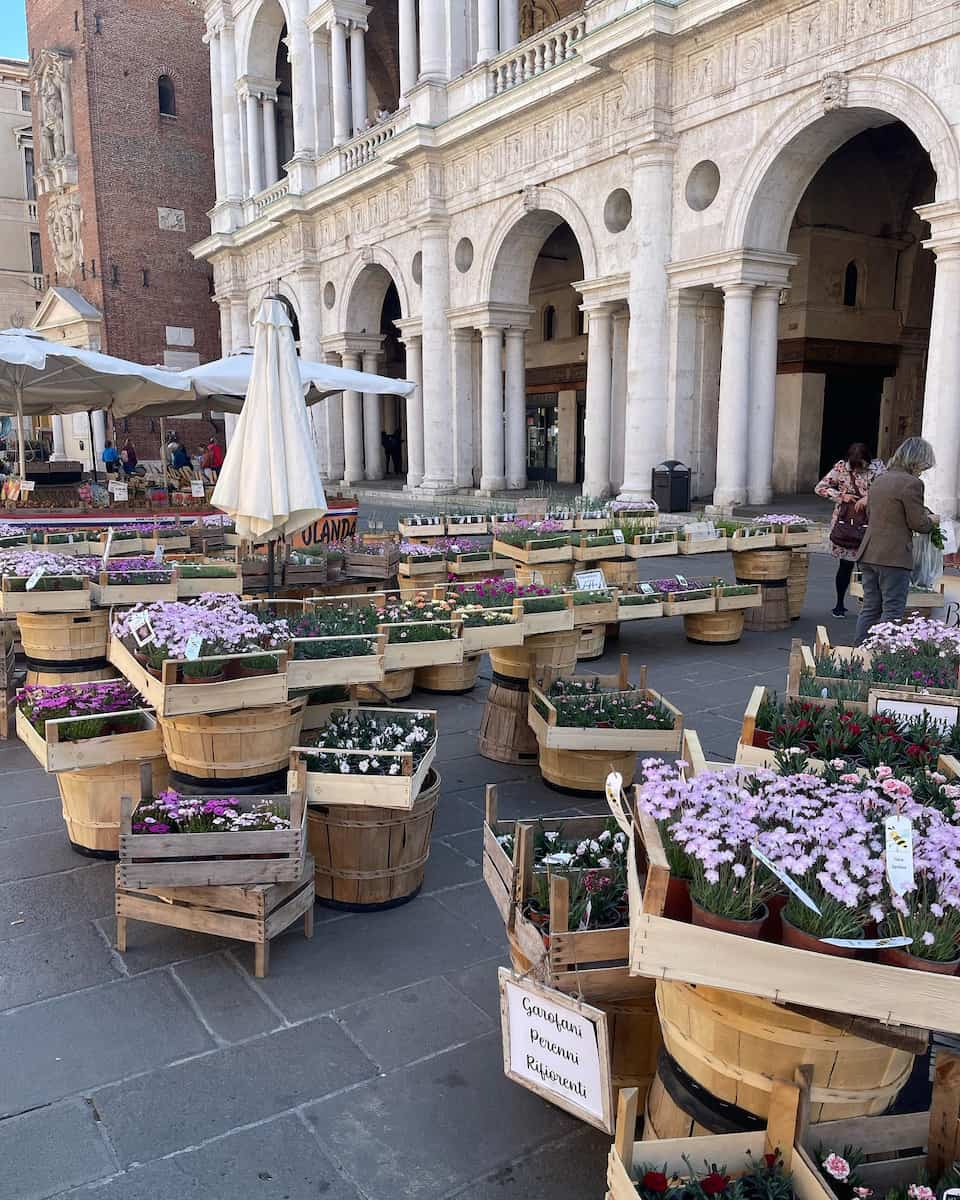
Architectural Showcase. The dominant feature of the square is undoubtedly the Andrea Palladio-designed Basilica Palladiana with its Gothic façade and elegant arcades. Another impressive landmark is the Loggia del Capitanio, also designed by Palladio, with its red-brick façade and grand columns. I spent nearly an hour examining the intricate carvings of mythological gods and symbolic heroes on its exterior. The tall Torre Bissara clock tower dating back to the 12th century provides a vertical counterpoint to the horizontal expanse of the square.
Local Life. I loved watching the rhythm of daily life unfold here. In the morning, locals hurried through on their way to work; by midday, the café terraces filled with people enjoying lunch; and evenings brought a relaxed atmosphere as friends gathered for aperitivo. On Tuesdays and Thursdays, I browsed the stalls of a fascinating flea market that transforms the square into a bustling marketplace.
Cultural Events. Throughout the year, the square hosts live music events and festivals. During my visit in March, preparations were underway for an upcoming spring festival. The square’s excellent acoustics make it an ideal venue for outdoor performances, while its spacious layout accommodates large gatherings. I can only imagine how magical it must be during the February carnival parade.
| Category | Information |
|---|---|
| Price | Free to visit |
| Hours | Always open |
| Location | Piazza dei Signori, Vicenza, Italy |
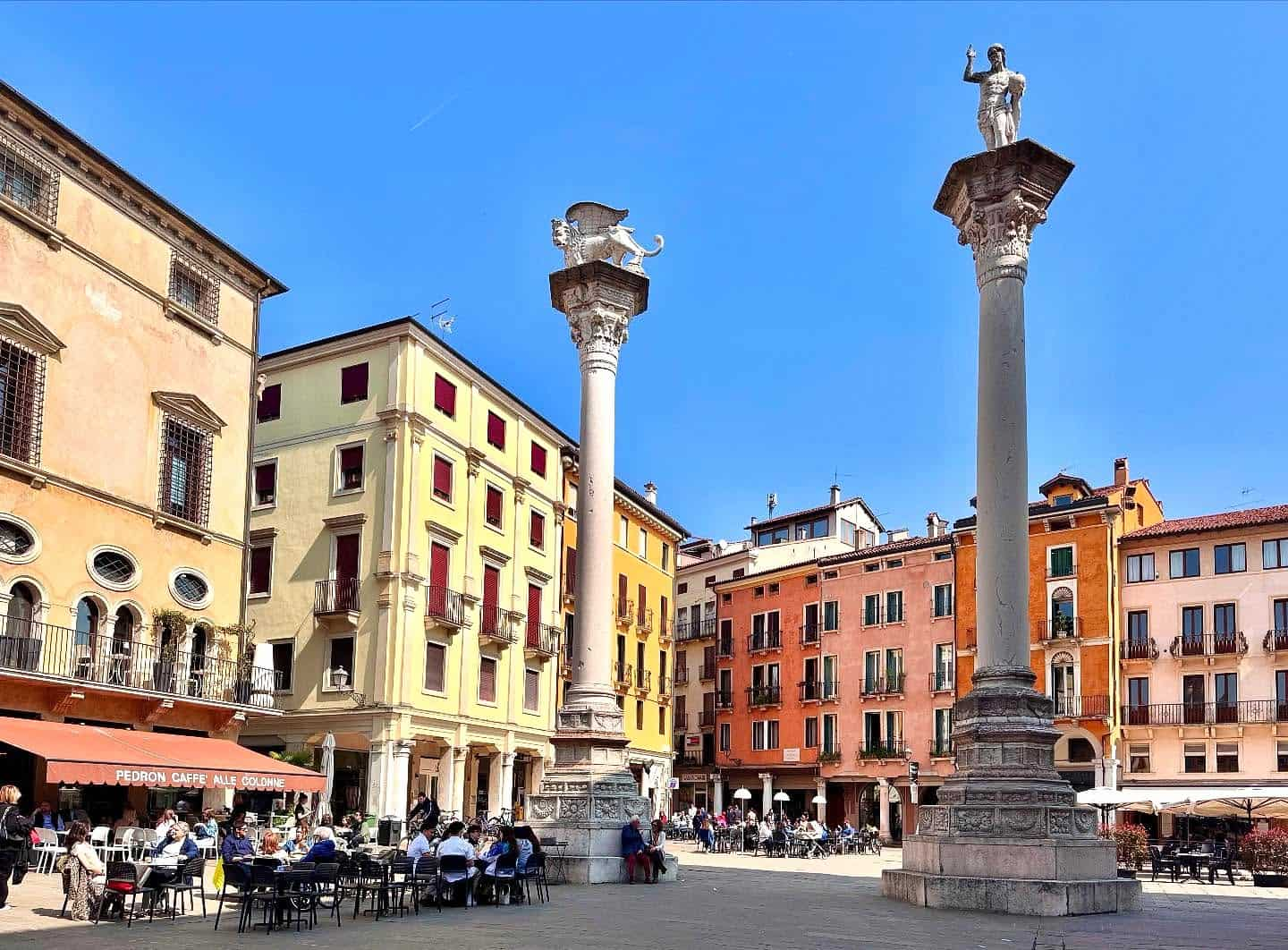
Culinary Delights. Taking a seat on the terrace of a café, I ordered a traditional Venetian spritz and watched as locals and tourists passed by, pausing to marvel at the square’s picturesque urban landscape. The ice cream parlors around the square offer delicious gelato in every flavor imaginable – the perfect treat while exploring on a warm day.
⭐Best tours
- Secret Vicenza walking tour – Take a guided walking tour of the fascinating hidden places in Vicenza. Follow your local guide around the city and uncover tales and mysteries beneath the architecture.
4. Villa La Rotonda
Architectural Marvel. Located just outside Vicenza, Villa La Rotonda (completed in 1592) left me speechless with its perfect symmetry and harmonious proportions. This iconic masterpiece by Andrea Palladio was commissioned by Paolo Almerico as a recreational retreat. As I approached the villa, its iconic central dome and four identical facades created an immediate impression of balance and harmony. Each facade features a portico with steps leading up to it, allowing the villa to be approached with equal grandeur from any direction.
Hilltop Setting. The villa’s strategic position on a hilltop offered me breathtaking views of the surrounding countryside. Palladio brilliantly designed the building to take advantage of this setting, with each portico framing a different vista of the landscape. Walking through the manicured gardens, I understood why this location was chosen – it creates a perfect dialogue between architecture and nature that embodies classical ideals.
Interior Splendor. Stepping inside, I was amazed by the central circular hall topped by the dome. The rooms are carefully proportioned to receive sunlight throughout the day, creating constantly changing plays of light and shadow. The interior features stunning frescoes by artists including Alessandro and Giovanni Battista Maganza and Anselmo Canera, adding color and narrative to the architectural framework.
Global Influence. As I explored the villa, I reflected on its enormous influence on architecture worldwide. From Thomas Jefferson’s Monticello to countless government buildings and mansions, La Rotonda’s design principles have been adapted and reinterpreted for centuries. Standing in this architectural icon, I felt connected to a design legacy that spans continents and generations.
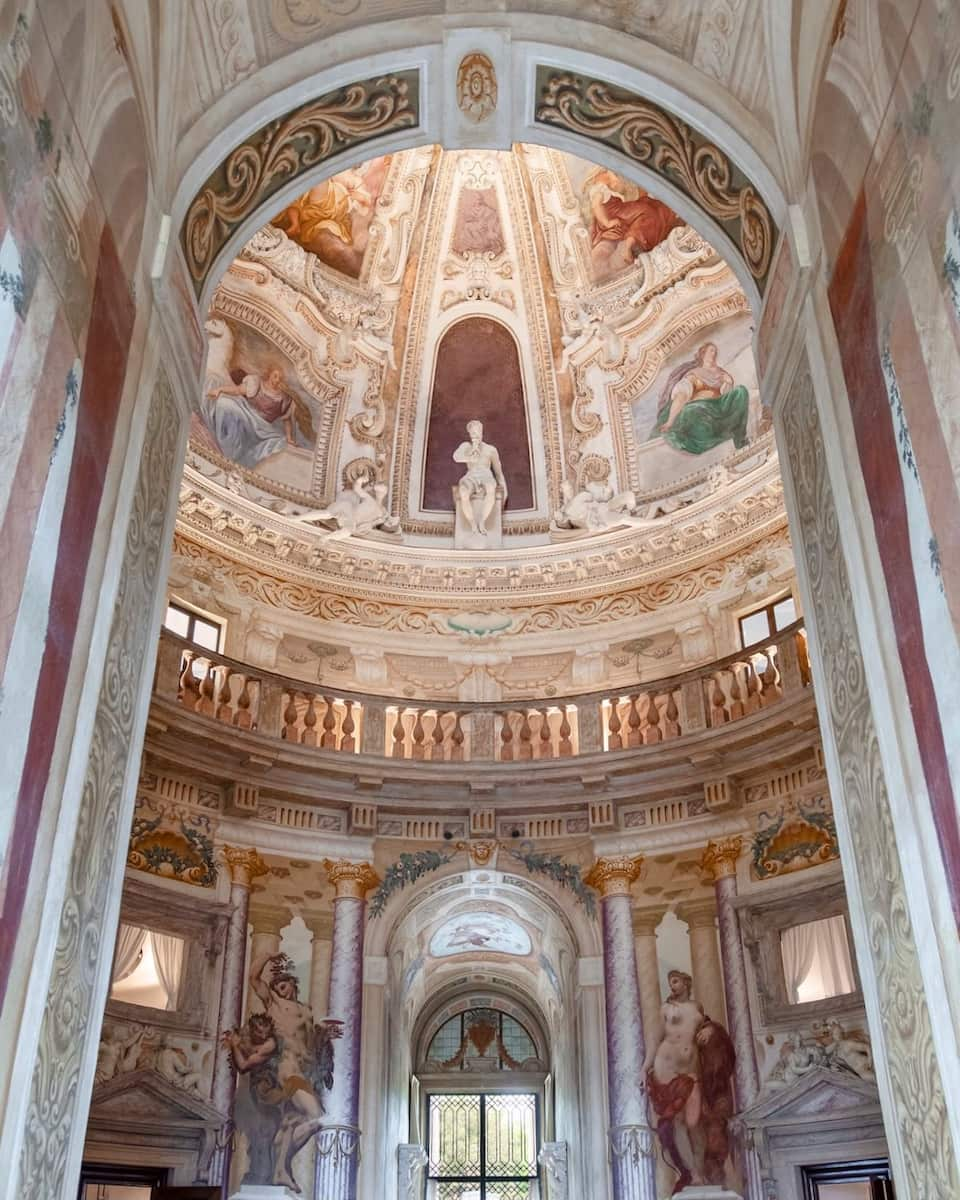
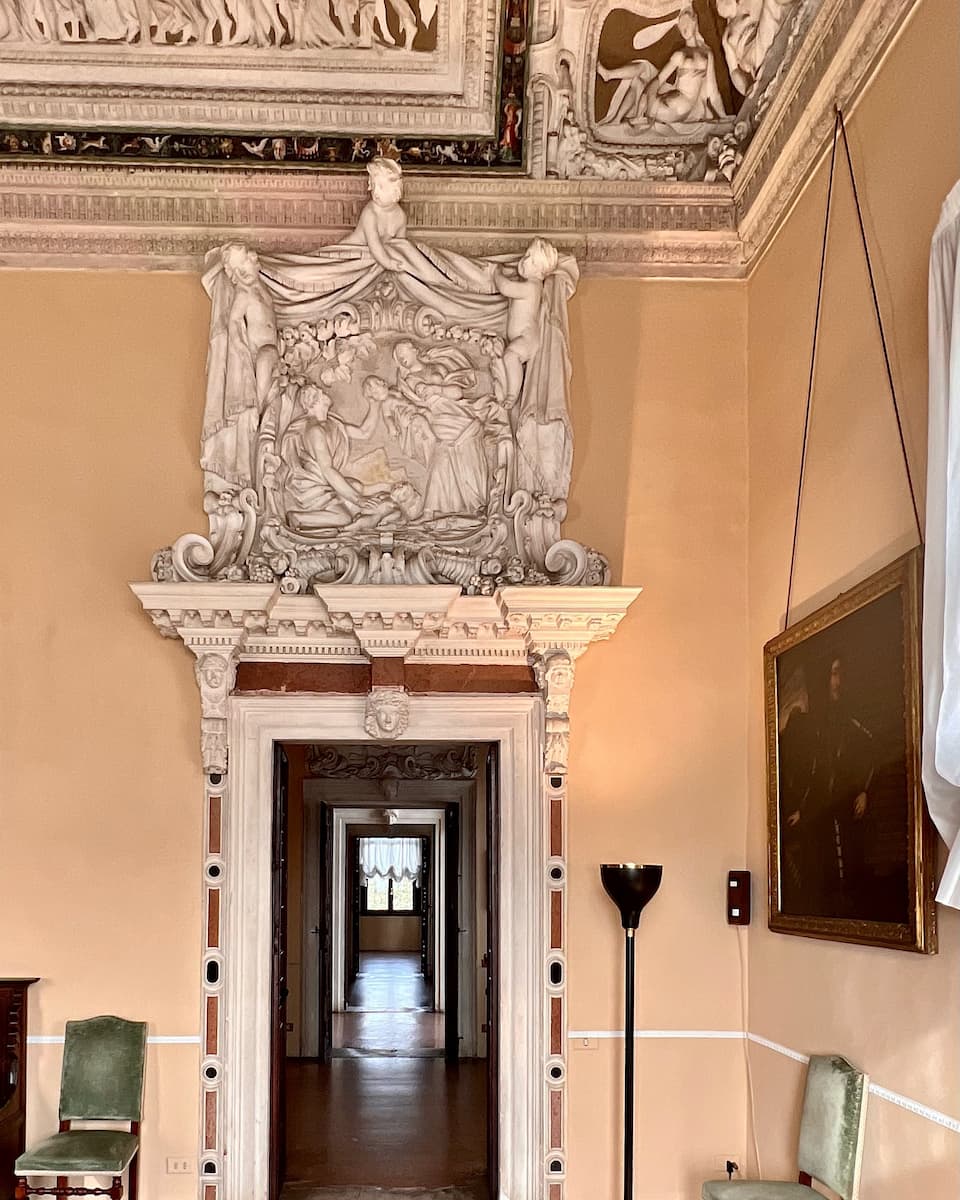
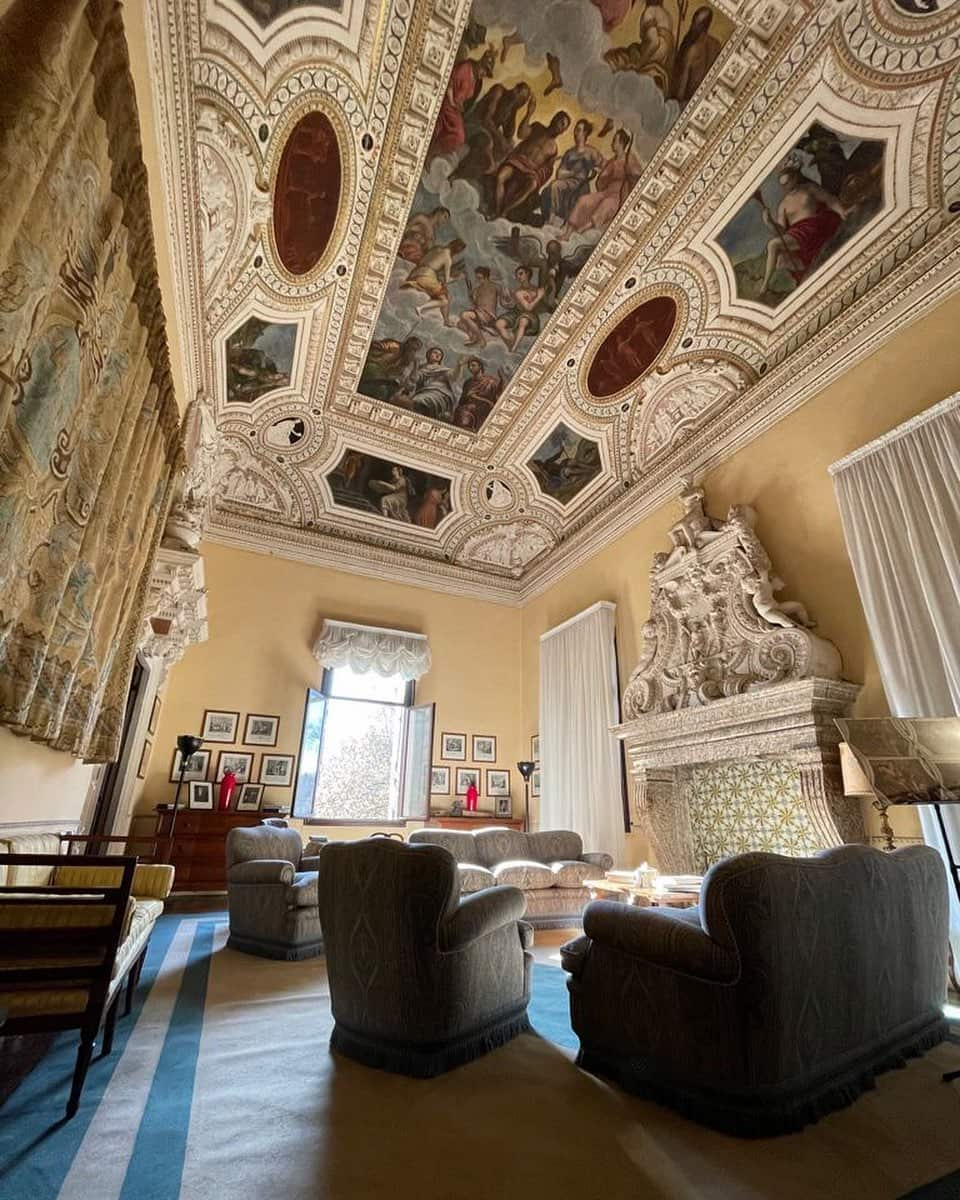
| Category | Information |
|---|---|
| Price | Separate fees for grounds and interior; check the official website for details |
| Hours | Tuesday to Sunday, March to November; interior open Wednesday and Sunday only |
| Location | Via della Rotonda, 45, Vicenza, Italy |
Visitor Experience. The villa is privately owned but open to visitors, allowing architecture enthusiasts like me to experience Andrea di Pietro della Gondola’s genius firsthand. The grounds are meticulously maintained, and the atmosphere is one of tranquil elegance that invites contemplation.
⭐Best activities
- Palladian Classic - Vicenza 1st Experience – The Palladian Villas Owners Network invite you to immerse yourself in our Unesco Heritage, with an itinerary to discover at least 7 places of historical interest that Palladio’s brilliance has made so unique that they deserve universal recognition.
5. Museum Civico di Palazzo Chiericati
Treasure House of History. My visit to the Museo Civico di Palazzo Chiericati began with admiration for its stunning exterior. Designed by Andrea Palladio in 1550 for Count Girolamo Chiericati, this architectural masterpiece became the civic museum of Vicenza in 1855. Walking through the elegant facade with its classical columns, I felt transported back to the golden age of artistry. The building itself is a UNESCO World Heritage site, part of “City of Vicenza and the Palladian Villas of the Veneto” since 1994.
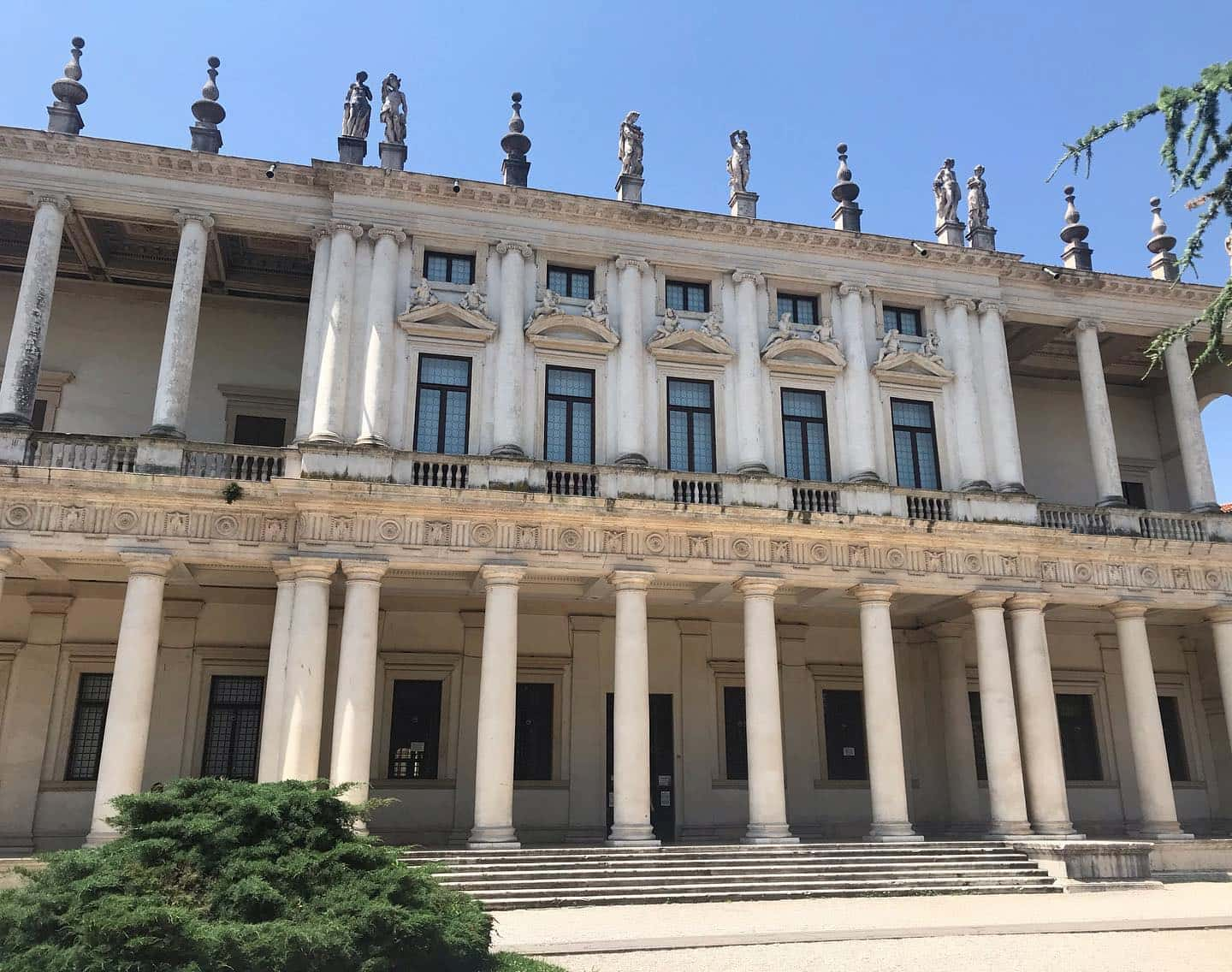
Artistic Journey. Inside, I discovered an impressive collection of over 35,000 works spanning from the 13th to the 20th century. The museum houses remarkable paintings by Venetian masters including Paolo Veronese, Giovanni Bellini, and Tintoretto. I was particularly moved by the collection of 16th-century Venetian paintings that showcase the region’s artistic golden age. The evolution of art from the Renaissance period onwards is beautifully documented through carefully curated galleries.
Historical Layers. As I explored the palace, I noticed the original frescoes by Brusasorzi, Zelotti, Menarola, and Cittadella dating back to the 16th and 17th centuries. These decorations provide context for the artwork and create a seamless blend between the building and its contents. The museum’s history is itself fascinating – acquired by the city in 1839, restored, and finally opened to the public in 1855 after extensive renovations.
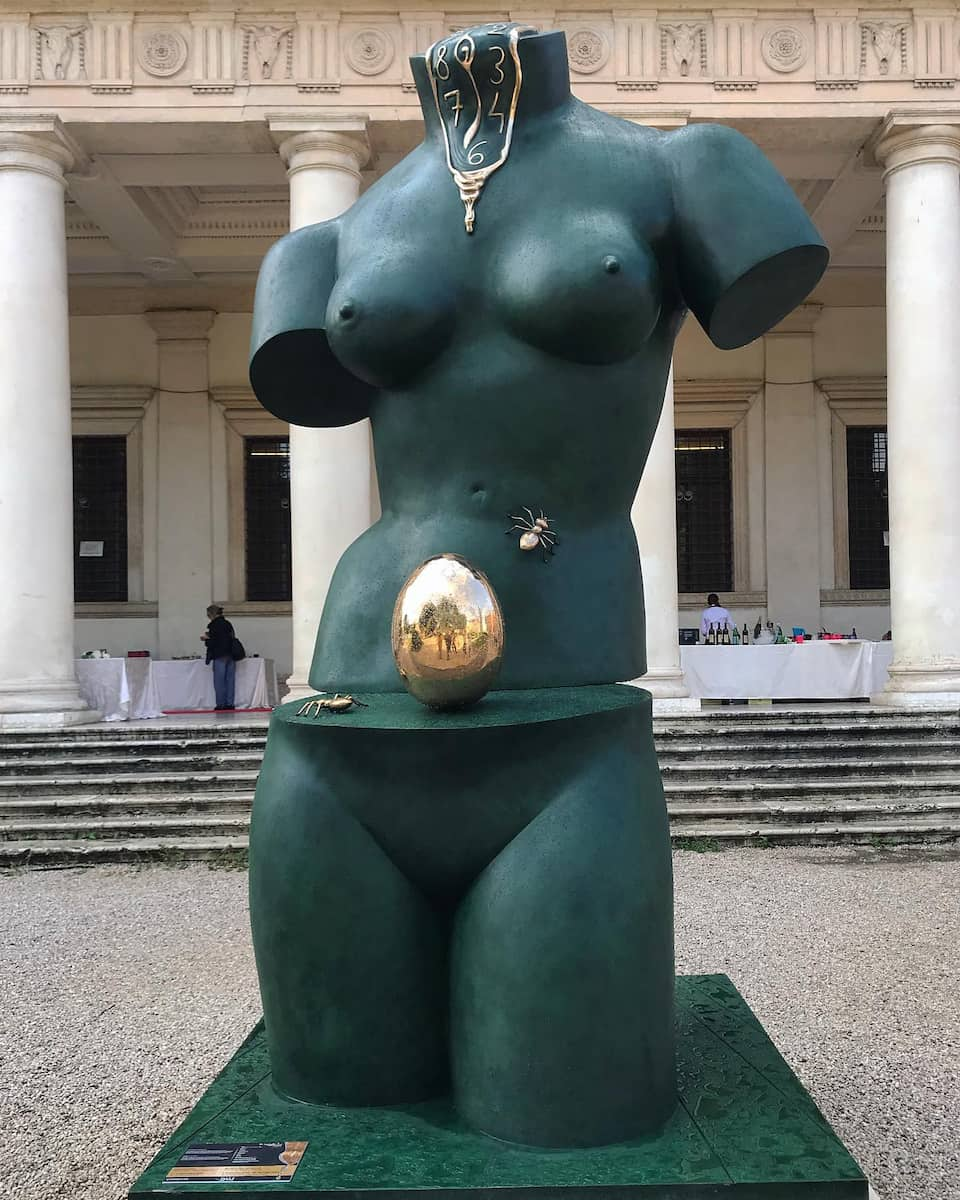
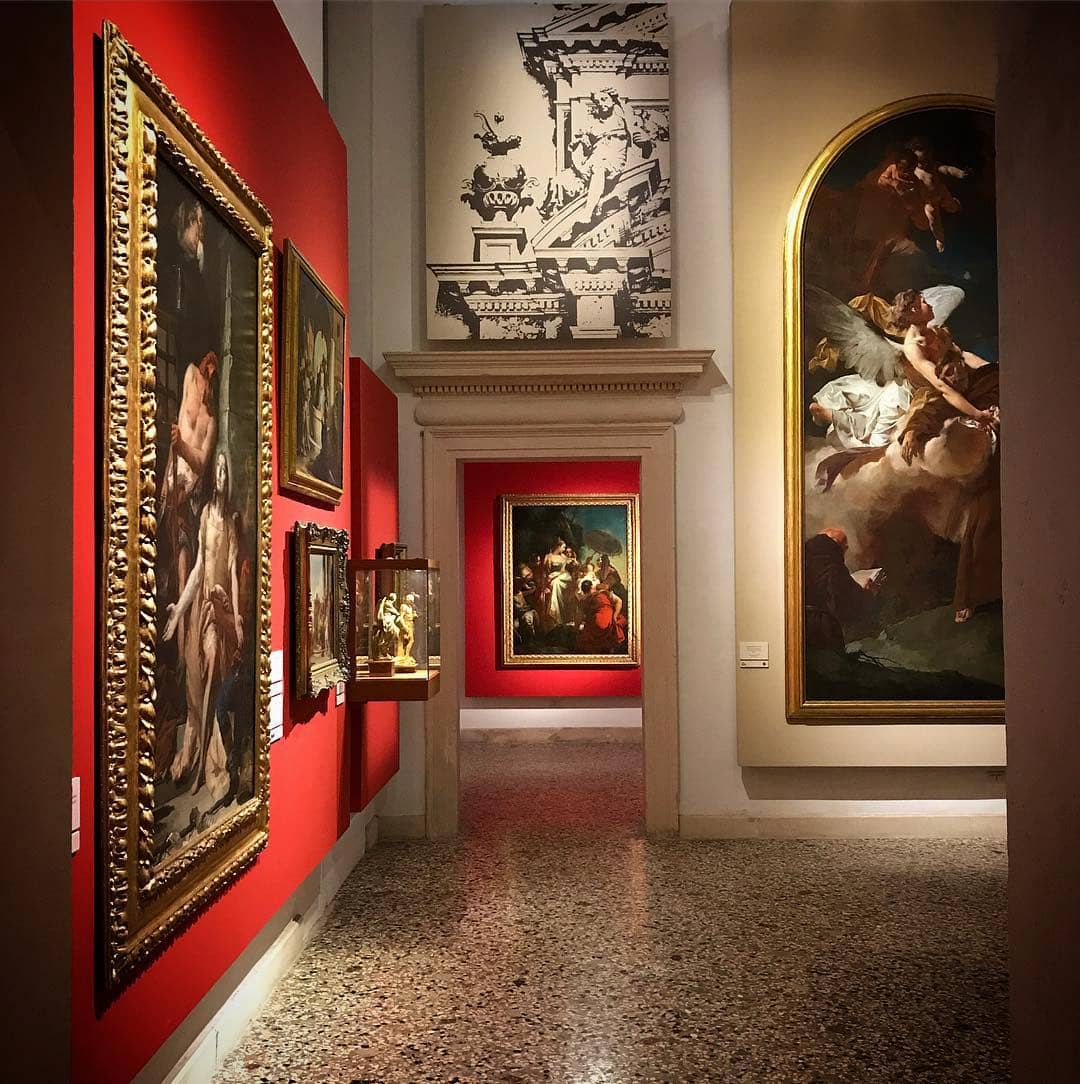
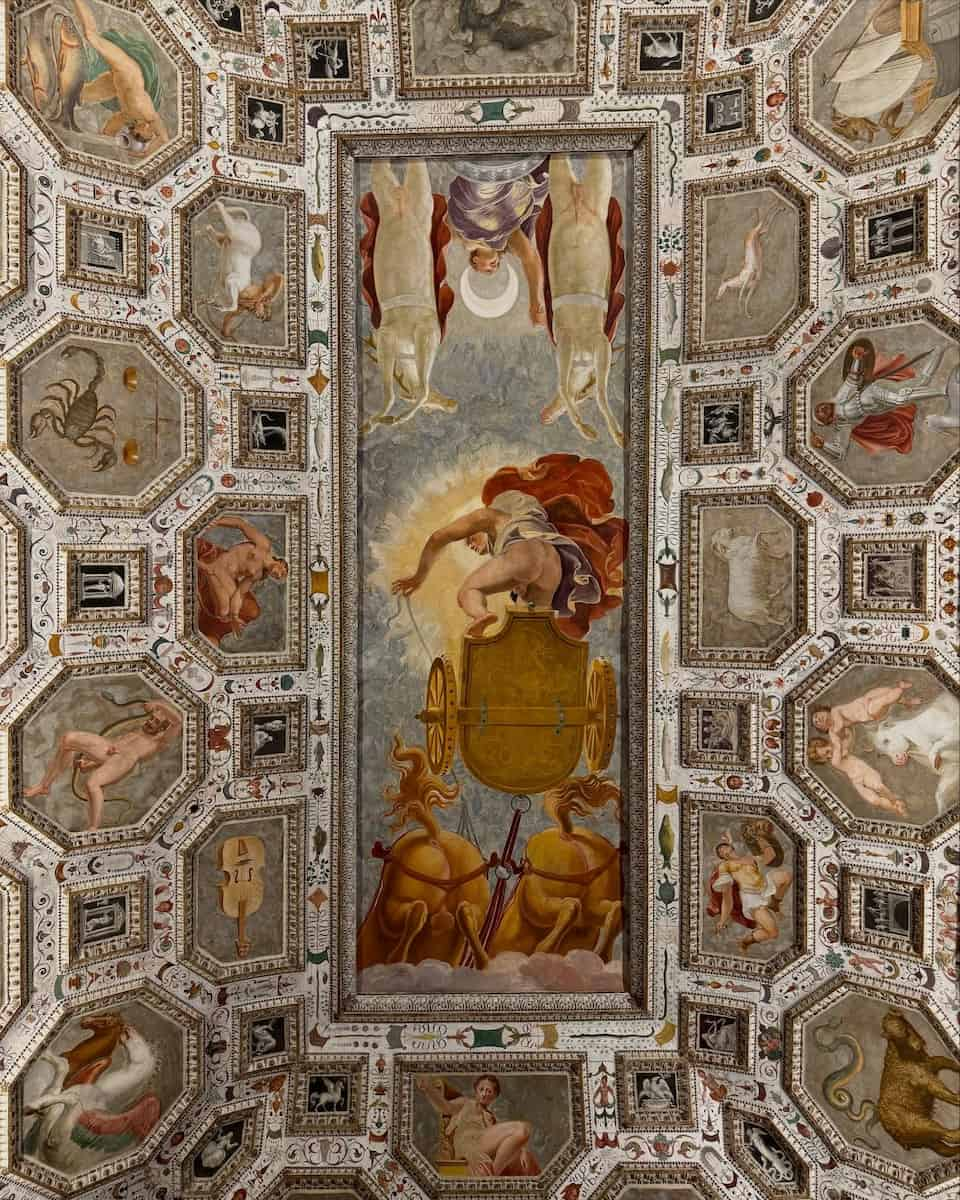
Ongoing Restoration. During my visit, I noticed that some sections were undergoing restoration. The museum staff explained that while the Palladian wing and the 20th-century wing are open, the 19th-century wing is currently closed for renovation. Despite this, the open sections offered plenty to see, with works from the medieval period through the baroque era beautifully displayed.
| Category | Information |
|---|---|
| Price | €7 for general admission; reduced rates available |
| Hours | Tuesday to Sunday, 9:00 AM – 5:00 PM |
| Location | Piazza Matteotti, Vicenza, Italy |
Cultural Highlight. The museum’s first floor particularly impressed me with works by Paolo Veneziano, Battista da Vicenza, Hans Memling, and Bartolomeo Montagna. The grand room reconstructing decorations from the destroyed Church of St. Bartholomew contains important altarpieces, including standout works by Montagna, Cima da Conegliano, and Giovanni Bonconsiglio.
6. Basilica of St. Mary of Monte Berico
Panoramic views. Standing majestically on a hilltop overlooking Vicenza, the Basilica of St. Mary of Mount Berico offers breathtaking vistas of the entire city. I was immediately struck by the elegant Baroque architecture when I arrived, with its stunning stone and marble façade that dates back to 1703.
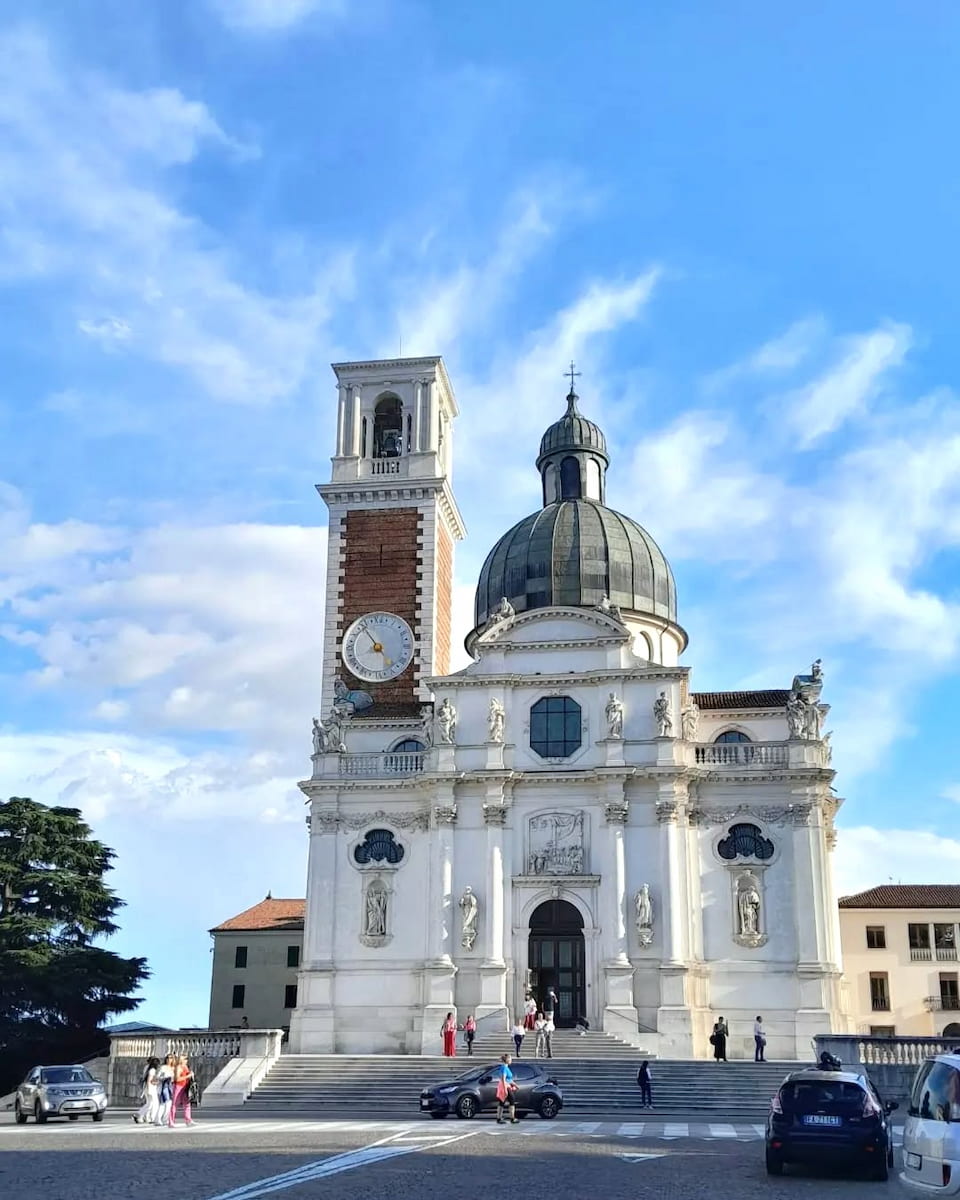
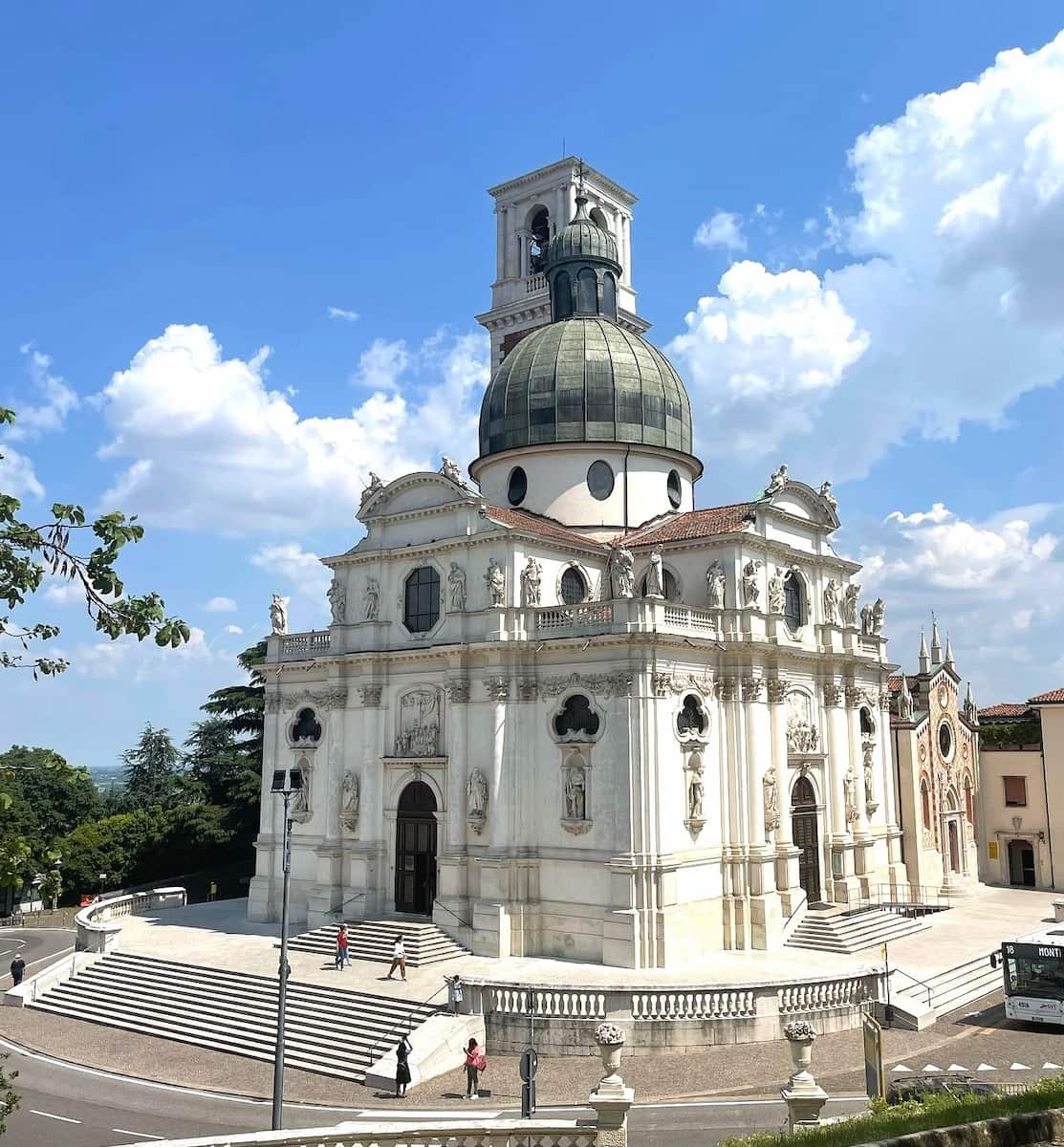
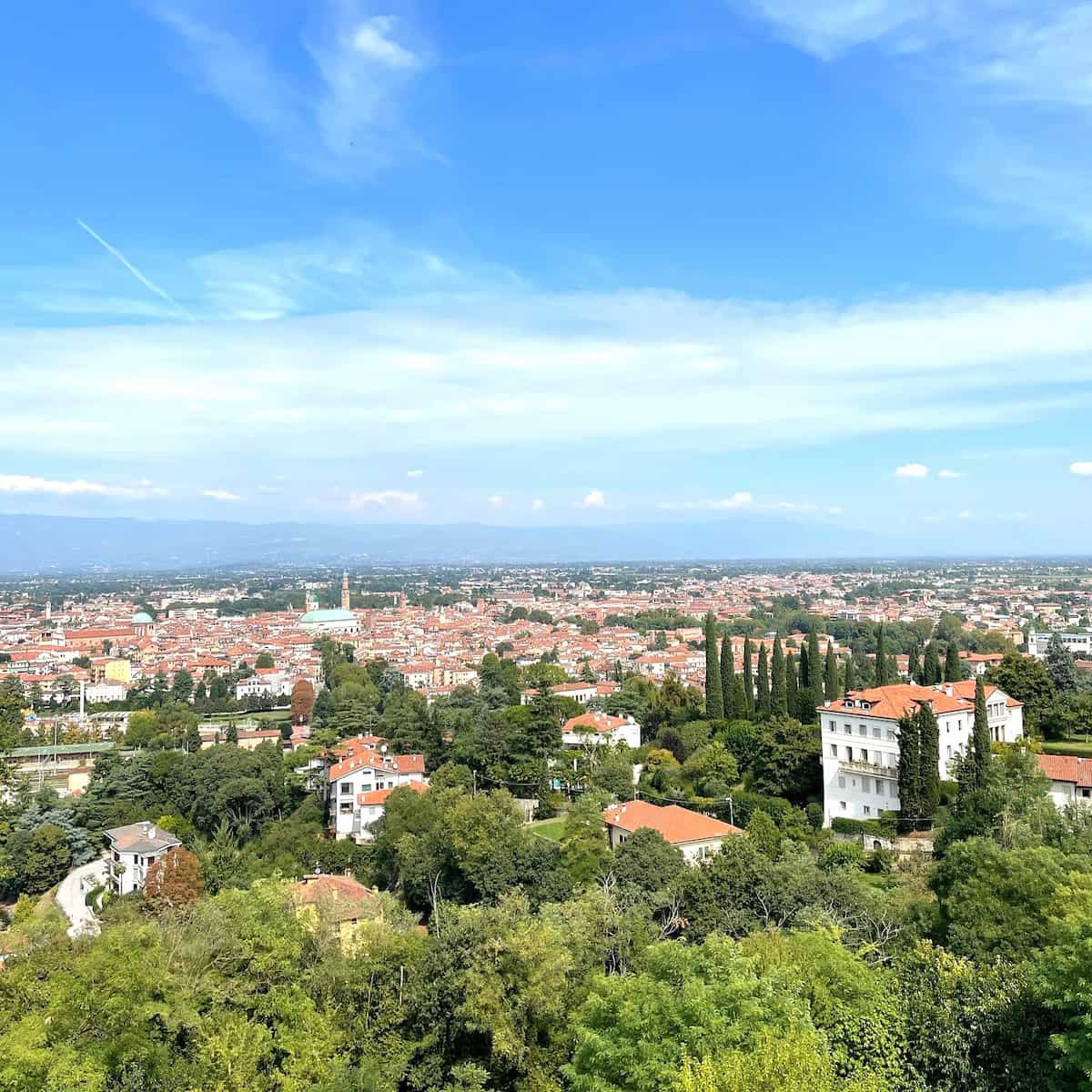
Sacred history. The basilica has a fascinating origin story connected to the plague that once ravaged the region. According to local legend, the Virgin Mary appeared twice to a peasant worker named Vincenza Pasini – first on March 7, 1426, and again on August 1, 1428. She promised to end the devastating plague if the people built a church on this hill.
Architectural marvel. Inside, I was captivated by the spacious interior that can accommodate over 1,500 worshippers. The church features works by renowned artists and architects including Andrea Palladio, whose influence is evident throughout Vicenza. The main altarpiece depicts an allegory of the people of Vicenza presenting the church to the Virgin.
Must-see features:
- The miraculous painting of the Madonna and Child
- The ex-voto collection with hundreds of silver offerings
- The peaceful cloister with its beautiful arcades
- The panoramic terrace with views of the Berici Hills
Pilgrim’s path. One of the most remarkable features is the 700-meter stairway connecting the city to the sanctuary. Designed by Francesco Muttoni in 1746, it consists of 150 arches grouped in tens, symbolizing the 15 mysteries and 150 Hail Marys of the rosary. Walking up these stairs gave me time to appreciate the spiritual significance of this journey.
Practical tip: The basilica is open daily and entrance is free. For the best experience, I recommend visiting on weekday mornings when it’s less crowded. The walk up is moderately challenging, so wear comfortable shoes or take the local bus if needed.
7. Chiesa di Santa Corona
Dominican treasure. Built between 1261-1270, this Gothic church was established to house a precious relic – a thorn believed to be from Christ’s crown of thorns, gifted by King Louis IX of France. The moment I stepped inside, I was struck by the contrast between the simple brick exterior and the richly decorated interior.
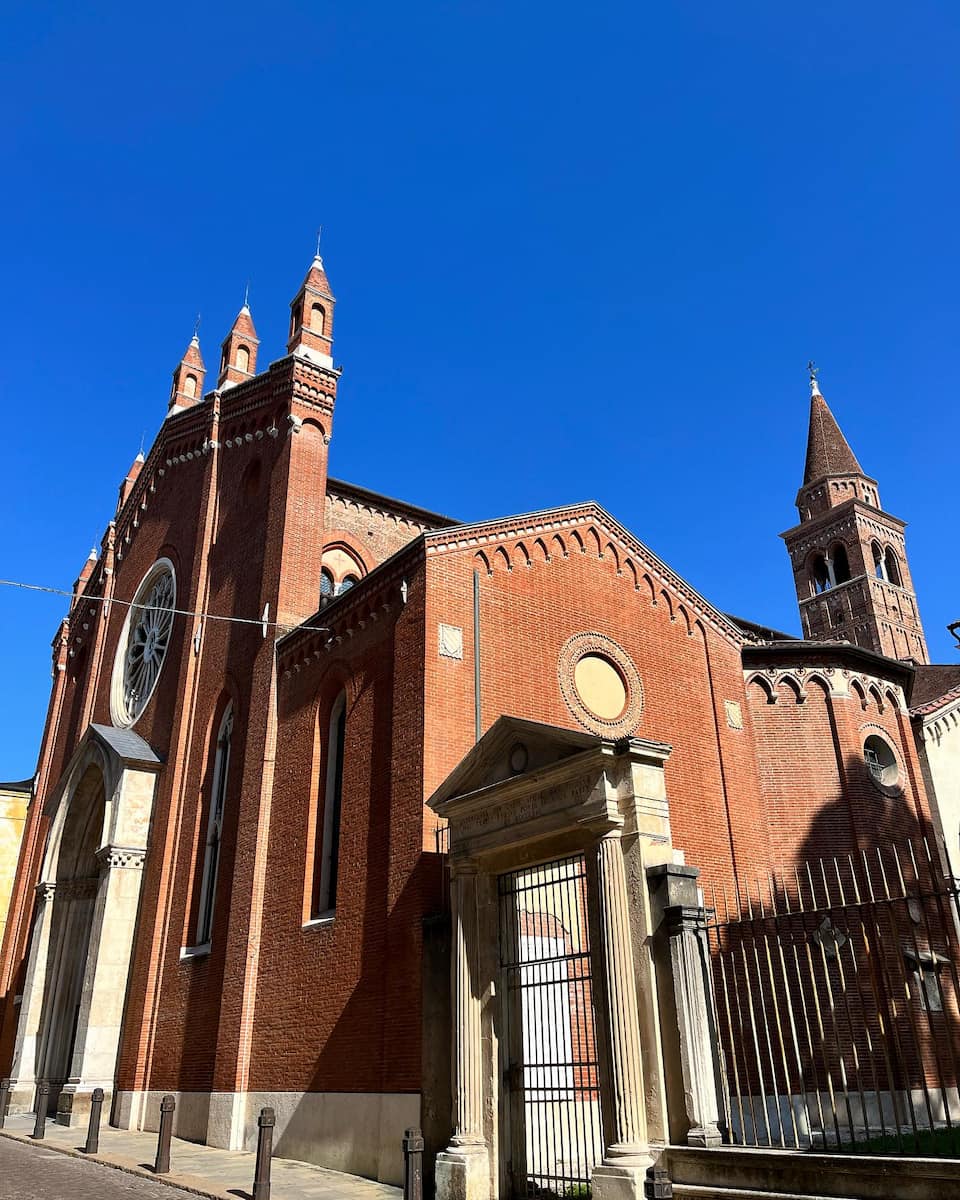
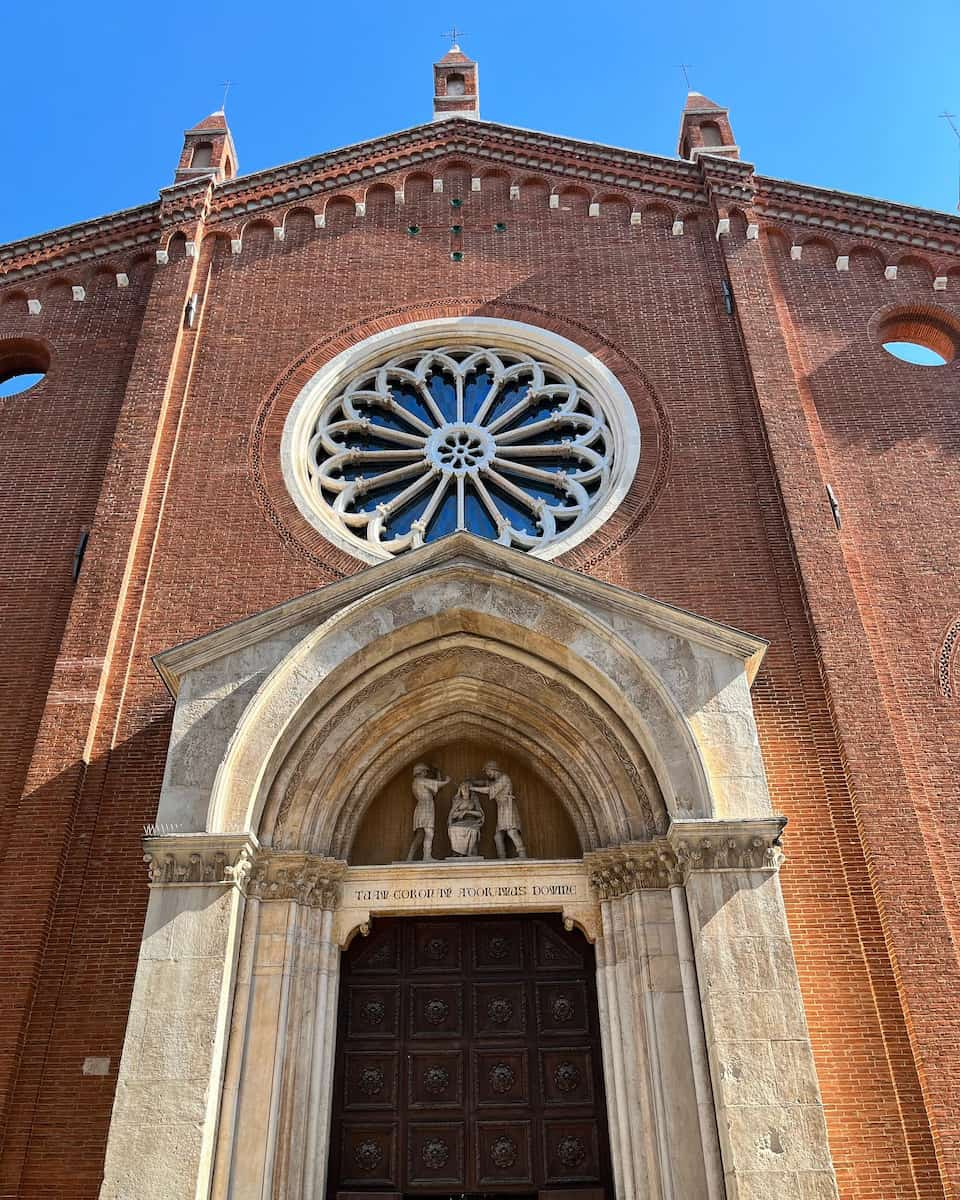
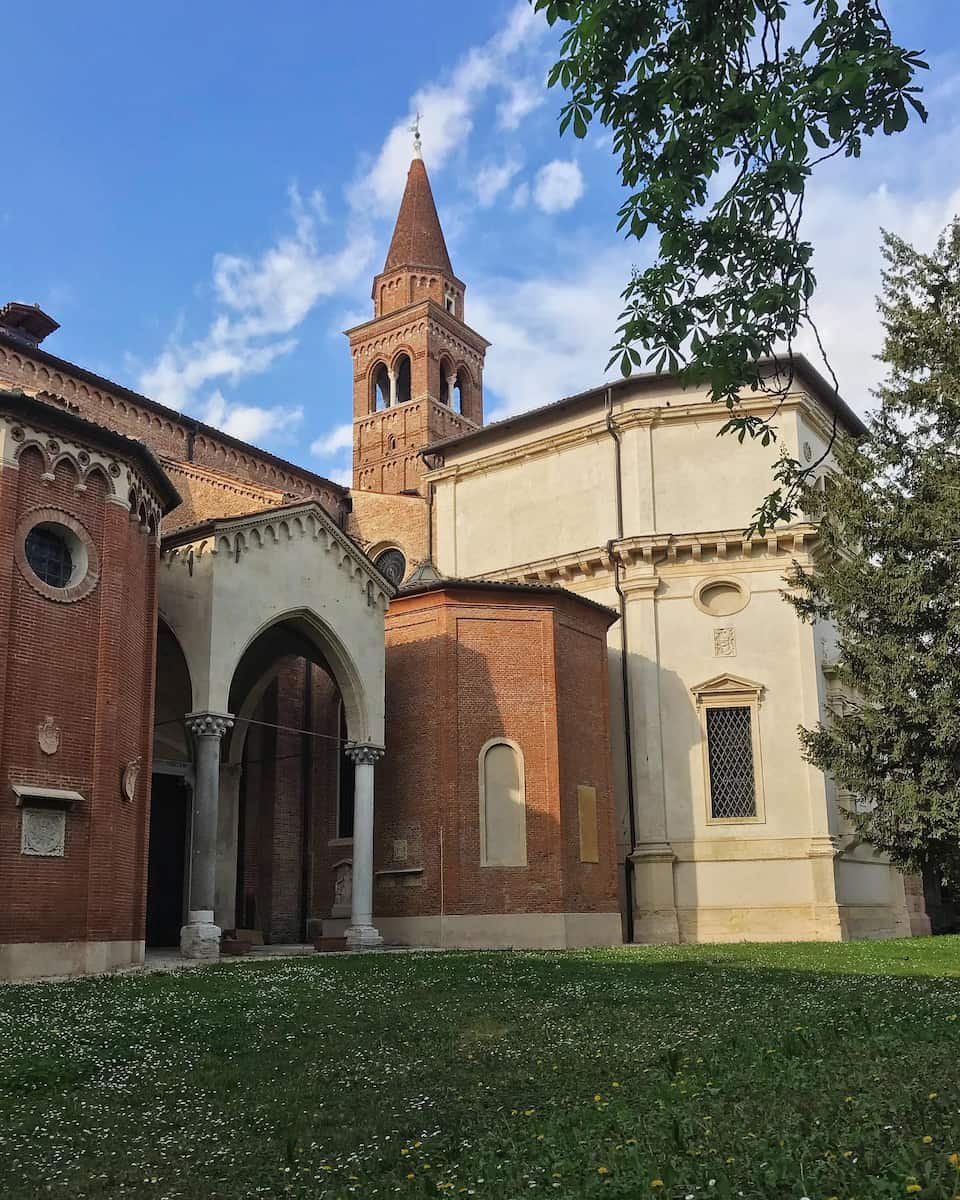
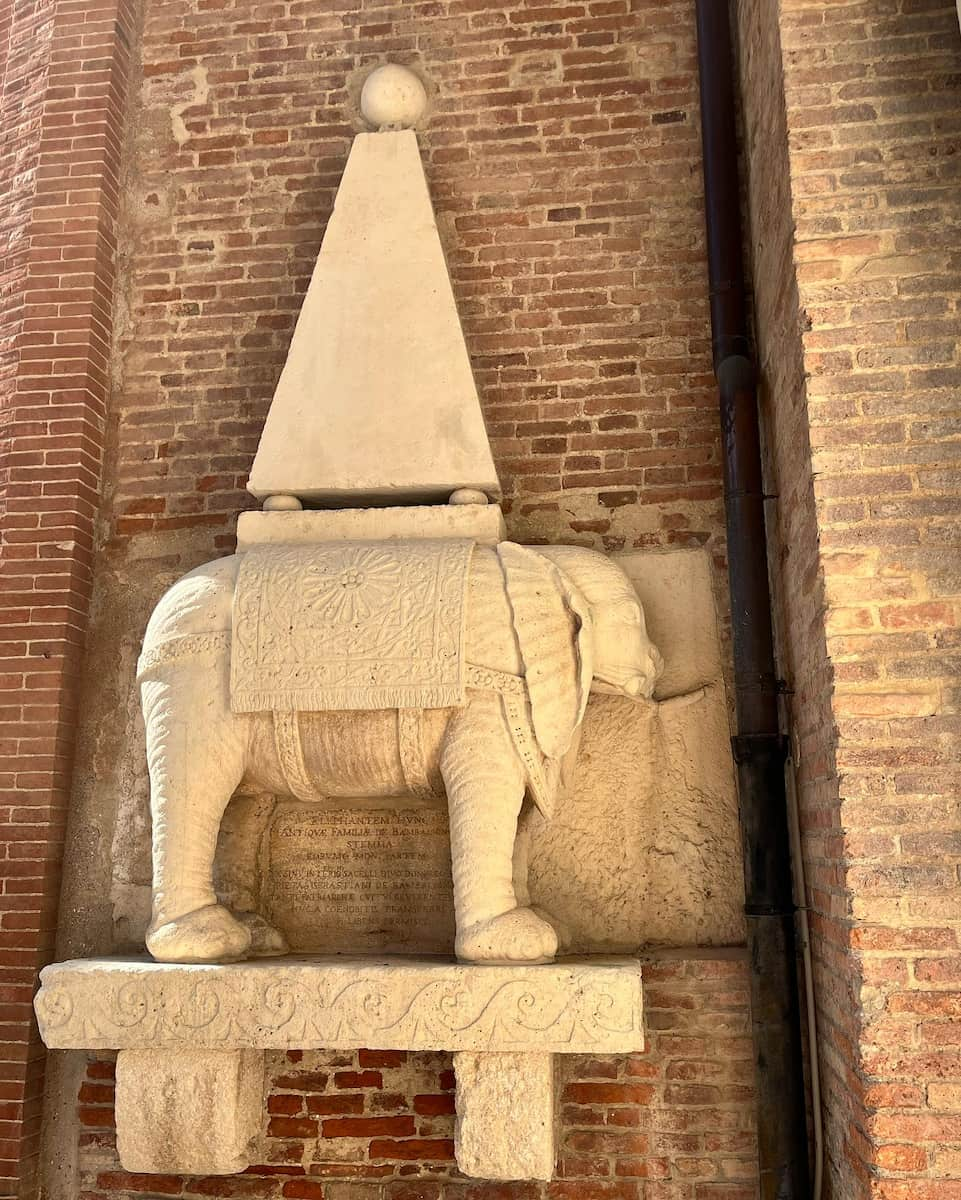
Artistic gems. The church contains masterpieces that left me speechless, particularly Giovanni Bellini’s “Baptism of Christ” (1500-1502) at the Garzadori Altar and Paolo Veronese’s “Adoration of the Magi.” These Renaissance works are displayed in ornate chapels that line the nave, each telling its own story.
Notable artworks to seek out:
- Giovanni Bellini’s “Baptism of Christ” (1500-1502)
- Paolo Veronese’s “Adoration of the Magi” (1573)
- Bartolomeo Montagna’s “Madonna and Child with Saints” (1500)
- The ornate marble altar by Lorenzo da Bologna
Rosary Chapel. My favorite spot was the spectacular Cappella del Rosario, completed in 1619 to commemorate Venice’s victory over the Ottoman Empire at the Battle of Lepanto. The Virgin of the Rosary statue and battle scenes create a powerful narrative that connects art with history.
Palladio’s legacy. In the crypt, I discovered the Valmarana Chapel, designed by Andrea Palladio in 1576. It’s particularly significant as Palladio himself is buried here, making this church an essential stop for architecture enthusiasts exploring Vicenza’s UNESCO World Heritage sites.
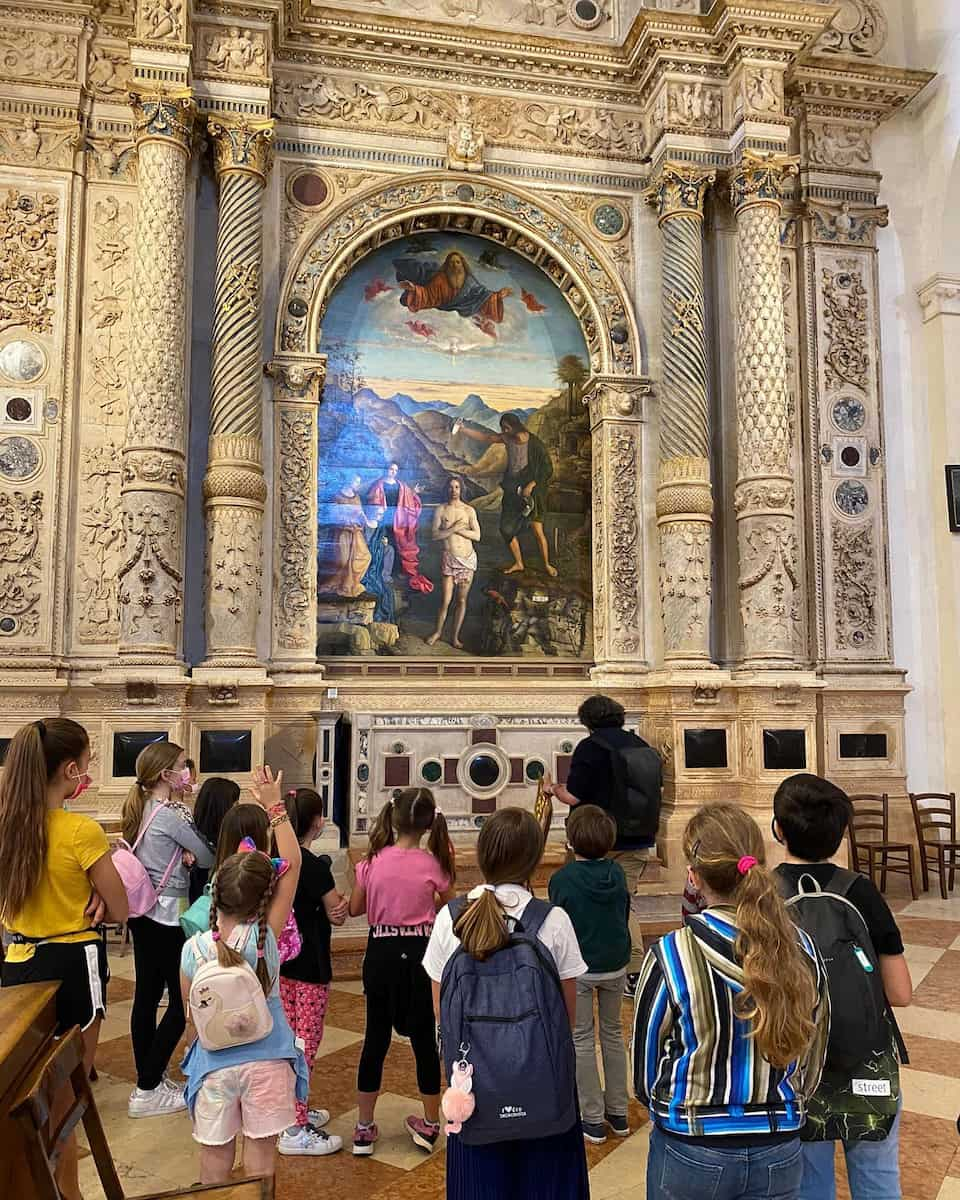
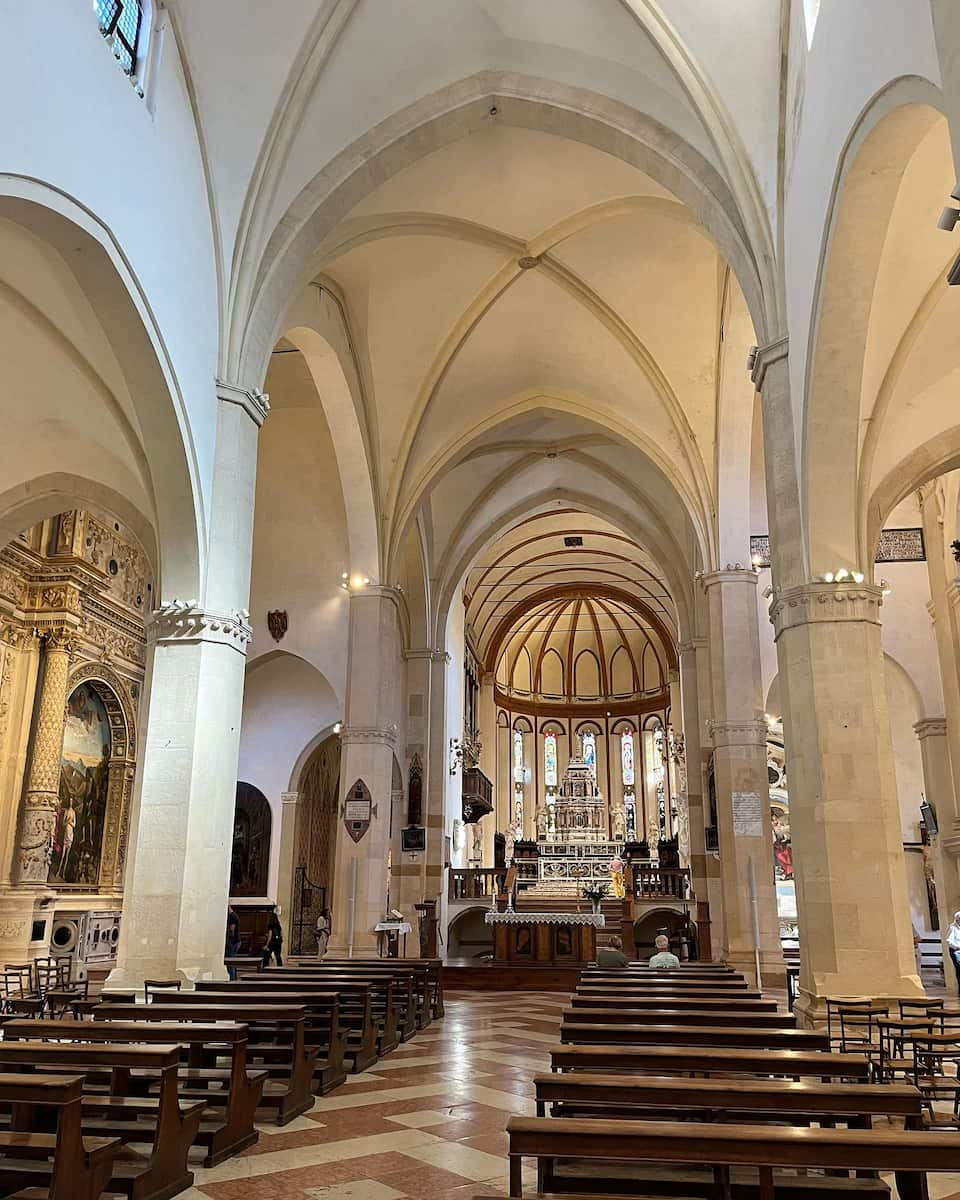
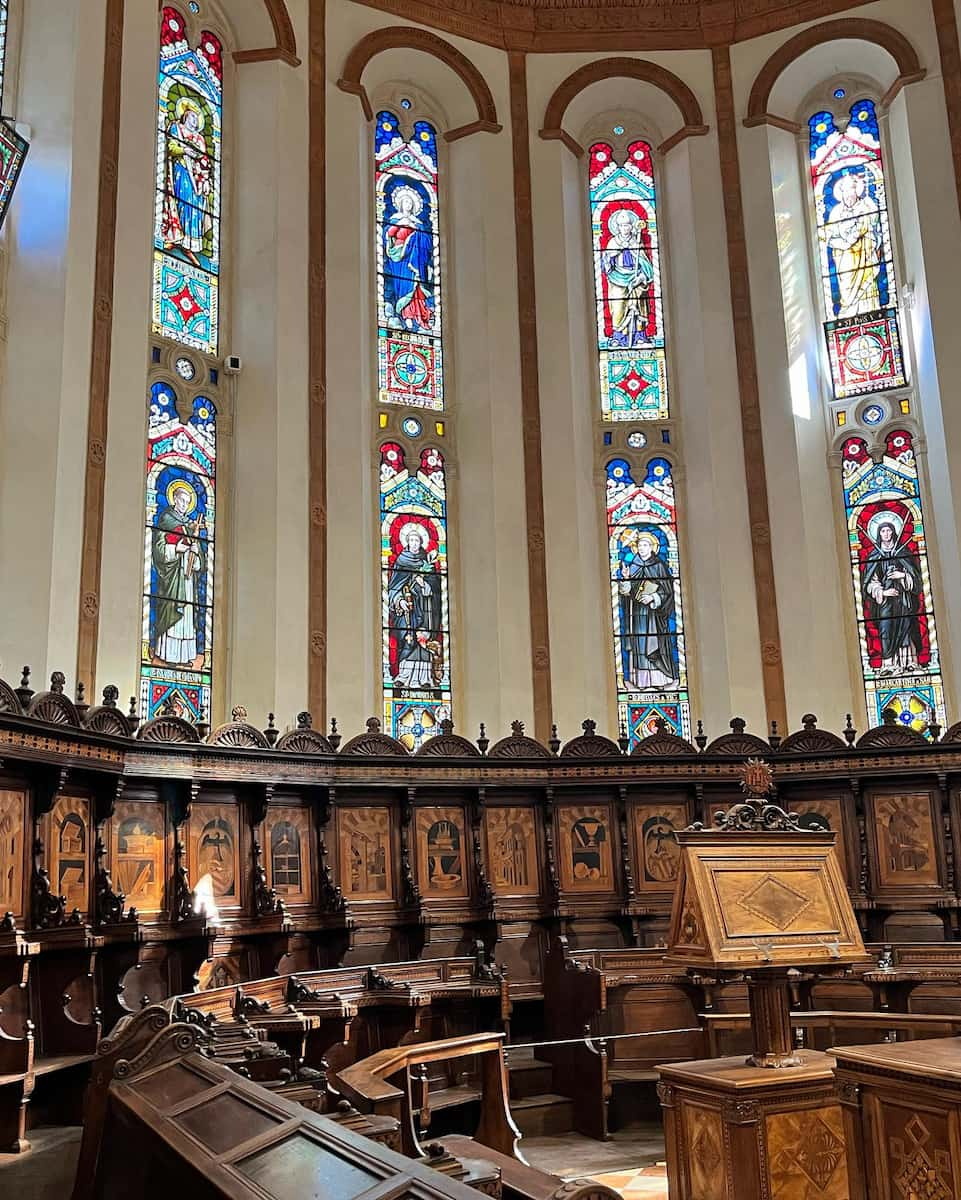
Practical tip: Admission costs €3, but it’s free with the Biglietto Unico city pass. The church is open daily except Mondays, from 9:00-17:00. I found the lighting best for photography in the late morning.
8. Cathedral Santa Maria Annunciata
Gothic grandeur. The cathedral, dedicated to Santa Maria Annunciata, serves as the heart of Catholic worship in the city. I was immediately drawn to its impressive Gothic façade, constructed between 1444 and 1467, which stands as a testament to medieval craftsmanship.
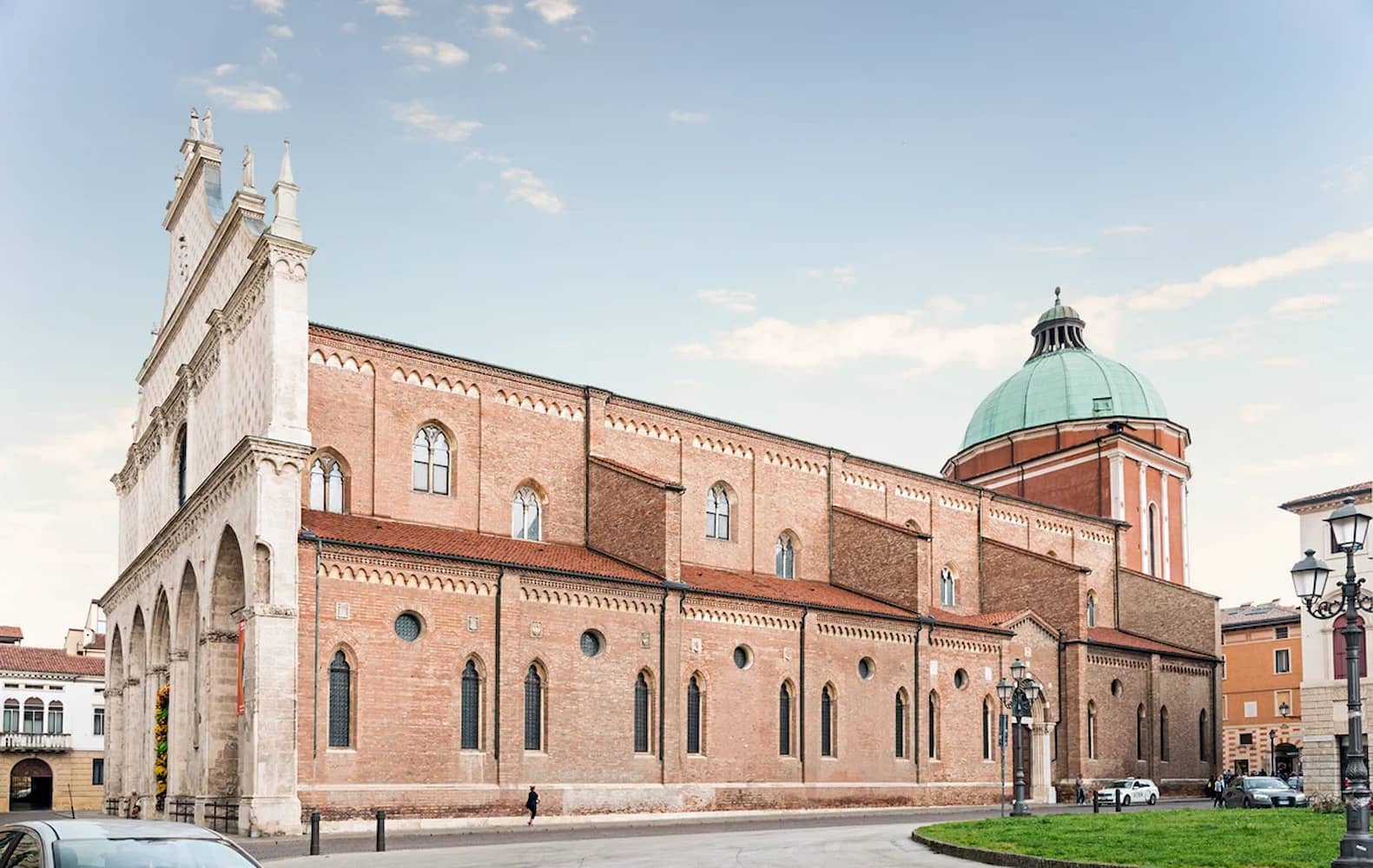
Palladio’s touch. The renowned renaissance architect Andrea Palladio left his mark here too, designing the main altar, the northern portal, and the magnificent dome. Walking through the cathedral, I could sense how his work transformed the space, creating a harmonious blend of Gothic and Renaissance elements.
Visitor highlights:
- The magnificent dome designed by Andrea Palladio
- The northern portal with its intricate carvings
- The 15th-century Gothic façade
- The archaeological museum in the crypt
War and restoration. The cathedral suffered heavy damage during World War II bombings, but has been lovingly restored. The restoration work, completed in 2002, has preserved the building’s historical significance while ensuring it remains a living place of worship.
Underground discoveries. What truly fascinated me was exploring the cathedral’s basements, which function as an archaeological archive. I saw remnants of different eras: a Roman house, a domus ecclesiae, remains of Lombard-Carolingian and Romanesque churches – all layered beneath the current structure.
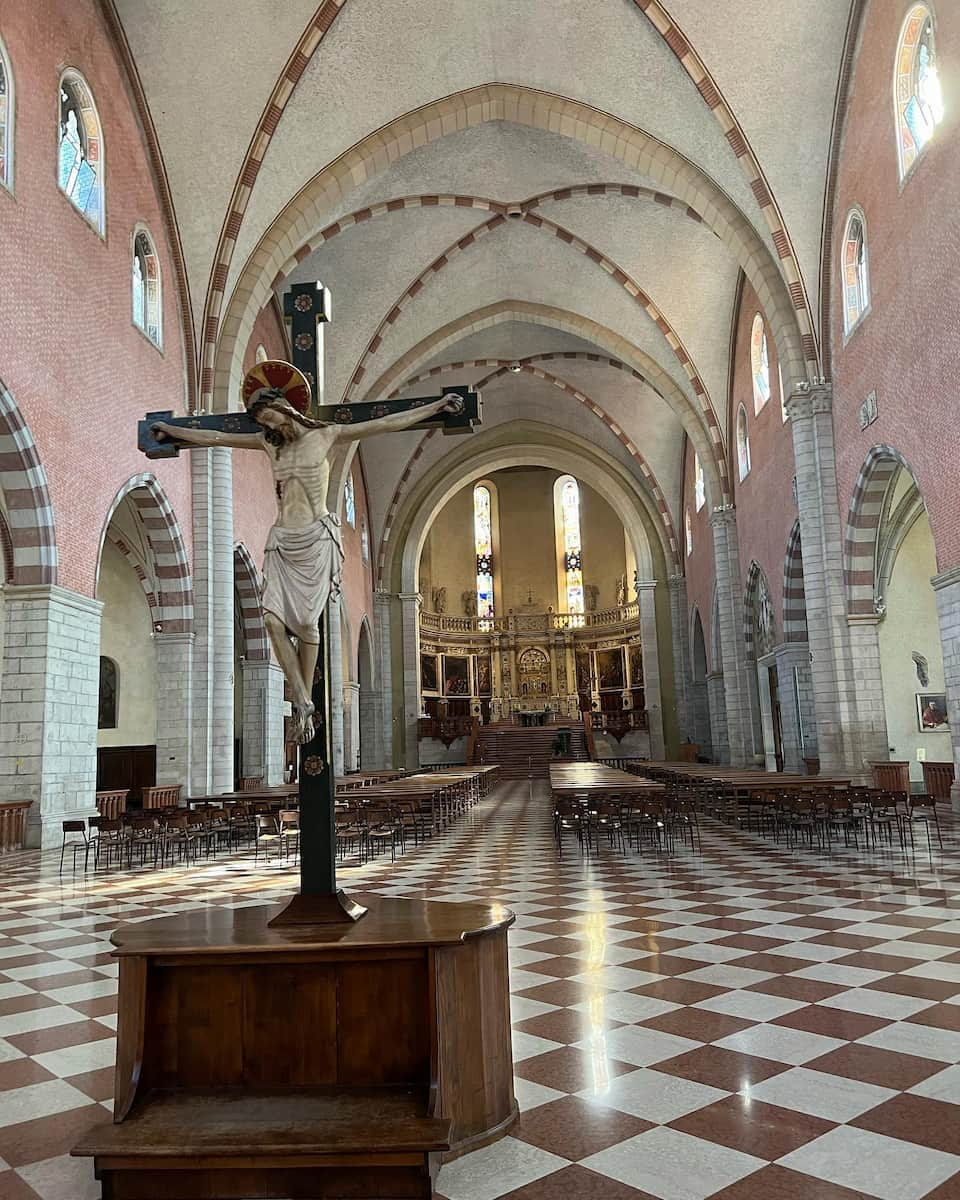
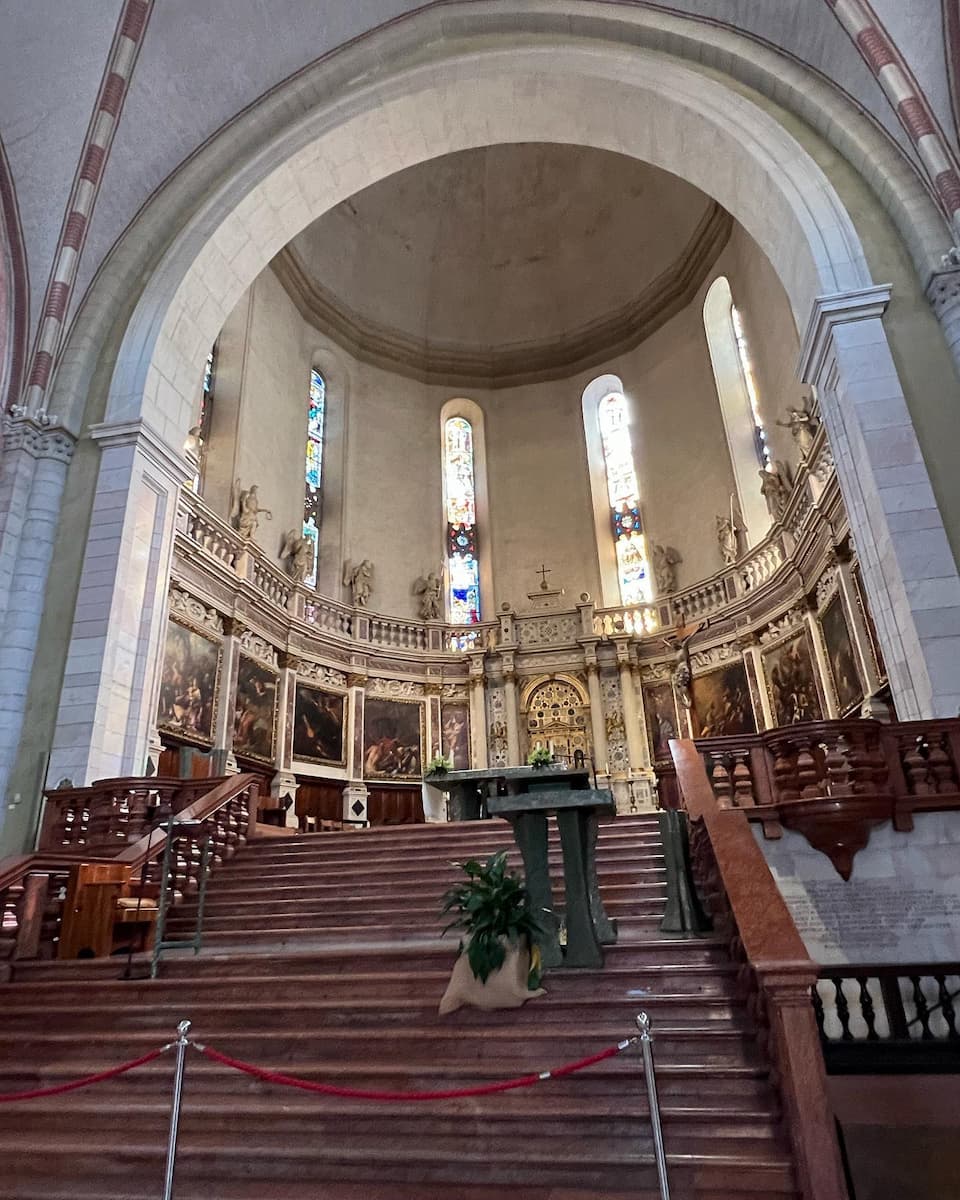
Practical tip: Don’t miss the underground archaeological sites, which are open to the public throughout the year. The cathedral is accessible daily with free entry, though a small donation is appreciated. Visit during weekday afternoons when religious services are less frequent.
Things to Do in Vicenza with Kids
1. Parco Querini
Green Escape. Watching my kids run through Parco Querini’s sprawling lawns reminded me why this is the beloved park of Vicenza for families. The 17th-century English-style garden offers shaded paths perfect for little legs, while the central pond with ducks and swans kept them entertained for ages. We rented a pedal boat (€8 for 30 minutes) to explore the water, and the kids loved spotting fish beneath the surface.
Playtime Paradise. The modern playground near the park’s southern entrance became our daily stop, with its climbing structures, swings, and sandpit. Nearby, teens practiced skateboard tricks on the concrete ramps while younger children rode scooters along the wide pathways. On weekends, we often saw puppet shows or live music near the neoclassical Tempietto, a picturesque gazebo perfect for family photos.


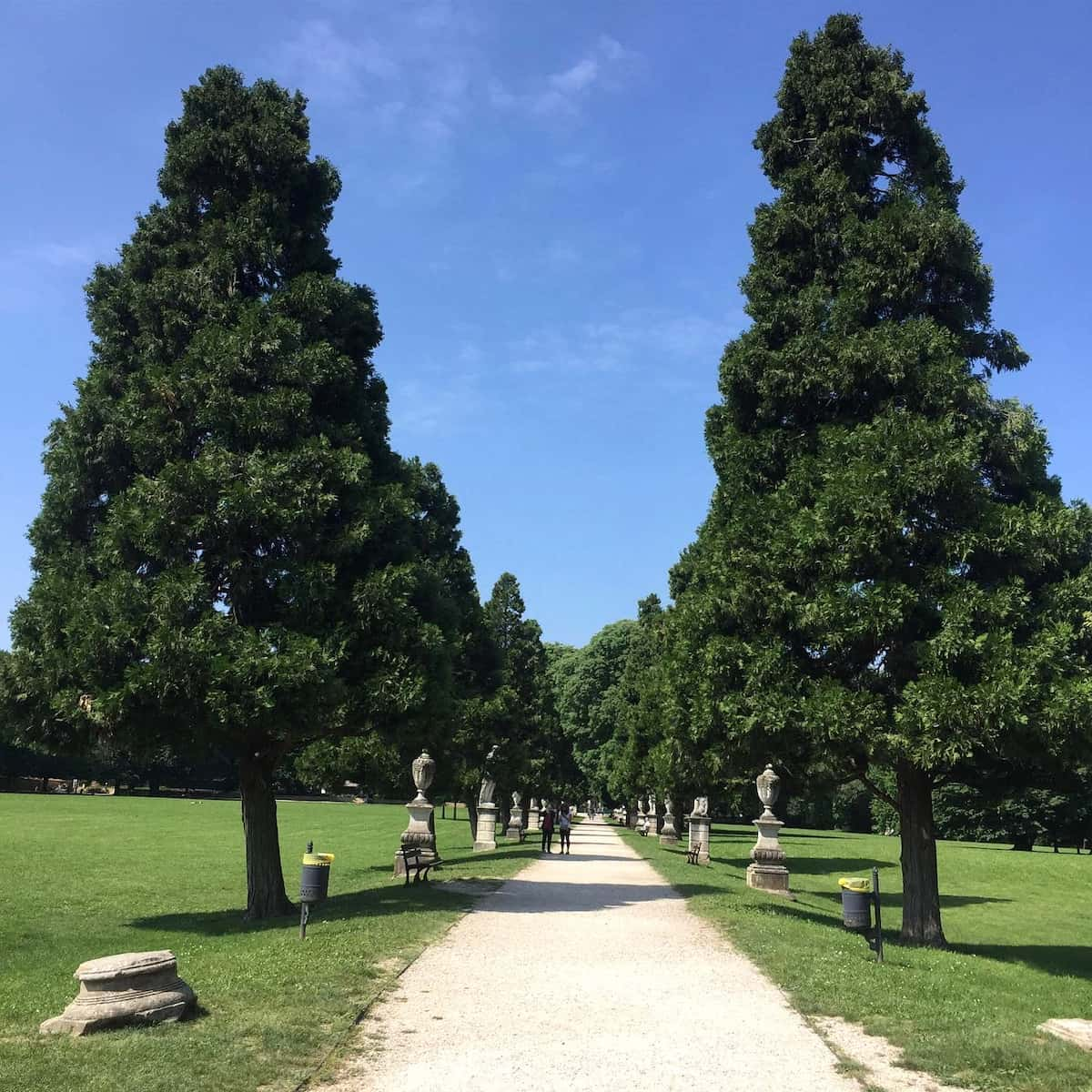


Picnic Perfection. We quickly learned to pack lunches – the park’s open lawns and wooden benches make ideal picnic spots. Local families gather here in the evenings, spreading blankets and enjoying takeaway gelato from nearby Gelateria Veneta (try their creamy stracciatella). The park’s free entry and central location (just 10 minutes from Piazza dei Signori) made it our go-to for burning off energy.
| Activity | Cost |
|---|---|
| Pedal Boat Rental | €8/30 min |
| Gelato | €2.50/scoop |
| Park Entry | FREE |
Budget Tip: Visit Wednesday mornings when the small petting zoo near the pond offers free animal encounters.
2. Salvi Gardens
Renaissance Retreat. My children’s eyes widened at Salvi Gardens’ hidden “magic door” – a 16th-century stone gateway leading to this secretive green space. Designed in 1592, these compact but enchanting gardens feature boxwood mazes that kids adore getting lost in. The twin loggias (Andrea di Pietro della Gondola’s Loggia Valmarana and the older Loggia Longhena) became our imaginary castles for afternoon play.
Water Wonders. The central fountain, with its splashing water and goldfish, became an instant hit. We bought breadcrumbs (€1 from nearby vendors) to feed the fish, while the benches under the plane trees gave me a chance to rest. Teenagers in our group loved photographing the gardens’ geometric patterns for Instagram, especially the perfect symmetry of the hedge designs.




Cultural Play. On summer evenings, we joined locals for open-air cinema screenings (€5/person) projected onto the loggia walls. The gardens transform into a fairy-tale setting as darkness falls, with soft lighting illuminating the statues and fountains. For active kids, the wide gravel paths are ideal for learning to ride bikes away from traffic.
| Activity | Cost |
|---|---|
| Bread for Fish | €1/bag |
| Open-Air Cinema | €5/person |
| Garden Entry | FREE |
Budget Tip: Arrive before 10 AM to have the mazes and loggias nearly to yourselves.
⭐Best activities
- Best of Vicenza Guided Private Tour For Kids and Families – Our expert guide will focus on your children and make sure that they have fun while strolling through the historical center. This fun adventure will feature educational material, quizzes, games, and important landmarks such as Piazza dei Signori, the Basilica Palladiana, and the Salvi Gardens. Immerse yourself in history and culture while your little ones gain real-world experience and discover the beauty of Vicenza.
Free Things to Do in Vicenza
1. Valmarana Villa To The Dwarfs
Enchanting Discovery. I stumbled upon Villa Valmarana ai Nani while exploring the outskirts, just a 5-minute drive from the city center. This beautiful Venetian-style villa, built around 1670, gets its unique nickname “ai Nani” (of the Dwarves) from the 17 peculiar dwarf sculptures that adorn its boundary walls. What makes this place special is the fascinating legend behind these stone figures – supposedly they were servants who turned to stone after their beloved dwarf mistress Layana took her own life upon discovering her condition.
Artistic Treasures. While the interior requires a ticket, I found that wandering the exterior grounds offers a free glimpse of this cultural landmark. The villa’s most celebrated feature – the exceptional frescoes by Giambattista and Giandomenico Tiepolo – can be seen through some windows if you’re lucky with positioning. These masterpieces depict scenes from ancient mythology, epic poems like the Iliad and Aeneid, and daily life of the period.
Budget Tip: Visit on Sunday, November 3rd when many Vicenza museums offer free entry during the All Saints’ Holiday. The villa is typically open daily from 10am to 6pm.
2. Church of San Lorenzo
Gothic Grandeur. The Church of San Lorenzo captivated me with its imposing gabled façade and magnificent Gothic portal. Completed around 1300, this church has survived centuries of tumultuous history, including abandonment after Napoleon’s invasion when it served as both a hospital and military barracks. The Franciscans who originally built it only returned in 1927, more than a century after being forced to leave.
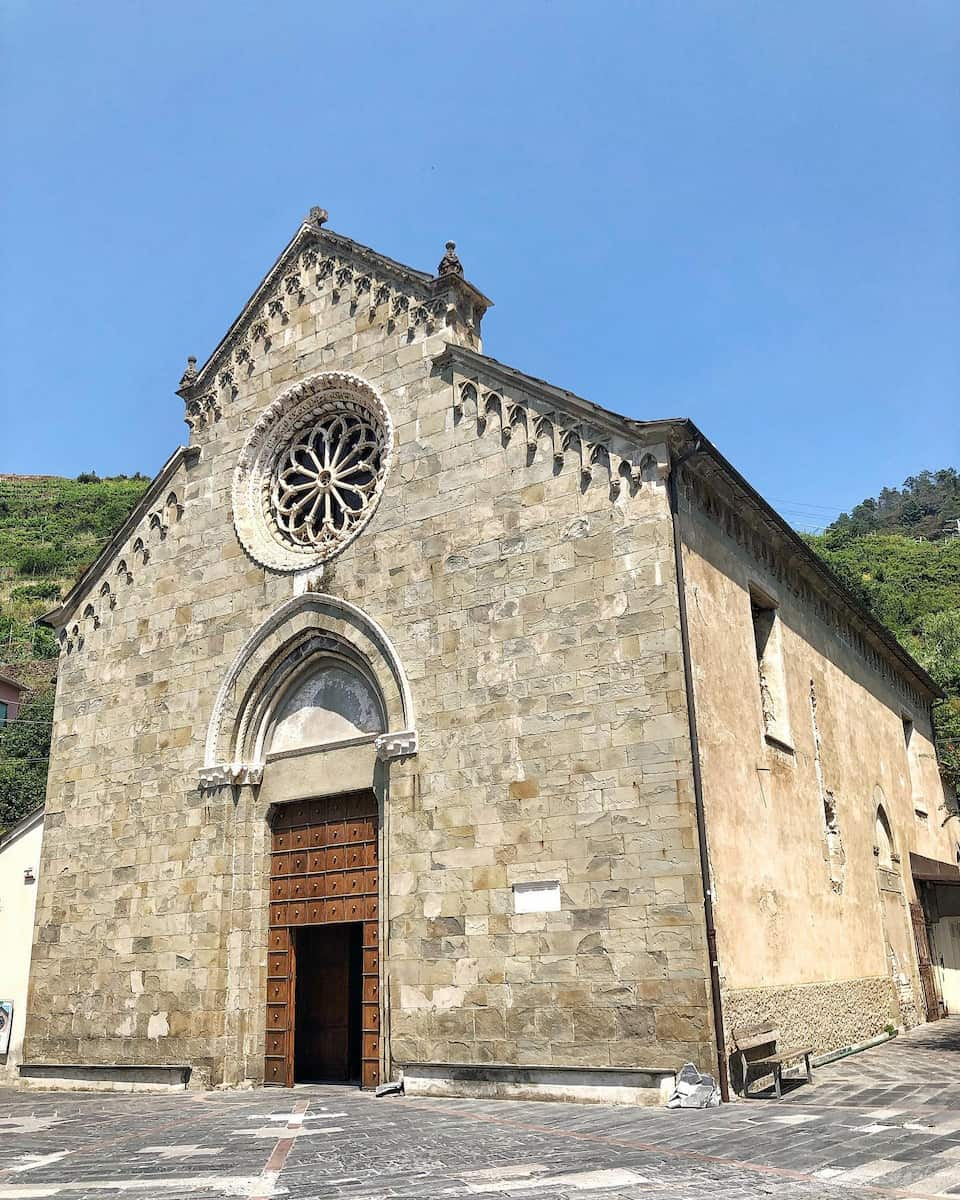
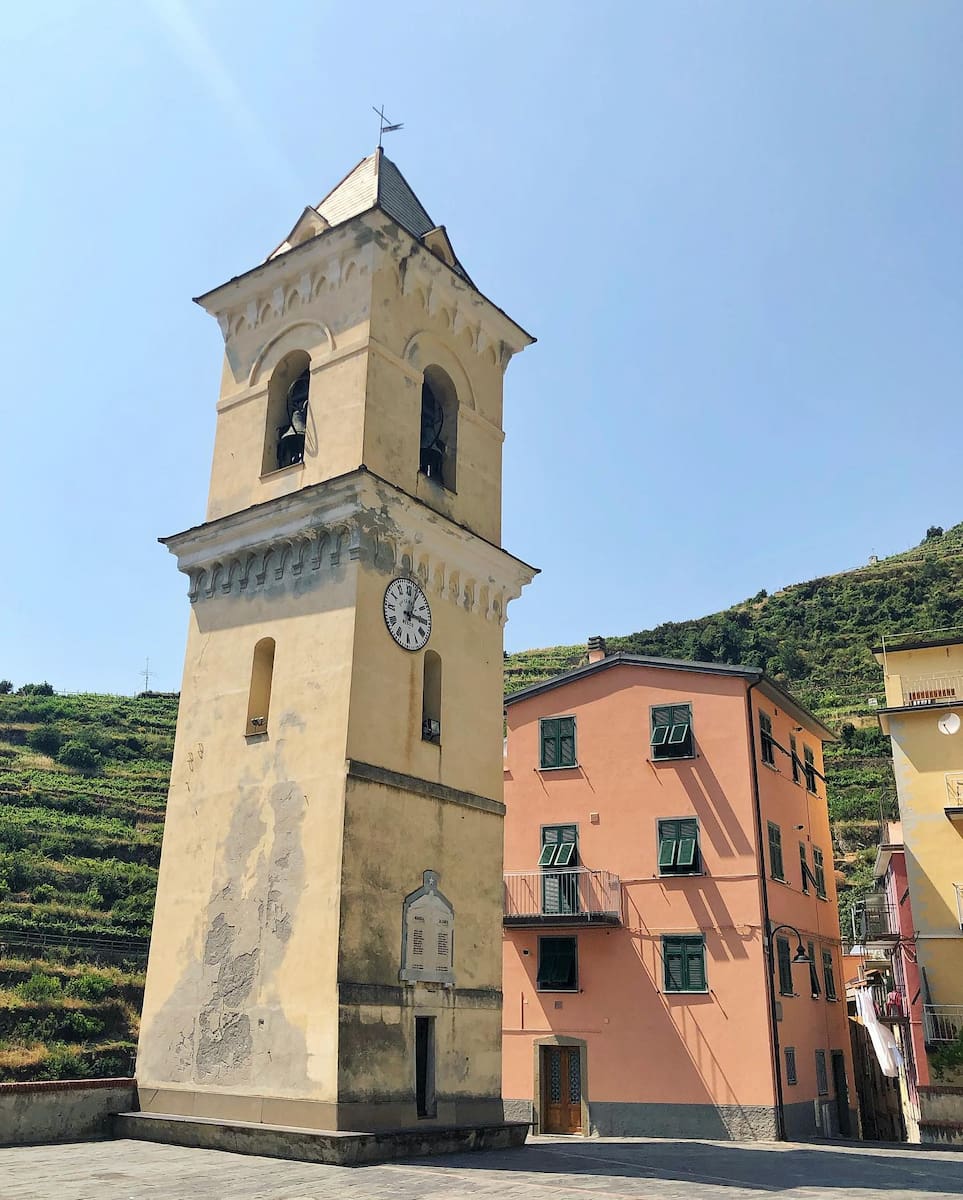
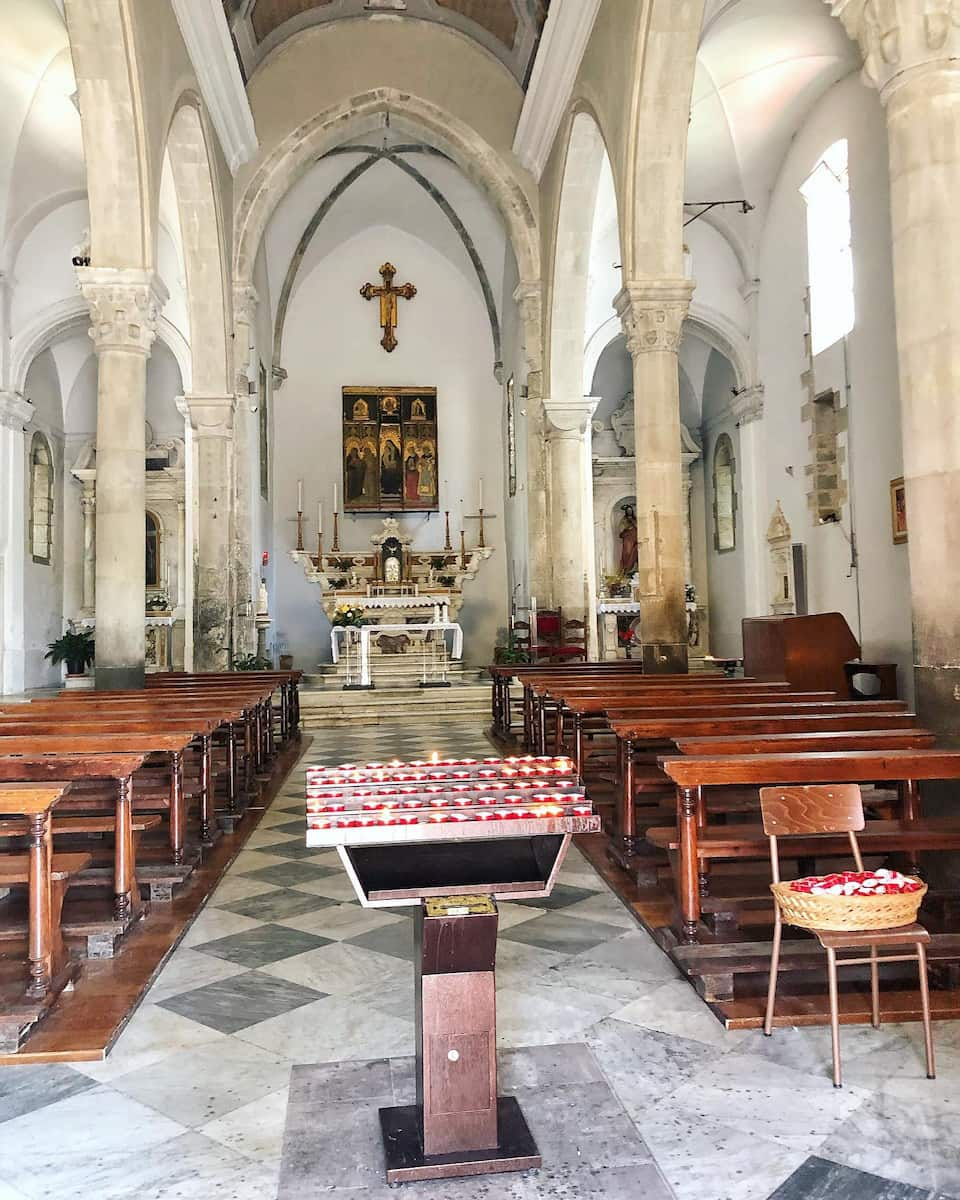
Artistic Heritage. Stepping inside, I was struck by the church’s soaring interior with huge striped columns dividing the central nave from two side aisles. The most impressive artwork is the Altare Pojana on the right side, featuring a marble altarpiece attributed to sculptor Pietro Lombardo (circa 1474) and frescoes possibly created by Bartolomeo Montagna. The central altar depicts Christ supported by angels, flanked by Saint Francis and Saint Bernardino da Siena.
Budget Tip: While many churches in Italy charge entrance fees, San Lorenzo remains free to visitors. It’s located at Piazza S. Lorenzo, 2.
3. Palazzo Leoni Montanari
Baroque Splendor. Palazzo Leoni Montanari stands out as Vicenza’s only Baroque palace amid the city’s predominantly Palladian architecture. Built around 1676 for Giovanni Leoni Montanari, a wealthy merchant whose fortune came from his grandfather’s textile business, this opulent residence showcases the family’s ambition and social climbing that culminated in their obtaining a noble title in 1693.
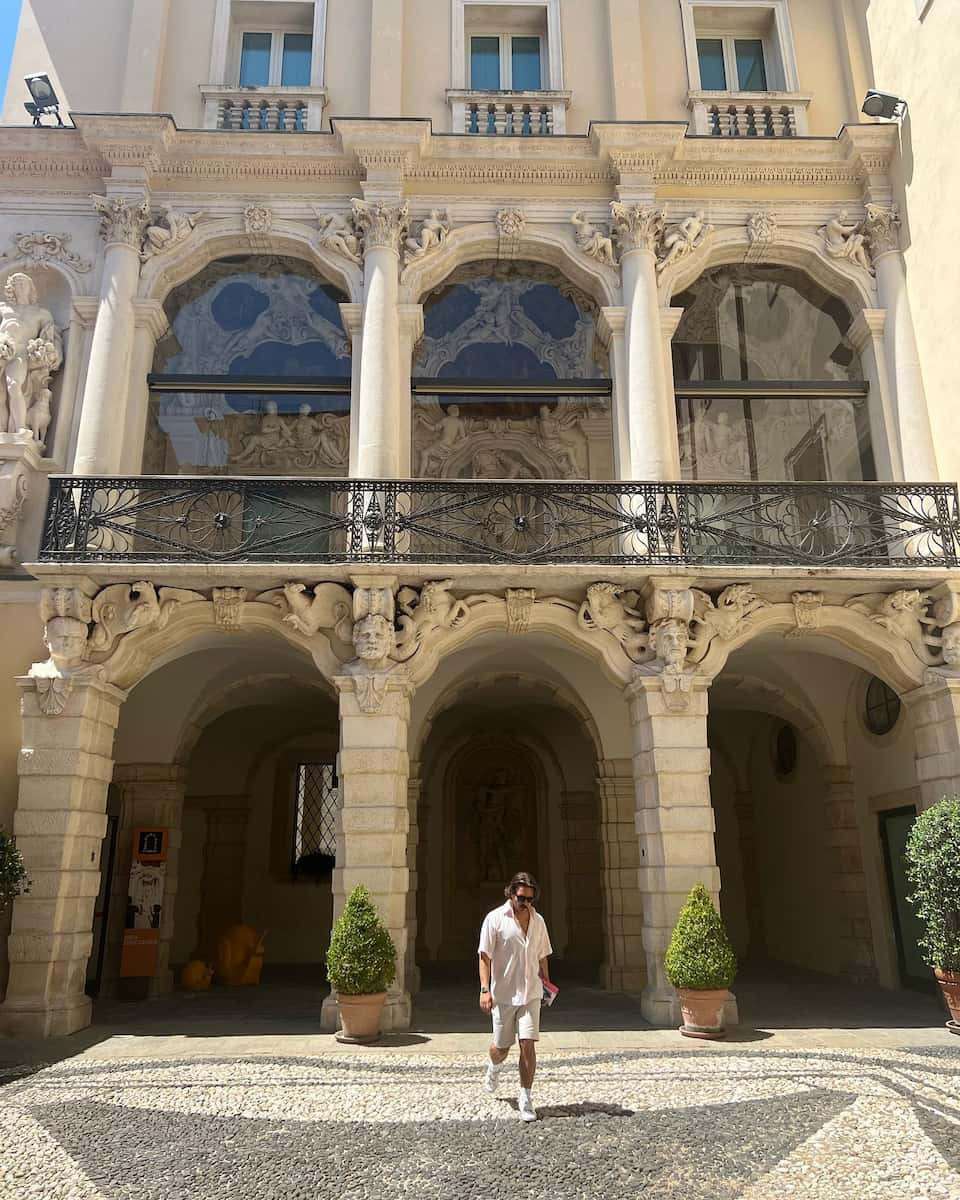
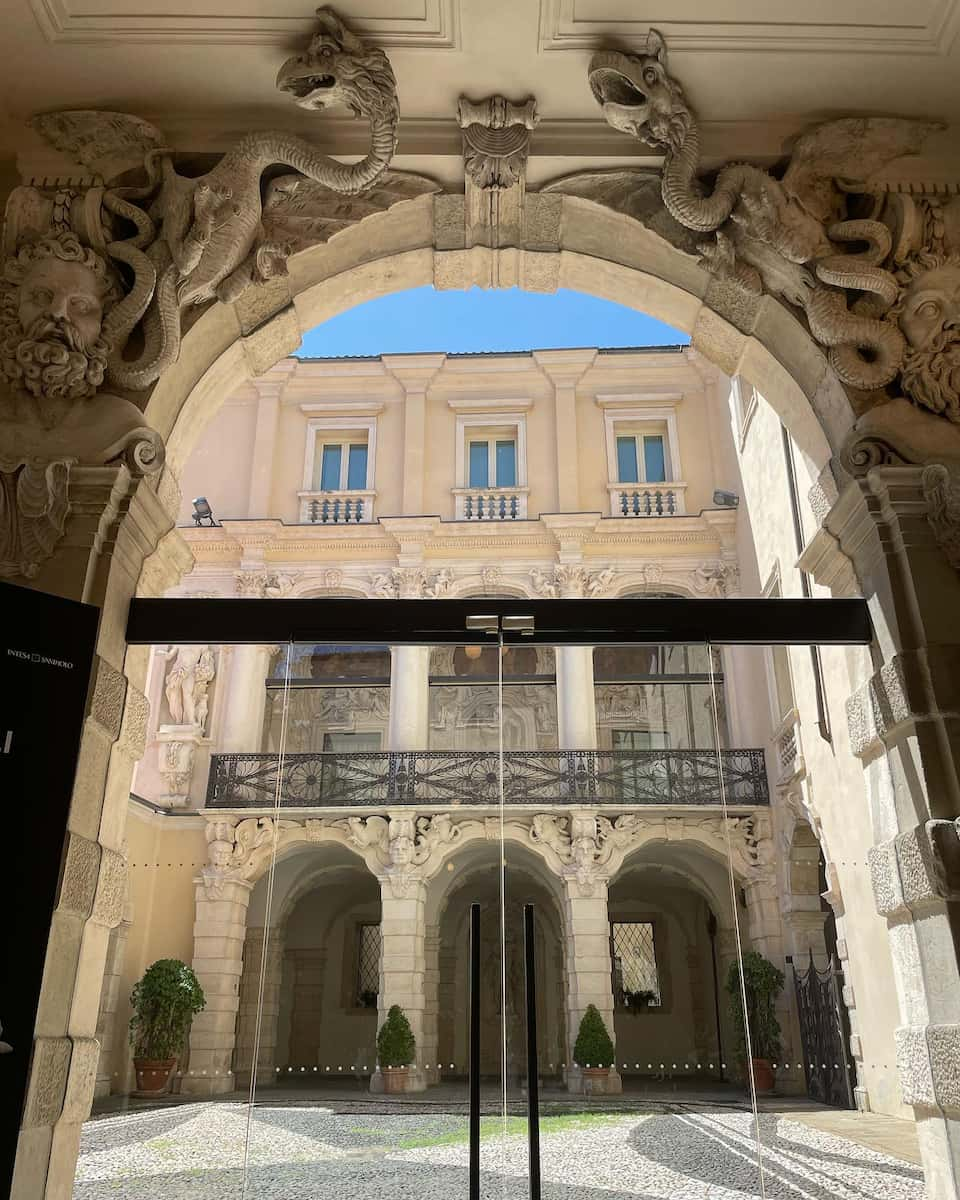
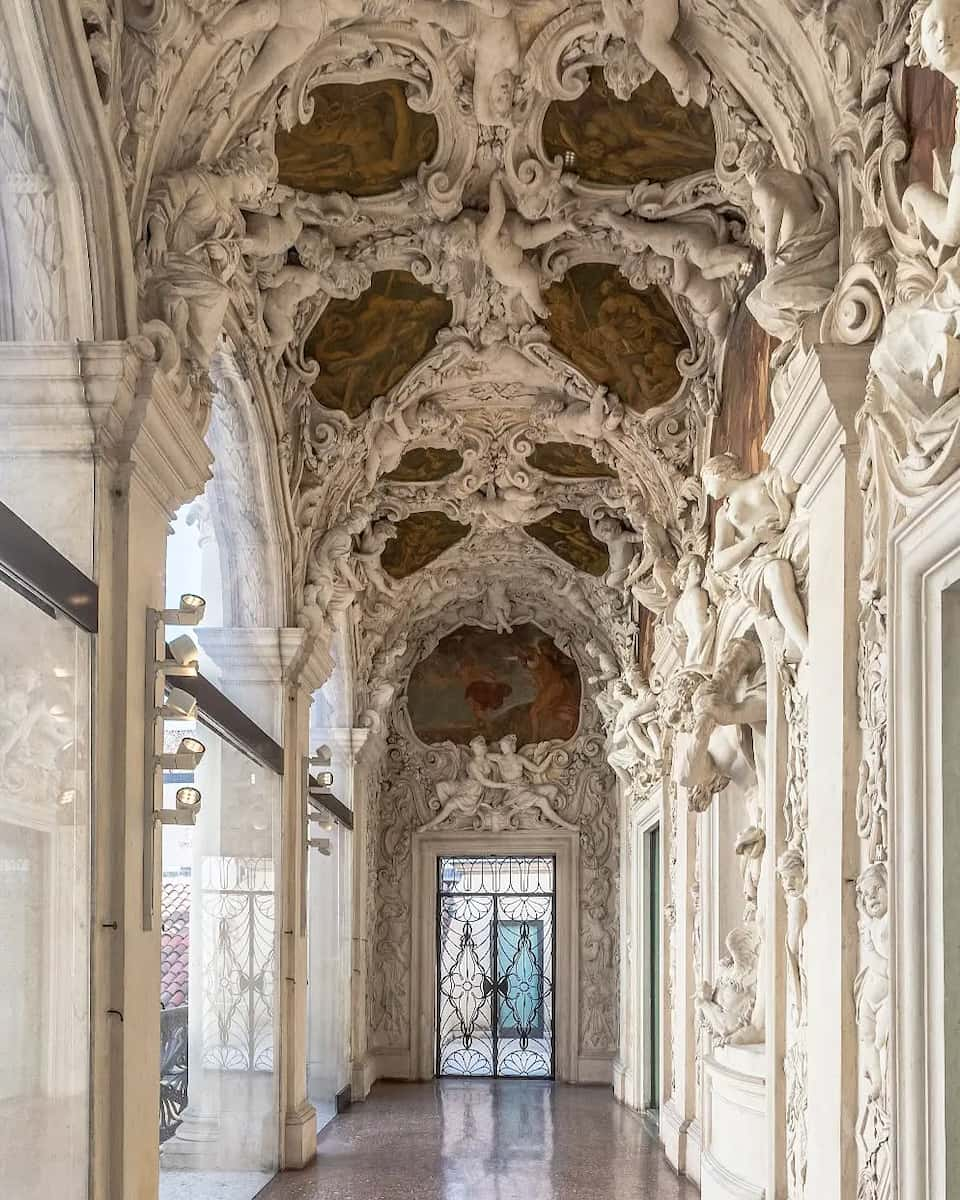
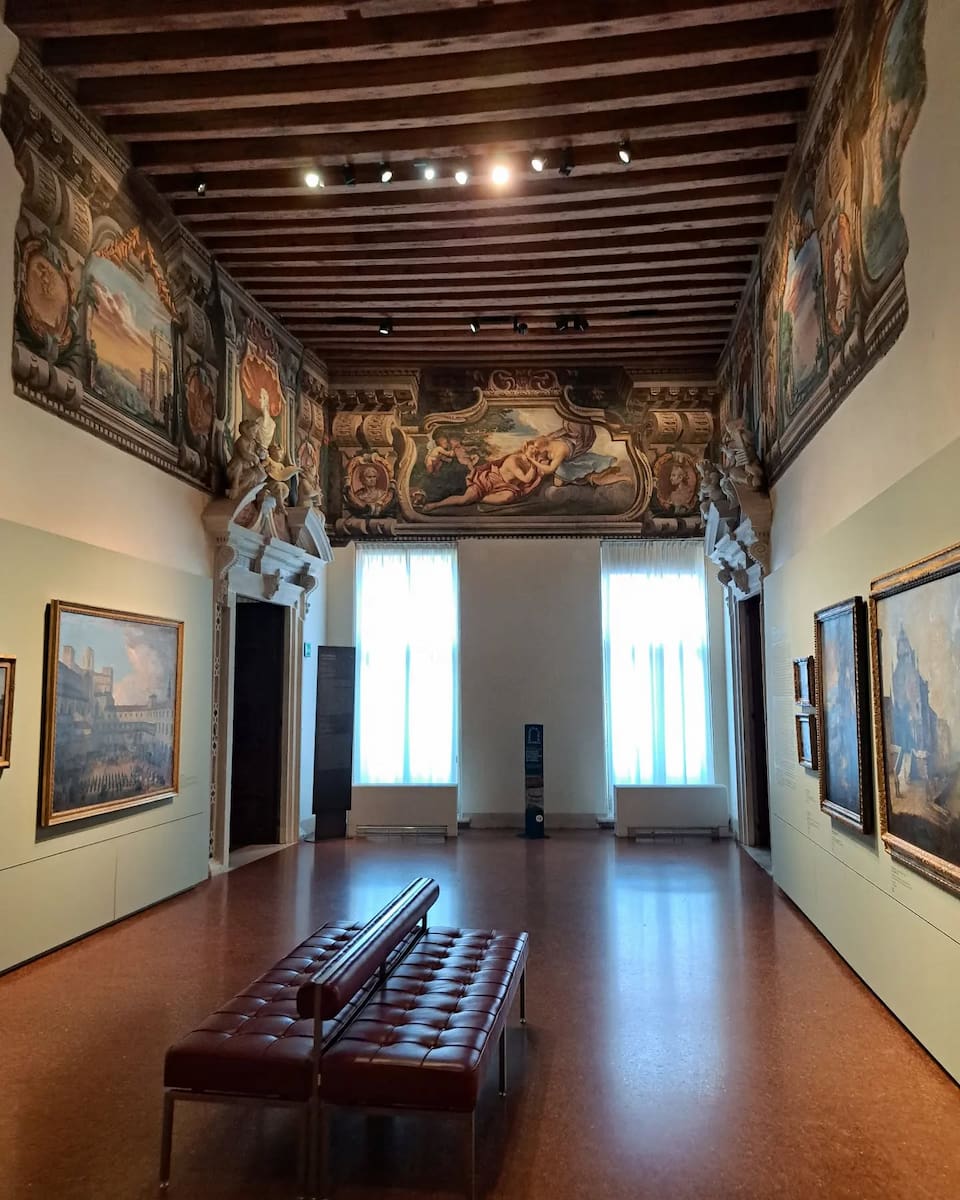
Cultural Treasure Trove. Now part of the Gallerie d’Italia museum network managed by Intesa Sanpaolo banking group, the palazzo houses three remarkable collections: Russian icons (one of the most important collections in Western Europe), 18th-century Venetian paintings by masters like Canaletto and Tiepolo, and ancient Greek ceramics. The interior features magnificent stuccoes, frescoes, and sculptures created by artists including Andrea Paraca, the Marinali brothers, and Louis Dorigny.
Budget Tip: Entry is free for Intesa Sanpaolo bank clients, and on the first Sunday of each month, everyone can visit without paying. Regular admission is otherwise modest compared to similar cultural venues.
| Category | Information |
|---|---|
| Opening Hours | Tuesday to Sunday, 10:00 AM – 5:30 PM (closed Mondays) |
| Location | Contra’ Santa Corona, Vicenza, Italy |
| Best Time to Visit | Sunday mornings or during temporary exhibitions when the palazzo comes alive with cultural events |
Seasonal Activities
Christmas
Winter Wonderland: Vicenza transforms into a magical winter wonderland during Christmas. The festivities begin on December 1st with a dazzling official Christmas market in Piazza dei Signori. The square fills with wooden chalets offering a charming atmosphere and decorated trees, creating a festive backdrop for the bustling Christmas markets. These markets, located in various squares like Piazza Biade and Corte Palladio, offer a variety of local goods, crafts, and traditional tastes. Visitors can also enjoy an indoor ice rink at Campo Marzo, making it accessible for everyone, including those with disabilities.
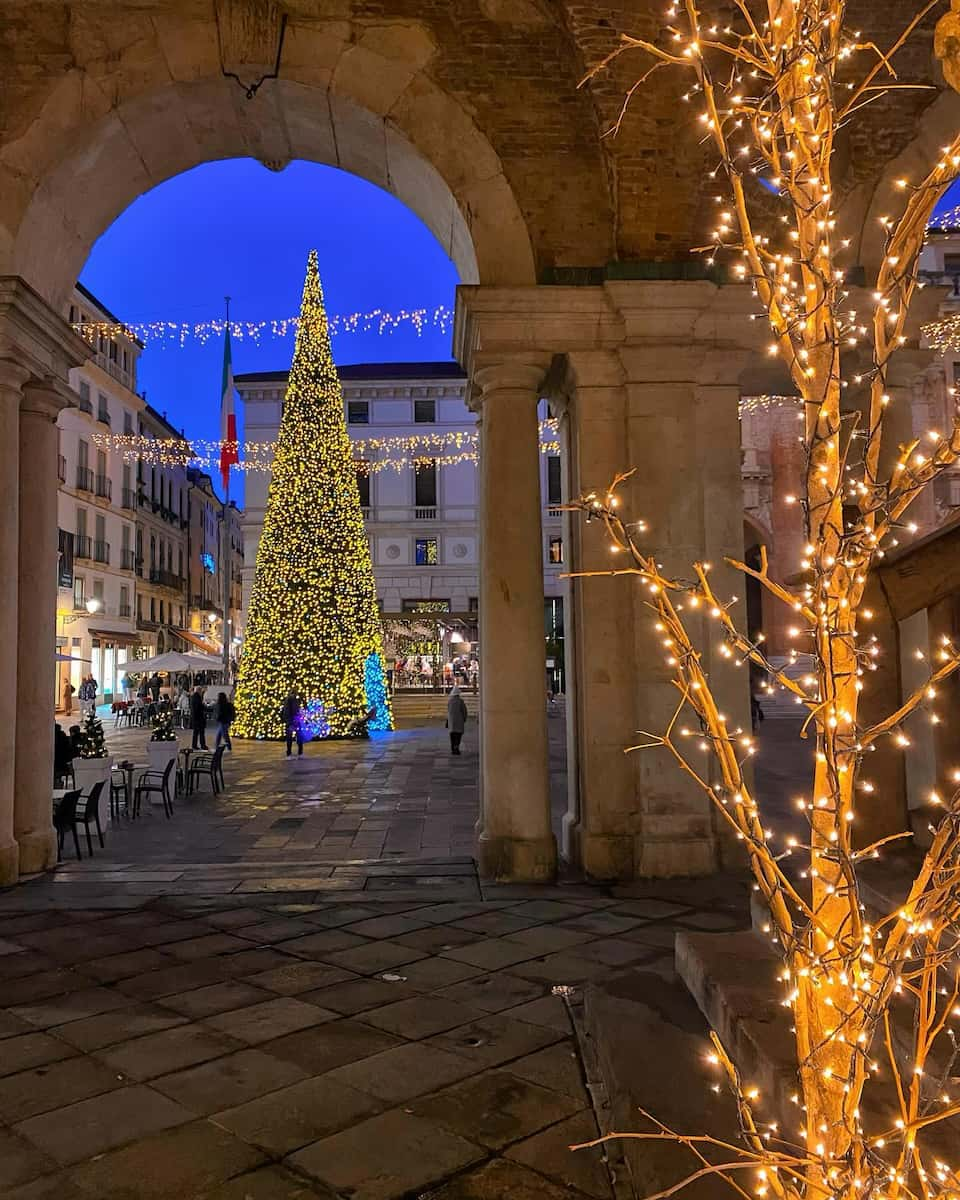
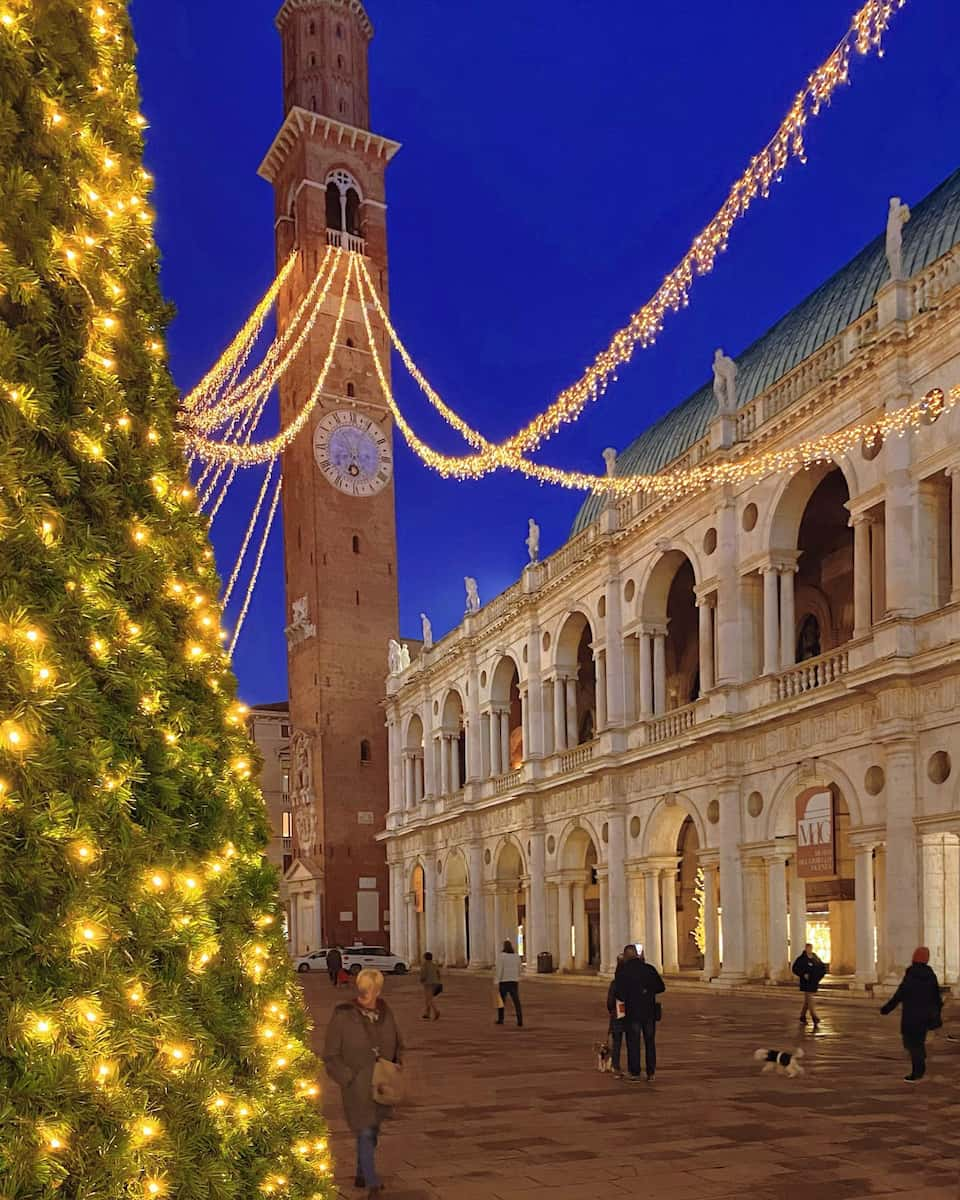
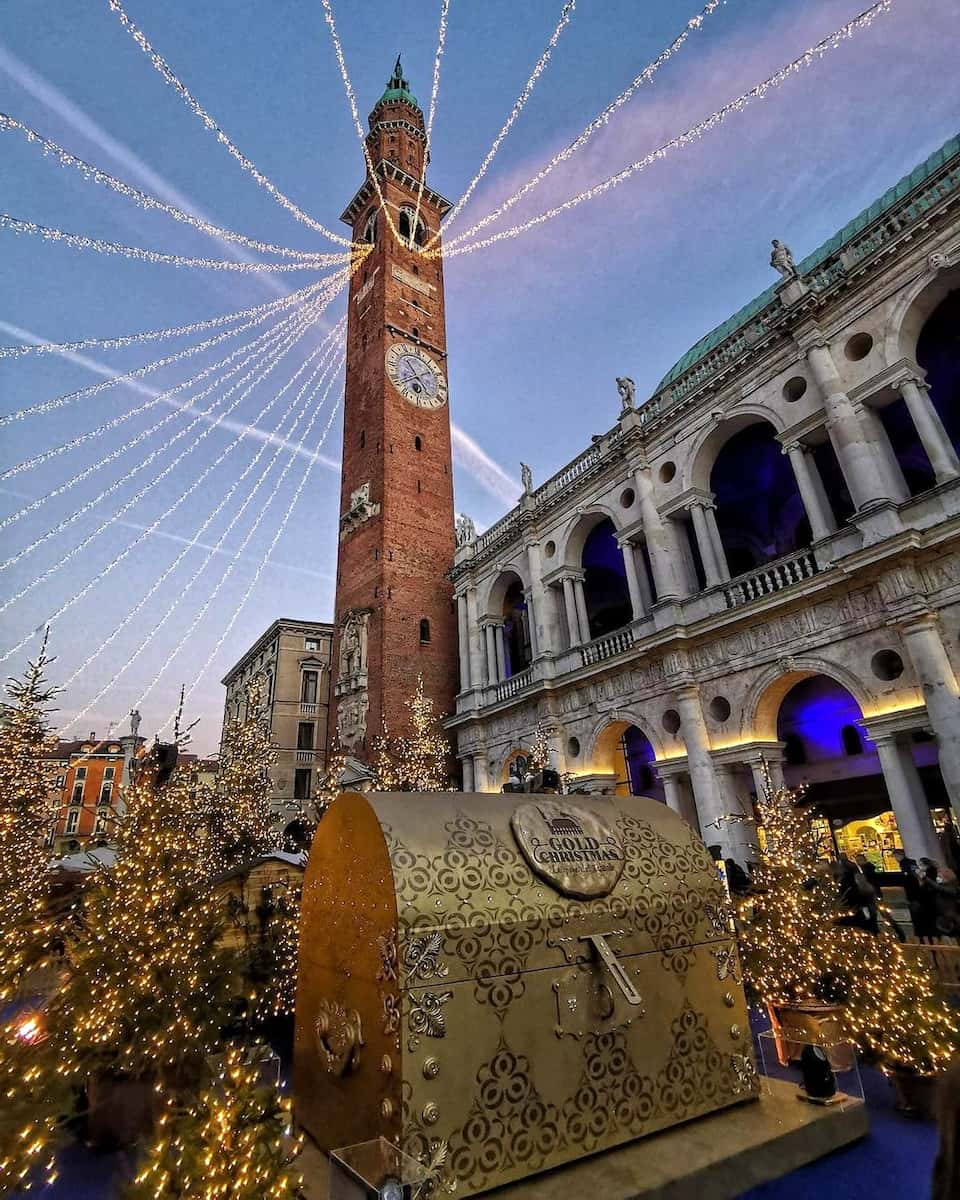
Cultural Events: The city hosts numerous cultural activities during this period, including traditional candlelight readings at the Bertoliana library, and musical performances in local churches. The Sanctuary of the Madonna of Monte Berico is a must-visit during this time, offering breathtaking views of the illuminated city.
Summer
Vibrant Festivals: Summer in Vicenza is a time of vibrant festivals and outdoor activities. The city hosts several music festivals, including the Vicenza Jazz Festival (May) and the Ferrock Festival (July-August). During the day in the warm months, street food and craft fairs. Visitors can enjoy special concerts in Piazza dei Signori and explore the surrounding countryside for hiking and cycling opportunities. The nearby Colli Berici Hills offer stunning views and scenic trails to explore.
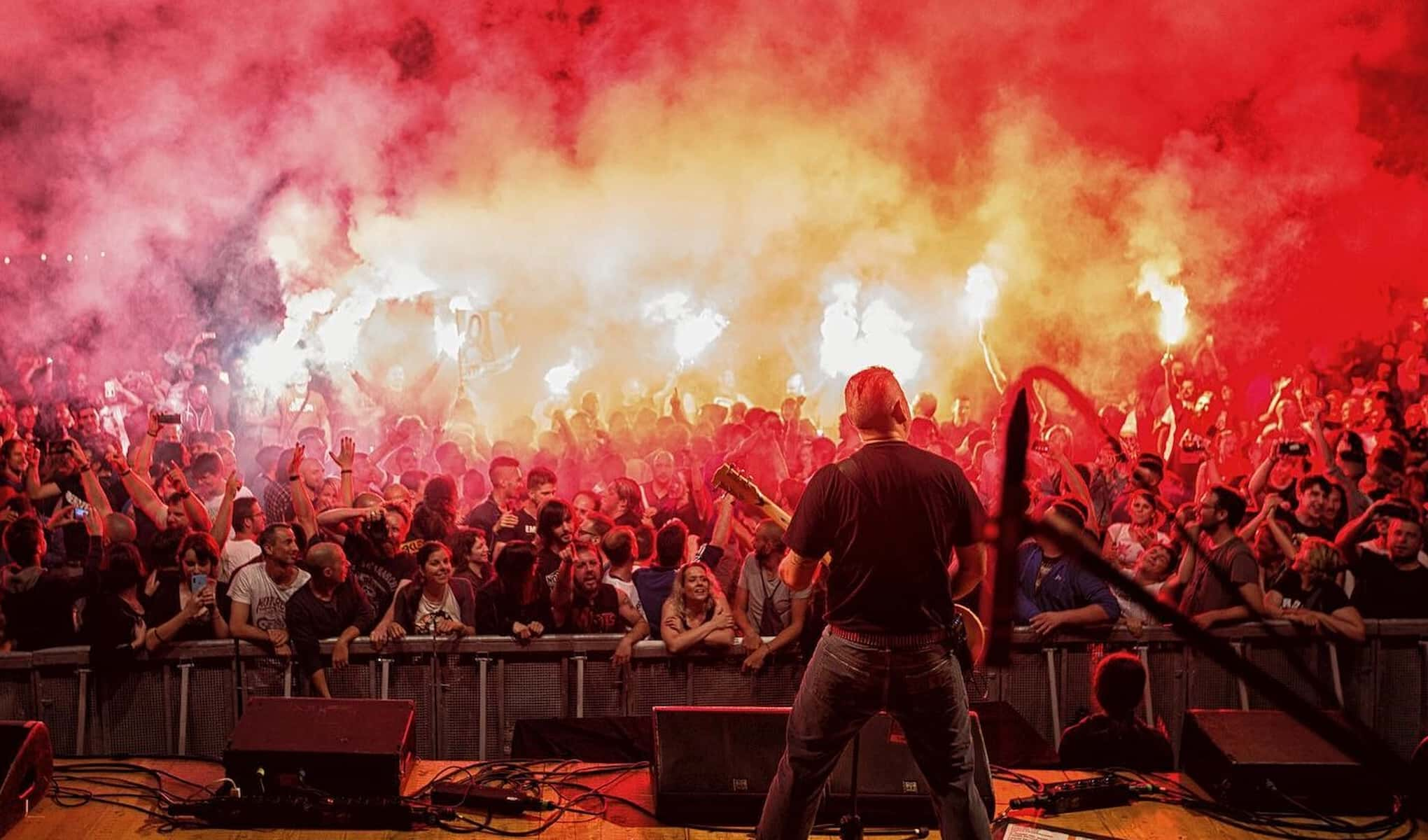
Local Markets: Summer is also a great time to explore Vicenza food markets, which offer fresh produce and regional specialties. Don’t miss the Fiera di San Michele in Montecchio Maggiore (September).
Spring
Jazz and Culture: Spring in Vicenza is marked by the Vicenza Jazz Festival, which takes place over ten days in May. This festival features renowned jazz musicians performing in historic venues like the Teatro Olimpico and local churches. The city’s cultural scene is also highlighted through guided tours and exhibitions showcasing Palladian architecture and local art.
Nature and Architecture: Spring is the perfect time to visit Villa La Rotonda, with its beautifully manicured gardens and charming views of the surrounding countryside. The city’s botanical garden with blossoming flowers and greenery makes it ideal for walking tours.
Autumn
Harvest Festivals: Autumn in Vicenza is a season of harvest festivals and cultural events. The city hosts CioccolandoVi, a chocolate festival, and Gustus: Wine and Flavors from the Berici Hills, showcasing local wines and cuisine. Visitors can explore the Colli Berici hills for wine tastings and vineyard tours, particularly during the autumn foliage season.
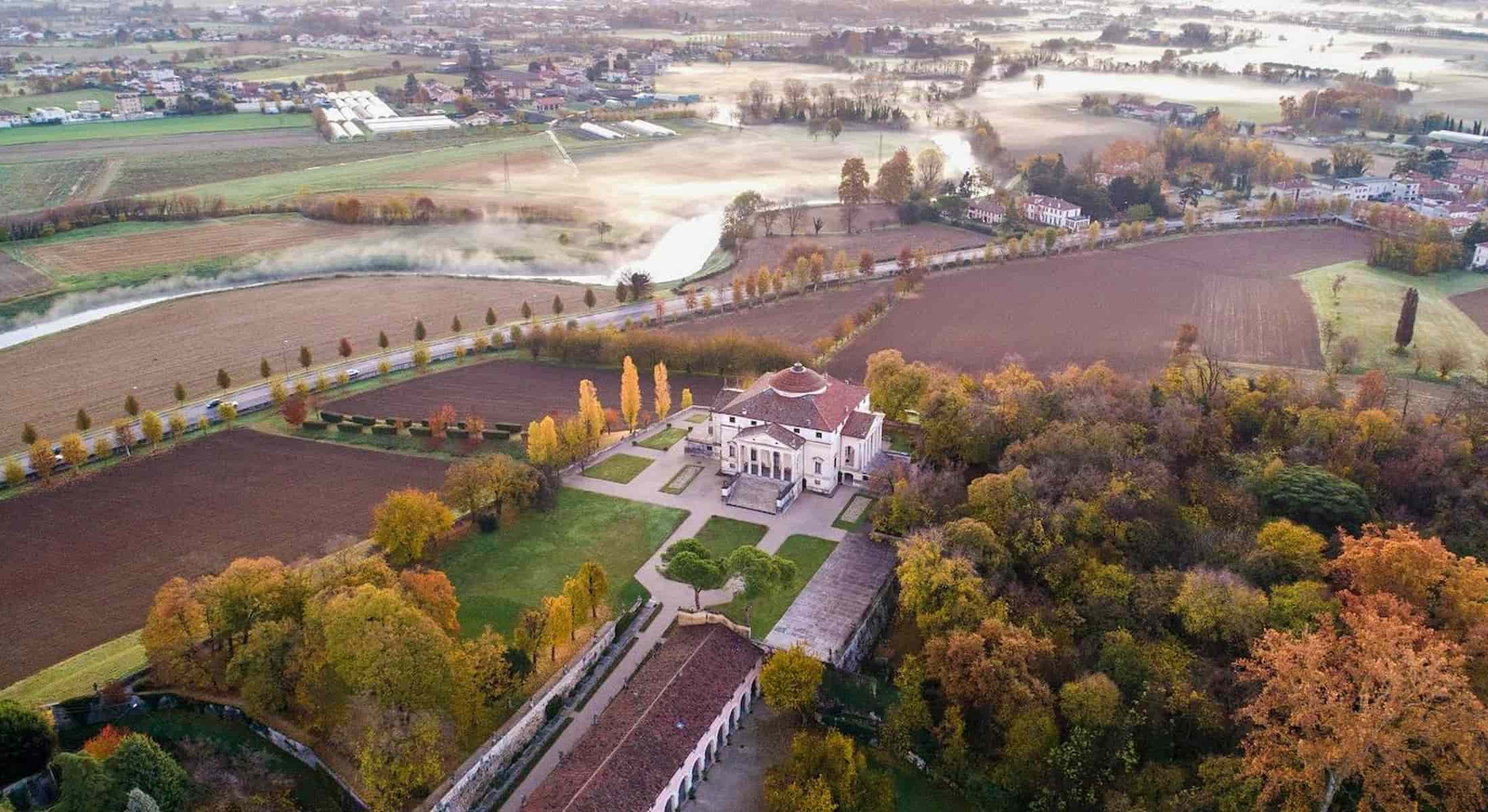
Cultural Events: The nearby towns also host various festivals, such as the Judrio Festival in Arzignano (October) and the Chestnut Festival in Recoaro Terme, offering a glimpse into regional traditions and flavors.
Day Trip from Vicenza
1. Venice
Historical Landmarks. A day trip to Venice from Vicenza is a must for anyone fascinated by history and architecture. As you step off the train at Santa Lucia station, you’re immediately transported into a world of winding canals and stunning Renaissance architecture. Start your journey at the iconic St. Mark’s Square, where you’ll be awestruck by the grandeur of St. Mark’s Basilica. Its Byzantine domes and intricate mosaics are a testament to Venice’s rich artistic heritage.
Venetian Marvels. Next, explore the opulent Doge’s Palace, once the seat of Venetian power. Its façade and lavish interior offer a glimpse into the city’s illustrious past. Don’t miss the Bridge of Sighs, connecting the palace to the old prisons. For a quintessential Venetian experience, take a gondola ride through the narrow canals, passing under ornate bridges and alongside centuries-old palazzos.
Hidden Gems. Venture beyond the main tourist areas to discover Venice’s hidden treasures. The Jewish Ghetto, Europe’s first, offers a poignant look at Venetian-Jewish history. For art enthusiasts, the Peggy Guggenheim Collection houses an impressive array of modern art in a stunning palazzo on the Grand Canal.
| Category | Details |
|---|---|
| Transportation | Train from Vicenza (45 minutes, €5-€65) |
| Activities | Explore St. Mark’s Basilica, St. Mark’s Square, Doge’s Palace, Gondola ride, Vaporetto tour along Grand Canal |
⭐ Best Activities
-
Vaporetto Public Transport in Venice – Enjoy unlimited access to water buses in Venice, Lido, and lagoon islands. Options include 75 minutes, 24, 48, or 72 hours, or even a 7-day ticket.
2. Padua
Cultural Experiences. Padua, a city steeped in history and culture, offers a perfect day trip from Vicenza. Begin your visit at the Scrovegni Chapel, home to Giotto’s revolutionary frescoes that marked a turning point in Western art. The vivid depictions of biblical scenes cover the entire interior, creating an immersive experience that transports you back to the early 14th century.
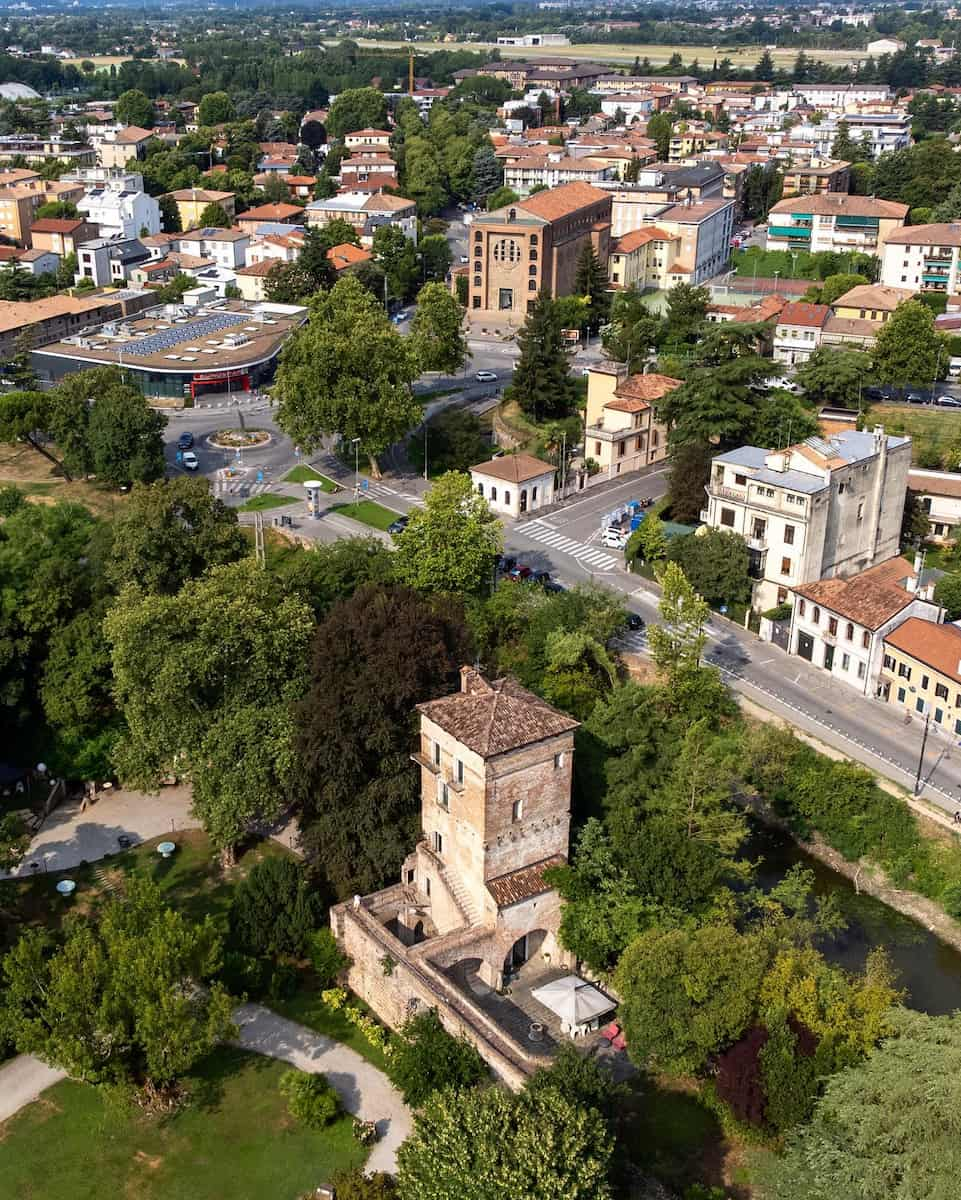
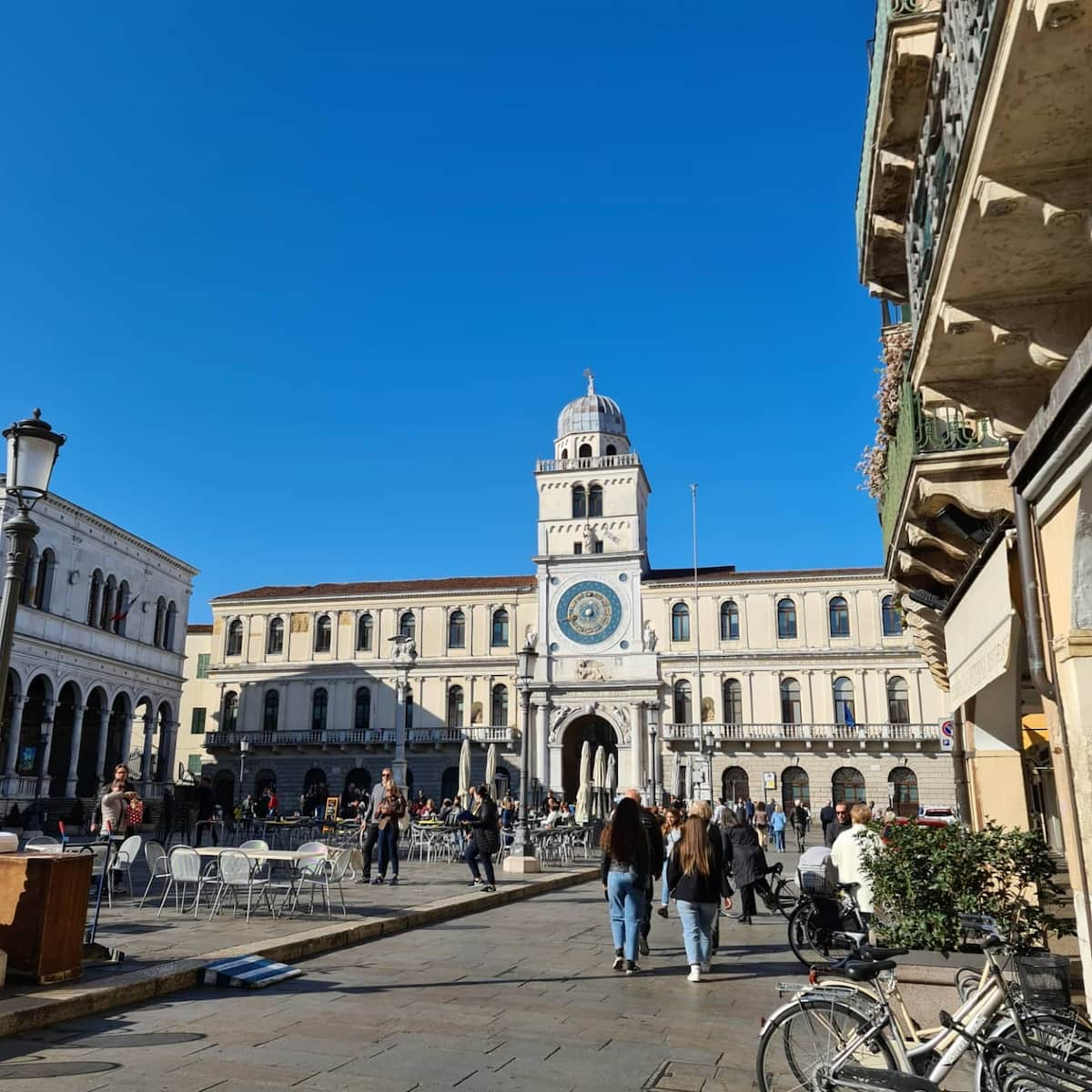
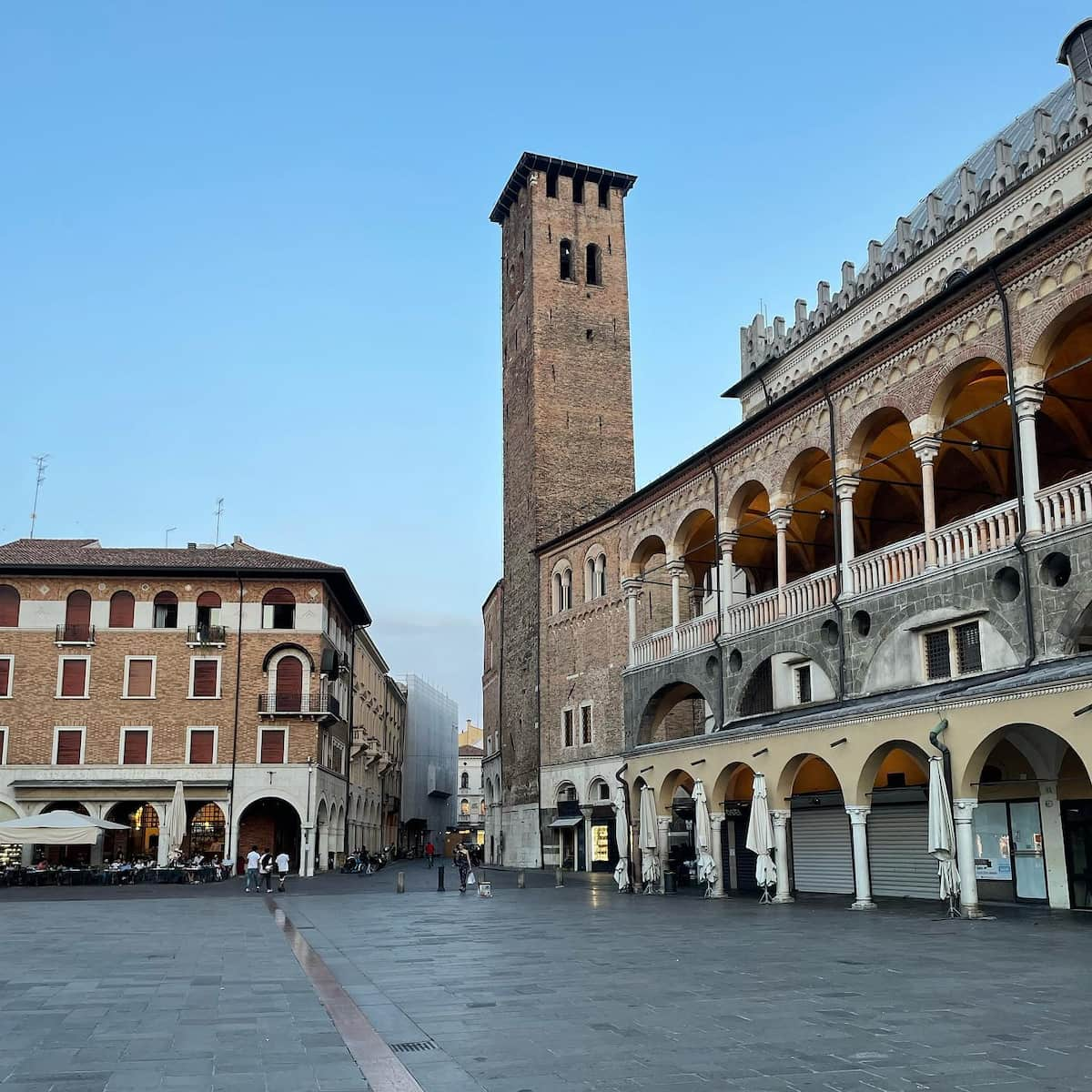
Academic Heritage. Next, explore the University of Padua, one of the oldest in Europe, where Galileo once taught. The historic Palazzo Bo houses the famous anatomical theater, the oldest surviving of its kind, offering a fascinating glimpse into early medical education.
City Highlights. Wander through the bustling Piazza delle Erbe and Piazza della Frutta, where local markets have been held for centuries. The imposing Basilica of St. Anthony, a major pilgrimage site, showcases a blend of architectural styles and houses the saint’s tomb. For a unique experience, visit the Prato della Valle, one of Europe’s largest squares, surrounded by a moat lined with statues of Padua’s most illustrious citizens.
| Category | Details |
|---|---|
| Transportation | Train from Vicenza (17 minutes, €2-€4) |
| Activities | Visit Scrovegni Chapel with Giotto’s frescoes, Explore University of Padua, Stroll through Prato della Valle |
⭐Best activities
- Padua Walking Tour with the Scrovegni Chapel – Discover the culturally rich city of Padua on this private walking tour with a certified local guide. Enter the beautiful Scrovegni Chapel, and the Padua Cathedral. See some of the most famous squares in the city, including Piazza delle Erbe, della Frutta and Piazza della Signoria, all of which overlook several important and majestic buildings.
3. Verona
Romantic Ambiance. Verona, known as the City of Love, is a charming destination that captivates visitors with its romantic atmosphere and rich history. Begin your day at the famous Juliet’s House, where you can see the balcony that inspired Shakespeare’s Romeo and Juliet. While the connection to the play is largely fictional, the 14th-century house and its romantic lore continue to draw couples from around the world.
Roman Heritage. The city’s Roman past comes alive at the Arena di Verona, a remarkably well-preserved 1st-century amphitheater. During summer evenings, it transforms into a magical open-air opera venue, offering an unforgettable experience under the stars. For panoramic views of the city, climb to the top of the Lamberti Tower in the heart of Verona.
Hidden Corners. Explore the charming streets of the historic center, where you’ll find hidden gems like the Church of San Zeno Maggiore, a masterpiece of Romanesque architecture. The nearby Castelvecchio, a 14th-century fortress turned museum, houses an impressive collection of medieval and Renaissance art. End your day with a stroll along the Adige River, crossing the picturesque Ponte Pietra for stunning views of the city’s skyline.
| Category | Details |
|---|---|
| Transportation | Train from Vicenza (26 minutes, €4-€60) |
| Activities | Visit Juliet’s Balcony, Explore Roman Arena, Enjoy a walk along Adige River, Enjoy a romantic dinner |
⭐Best activities
- Verona Highlights Walking Tour in Small-group – Get familiar with wonderful Verona, an eye-pleasing ancient city that offers churches and palaces, squares and cobblestoned streets. This guided tour gives you an in-depth look at Verona as you explore its highlights including the 2,000-year-old Arena di Verona and Juliet’s balcony. Numbers are limited to 12 people on this small-group tour, ensuring a more personalized experience.
- Verona Card with Arena Priority Entrance – Skip the line at Verona Arena and explore the city’s top museums, monuments, and churches with unlimited public transport for 24 or 48 hours.
❓FAQ
What are the must-visit attractions around Vicenza, inspired by Andrea Palladio?
When you visit Vicenza, be sure to explore the surrounding area, which is home to numerous Palladian villas. Villa Valmarana ai Nani is a standout, offering a unique blend of art and architecture. Closer to the city, Torre Bissara provides panoramic views of Vicenza, while the Church of Santa Corona showcases stunning architecture. The area around Vicenza is filled with historical sites and natural beauty, making it a perfect place to spend a day exploring.
What are the best things to see in Vicenza?
Vicenza is renowned for its Renaissance architectural style, largely influenced by the works of Andrea Palladio, one of the most influential architects in history. Key attractions include Piazza dei Signori, Basilica Palladiana, and Teatro Olimpico. The city’s historical center is filled with beautiful buildings in Vicenza, such as those along Corso Andrea Palladio. For art lovers, the Museo Civico di Palazzo Chiericati is a must-visit museum in Italy. It is one of Vicenza’s most important cultural institutions.
How can I make the most of a day in Vicenza, exploring its Venetian heritage?
To spend a day in Vicenza effectively, start early in the morning by exploring the historical center of Vicenza, including Torre Bissara for one of the best panoramic views from the rooftops of Vicenza. Visit iconic sites like the Teatro Olimpico and Basilica Palladiana, and enjoy lunch at a local café. In the afternoon, consider purchasing a Vicenza Museum Card to access multiple attractions without waiting in line. Vicenza is considered to be one of Italy’s most beautiful cities, making it a perfect place to spend in Vicenza.
What are the top day trips from Vicenza?
Vicenza is an excellent base for exploring Northern Italy. An easy day trip can be made to Venice, Padua, or Verona by train. Each city offers a unique experience: Venice for its canals, Padua for its historical sites like the Scrovegni Chapel, and Verona for its romantic atmosphere and Roman Arena. You can also take a day trip from Verona to Vicenza, enjoying the scenic views along the way. These destinations are considered some of the best of Vicenza and the Veneto region.
What makes Vicenza a unique city to visit?
Vicenza is considered one of Italy’s most beautiful cities, thanks to its stunning Palladian architecture and rich history. The city is also known for its tallest bell towers in Italy, which give it a unique appearance. Vicenza lies in the heart of the Veneto region, making it a great base for exploring nearby attractions. Whether you’re interested in history, architecture, or simply enjoying local life, Vicenza offers something for everyone, making it a jewel of Vicenza. Vicenza and the surrounding area are filled with historical sites, including those built in the 13th century, such as the Church of San Lorenzo. Vicenza tourism is thriving, with many visitors drawn to its unique blend of culture and natural beauty.
What are some of the most interesting places to see in Vicenza?
Some of the most interesting places to see in Vicenza include Piazza dei Signori, Teatro Olimpico, and Villa La Rotonda. These sites are not only architecturally stunning but also offer a glimpse into the city’s rich history. Vicenza also features beautiful villas around Vicenza, such as Villa Valmarana ai Nani, which are worth visiting for their unique architectural style.
How can I plan my Vicenza sightseeing itinerary, staying in Vicenza?
To plan your Vicenza sightseeing itinerary, start by visiting the iconic sites in the city center, such as the Basilica Palladiana and Teatro Olimpico. Then, explore the outskirts of Vicenza to discover more Palladian villas. Consider purchasing a Vicenza Museum Card for easy access to multiple attractions. For a broader experience, take a trip to Vicenza and explore the surrounding countryside, which offers breathtaking views and historical landmarks. Di Vicenza, the city’s unique charm is enhanced by its location in the Veneto region, making it a perfect base for exploring west of Vicenza and south of Vicenza.
